North Vietnam Vs South Vietnam: Which One Should I Visit?

North Vietnam vs South Vietnam – now that’s a tricky one to answer. Both of these sides of the country have their own unique draws, varied cultures, and jaw-dropping landmarks. They each boast sprawling cityscapes and mountain towns, beach destinations and eye-watering backcountry covered in jungles and rice paddies.
The north and the south of Vietnam were perhaps most famously divided for the 25-year period of the American War (also known as the Vietnam War). It pitted the Communist Viet Cong against the Republic of Vietnam, a capitalist regime that was supported by Western allies, most notably the USA. Thankfully, that harrowing period is now well and truly in the past, but there are still some things that set these two halves of the nation apart from each other; things that are of special importance to the would-be traveler.
That’s what we’ll focus on here. Our guide will weigh up North Vietnam and South Vietnam for a whole host of things, from climate to attractions, food to the destinations that are on offer. The aim? To help you pick where’s right for you this year, even if doing both in the same trip would always be our top recommendation!
Table of Contents

North Vietnam vs South Vietnam for major cities

When it comes to major cities, there are two places to compare and contrast before all others: Hanoi – the capital of the nation and the biggest urban conglomeration in the north – and Ho Chi Minh City – the major metropolis of the south. Let’s take each in turn…
Ho Chi Minh City, or erstwhile Saigon, is a sprawling megalopolis with big skyscrapers and shopping malls. It’s a heady maze of French-style boulevards that are always (and we really do mean always) packed with streams of scooters and tooting taxis. We love it, but it’s certainly not relaxing. Seething nightlife streets like Bui Vien meet the bustling bazaar of the so-called Russian Market, and there are sobering war museums next to out-of-town sights like the Cu Chi Tunnels left over from the war.
North Vietnam boasts Hanoi . We’d personally rate that among the most enthralling cities in the whole of Asia, or even the world. The centerpiece is that moody and atmospheric Old Quarter, where you’ll wander market streets shopping for coffee, knock-off tees, and incense while rickshaws rattle on by. There are also some striking sights to check off the bucket list, such as the 1,000-year-old Confucian Temple of Literature and the Brutalist Mausoleum of Ho Chi Minh himself!
Winner: The north – Hanoi is the most atmospheric metropolis in the country!
North Vietnam vs South Vietnam for climate and weather

Just as the name implies, northern Vietnam is further north. That has an impact on the climate, making it all-round chillier and less tropical than the south. During the winter months, there are even days when the nights will warrant a jacket and an underlayer here, which is something of a novelty in Southeast Asia. And if you venture into the mountains of Sapa then it gets even colder, though you probably won’t feel a chill when you’re trekking under the sun. Warmer months still bring temperatures in the 20-30s each days, including plenty of sunshine for enjoying the coves and beaches of Ha Long Bay.
On the whole, though, the better beach weather and the weather you’re probably craving for a winter escape to Southeast Asia will be in the south. From Mu Ne down to Phi Quoc, the climate in this corner of the country is hot and balmy for the months between November and March. More rains come in the summer months but it stays pretty hot all year round.
Winner: South Vietnam. There’s more of a tropical climate.
North Vietnam vs South Vietnam for major attractions

The north of Vietnam is perhaps most famous for two things: Hanoi (which we’ve spoken about above) and Ha Long Bay. The latter is a UNESCO World Heritage Site that’s among the top draws of Asia full stop – think a sweep of craggy islets and turquoise lagoons that dots the glowing waters of the South China Sea. Once you’ve done that – on a luxury junk boat is best – consider heading to Sapa to trek along the mountains that line the Chinese border, or go south to Nin Binh to visit the ancient capital of Vietnam deep in the canyons.
The south hosts the best beaches in Vietnam. They come courtesy of the idyllic island of Phu Quoc, along with the beach town of Mu Ne and the sands that line Da Nang. You’ll also want to visit the historical town of Hoi An, A charming old city with coffee shops and rice paddies. There are plenty of relics left from the American War in the south, too, including the Cu Chi tunnels and the museums of Ho Chi Minh City.
Winner: North Vietnam probably, but only just.
North Vietnam vs South Vietnam for food

Don’t worry – you’ll be able to taste steaming pho soup and zingy noodle dishes no matter where you are in the country. But there’s no doubt that the cuisine differs just a touch between the north and south here. Generally speaking, the south tends to be more rustic when it comes to food, with traditional noodle and rice dishes taking center stage. The region also has a more lingering colonial influence, which comes through in the banh mi baguettes (popularized during the French era in Nam’) and the abundance of deep-fried chicken in buttermilk and fish sauce (there’s a touch of the US in there, no?).
Up north is where you’ll get to sample those quintessential Vietnamese dishes in the place where they were born. Hanoi gave the world pho, arguably the most iconic of all Vietnamese dishes. There, it’s made with beef stock and thick noodles, topped with wild herbs like mint, and dressed with chili oil. The capital is also the place to try egg coffee, another uniquely Vietnamese specialty that’s really not for everyone. Then there are the mountains of Sapa, where you get lots of influence from Thailand and Laos, and a heavy use of rice in the cooking.
Winner: The north wins this one again.
North Vietnam Vs South Vietnam for price

To be honest, there’s not likely to be all that much difference in price between the north and the south of Vietnam. On our last trip to the country back in 2018, we recall paying around $25-30 per night for a very good midrange hotel that included breakfast and access to a swimming pool. That happened in both Nin Binh in the north and in Mu Ne in the south. We also remember street food costing around $1 a pop and beer in a traditional Vietnamese roadside bar costing something ridiculous like 50 cents a glass.
The only time you’re likely to notice a significant uptick in prices is when you head to the cities. Both Hanoi and Ho Chi Minh reign as the two costliest locations in the country. And it’s the latter that comes in as the pricier of those two – travel price collator Budget Your Trip estimates that you’ll need around $69 per day to get by in onetime Saigon , compared to only $41 per day in Hanoi .
Winner: North Vietnam is probably just a touch cheaper, but only because Hanoi is cheaper the HCMC.
North Vietnam vs South Vietnam for beaches

The south has a bit of a trump card up its sleeve when it comes to beaches. Cue the island of Phu Quoc. That’s the pearl in the crown of Nam’s coastline; pretty much the only place that can match the sugar-white strands found over in Thailand and Cambodia. The west coast of the island is now pretty built up, but does have some charming beach hotels right by the water. We should also mention Nha Trang, a popular resort city with sweeping sands peppered with bars, and Am Bang in Hoi An, which is a charmer. Then there are the yellow-sand beaches of Mu Ne. There’s loads in the south.
As you move north, the coastline tends to get a bit wilder and less developed. There aren’t so many out-and-out beach resorts. Eventually, the Vietnamese shores fragment into Ha Long Bay. Getting stuck in there is a real must for coast explorers, what with caves and lagoons and secret islands. The place isn’t perfect for beach lovers because some of the best bars can be tricky to reach unless you have a sea kayak or private boat.
Winner: the south wins on beaches.
North Vietnam vs South Vietnam for adventure

You shouldn’t have to look too far for adventure, no matter what part of Vietnam you choose to visit . Probably the most famous getaway from the big cities is the mountain region of Sapa in the north. It’s actually tucked under the easternmost mountains in the same chain as the Himalaya, and comes topped by Fansipan, the tallest peak in the country. There are trekking expeditions aplenty to be had there. Don’t overlook Nin Binh, though, for its needle-like peaks and color-changing rice paddies. And then, of course, there’s Ha Long Bay, a spread of isles with treks and sea kayaking routes galore.
In the south, adventurers might want to plan outings to cycle through the meadows of the wonderful Mekong Delta. You can go for days whizzing on two wheels from village to village amid fields of daffodil-colored maize. For mountains, make for Da Lat, the hub of the Central Highlands, which is a mecca for motorbiking and paddy walking. Phu Quoc offers scuba and snorkeling aplenty from its place in the Thai Gulf. And then there’s the world-famous windsurfing bays of Mu Ne.
Winner: Go north for Sapa.
North Vietnam vs South Vietnam – our conclusion
We usually recommend that first-time travelers to Vietnam choose the northern part of the country. There are a few reasons for that. For one, it’s the most traditional part of Vietnam, with a fiercely independent character that wasn’t so influenced by the west during the American War. You can come to see temples and ancient capital cities and more. Secondly, the north has some star attractions, such as the mountain towns of Sapa and UNESCO-tagged Ha Long Bay. Thirdly, Hanoi is simply not to be missed! Of course, the best option of all would be to choose to do the WHOLE country, which is now possible thanks to the long-distance Reunification Express train that connects Hanoi to Ho Chi Minh City multiple times per day.
Reece is the creator and editor of Travel Snippet. He has visited more than 38 countries over a 10-year period. His travels have taken him through the majestic mountains of Italy, into the cities of central Europe, across the islands of Indonesia, and to the beaches of Thailand, where he is currently living. He is passionate about travel and shares his expertise by providing the best travel tips and tricks to help you plan your next adventure.
Related posts

The 5 Most Dangerous Places In Vietnam To Know About
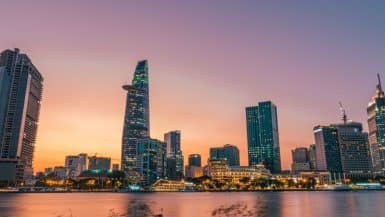
Hanoi Or Ho Chi Minh? Which Vietnamese City Is For You?

Vietnam or Bali: Which Southeast Asian Destination is Better?
Travel Far And Wide

18 Interesting Differences we noticed between North and South Vietnam
As a country that was only re-unified in 1975, there are of course many differences between North and South Vietnam. When traveling across Vietnam, you’ll notice plenty of fascinating differences from one region to the next, especially between the north and the south. These changes encompass everything from landscapes and languages to climates, cultures, habits and more. In the past some of these regional differences led to division and conflict. However today, Vietnamese are embracing all the unique characteristics of southern, central, northern, coastal, highland, urban, and rural Vietnam. One of the most enjoyable aspects of exploring Vietnam is experiencing these distinctions. We loved observing these changes, big and small, as we traveled through this incredibly diverse country.
1. English speaking
As soon as you land in Vietnam, you’ll realize that English is not widely spoken at all in the country.
We found that the further North you are in Vietnam, the less likely you would be to hear any English. In the regions north of Hanoi for example, it can be tricky to do things like place an order in a restaurant.
In the South, most people speak English, especially the younger generations. It’s easier to communicate, and it’s easier to find English translations. Because of this, in the south, the Vietnamese culture is more accessible to outsiders.
Despite some occasional difficulties at times, wherever we were in Vietnam, we always felt welcome, and many people helped us along the way. We always managed to understand each other at some point. It’s also refreshing sometimes to take a break from relying on English for communication.
2. Weather & climate
Vietnam’s climate varies drastically from north to south. Northern Vietnam experiences distinct seasons with a cold winter with snow and hot, humid summer that is influenced by monsoons. Southern Vietnam has a tropical climate. It has a wet season with heavy rains (from May to October) and a dry season (from November to April). Central Vietnam has a transitional climate with more defined seasons and occasional typhoons. These climate differences are very important to consider when planning a trip to Vietnam.
3. Motorcycle & Use of Horns
Vietnam is undoubtedly the land of the motorcycle. With 50 million of them, it is the fourth highest country in the world for the number of motorcycles. Nearly 9 in 10 Vietnamese people own at least one scooter or motorcycle! Motorcycles are ubiquitous all over the country, however, you may notice that in the north (especially Hanoi) people are constantly using their horns! This isn’t to be rude but it’s a way for them to let you know that they’re driving around you. In the South, horns and beeping are less common.
Wherever you are in the country, you will be sure to see many types of two-wheelers, often transporting a whole family, large furniture, or a large number of animals (pigs, geese, goats, or ducks)!
4. People and Fashion
We found the Northern Vietnamese people tended to be more traditional, and the Southern Vietnamese to be more outgoing.
In terms of fashion, in the South, you may find that people dress more adventurously, and in a more relaxed Western style (jeans and t-shirts). This is contrasted with the North where dress sense is more discreet, reserved, and respectful of traditions. For example, in Hanoi you would be unlikely to see girls wearing anything like a short skirt, whereas in Ho Chi Min, this wouldn’t be anything particularly unusual. Another difference in terms of people was seeing the different ethnic cultures, after all, Vietnam is made up of 54 different ethnic groups. Each ethnic group follows their own traditions, wears different clothes, and has their own special beliefs. We learned a great deal about these distinctions at the Vietnamese Women’s Museum in Hanoi.
5. Language and accents
The Vietnamese language called Tiếng Việt is spoken across Vietnam and shares a common base between the northern, central, and southern regions. However there are many distinct differences from one region to another in vocabulary, tones, pronunciation, and accent. Even if you don’t speak Vietnamese, you’ll notice the distinctive accents and even some common words are different.
In general, the northern dialect is seen as the most formal and standard Vietnamese language. The southern dialects seem more relaxed with a melodic tone. Due to the region’s history, the southern dialects have influences from nearby countries such as Cambodia, and other languages like French and English. For example, the word pineapple is said “dứa” in North Vietnam, while in Southern Vietnam, you would use “thơm.”
While these differences exist, most Vietnamese speakers can easily understand both dialects due to today’s exposure to both formal and informal language in the media and more largely internet social media.
6. Road conditions
The road network in Vietnam has massively improved over the last decade. However, the northern part of the country has many mountains and more difficult terrains sharpened by extreme weather in winter. During our Ha Giang Loop motorbike Road Trip, we noticed a lot of roadworks on many miles. It is a constant challenge for local people to build mountain passes over high ridges and hard bends. Expect some muddy, bumpy, sandy, and difficult roads with potholes on some sections but it’s generally good enough!
The road conditions in the south are generally better as they’re easier to build on the flat land.
7. Westernization (brands, culture)
Westernization was for us the most striking difference between South and North Vietnam. As you travel from North to South you will see how the country changes.
The north has remained largely untouched by westernization and has strongly retained its own Vietnamese culture. If anything, regions North of Hanoi seem more influenced by China or Russia. Here there are very Western fast-food chains, large malls, or fashion brands (except fake designer clothing being sold in Hanoi!).
On the other side, Ho Chi Minh is the most westernized city in Vietnam . You can find McDonalds, Starbucks, and many shops like Zara or Uniqlo! People have a different way of life in the north compared to the south.
The south is also more business and finance oriented than the north and is home to more foreign companies’ headquarters. People are genuinely richer than in the north.
8. Agriculture
You can actually divide Vietnamese agriculture into three sections. In the top third of the country, with its mountainous landscapes and cooler climate, there is only one harvest per year. The central regions usually have two harvests per year. And incredibly, the the South there can be up to three harvests – in the same year!
It is no wonder that the South of Vietnam (particularly around Dalat and the Mekong Delta) is the agricultural heartland of the country.
There are also differences in the produce that is grown. In South Vietnam, the main crop is rice. The Mekong Delta, known as the “Rice Bowl of Vietnam,” is one of the world’s largest rice-producing regions. Southern farmers also produce a lot of exotic fruits like durian, mango, lychee, and dragonfruit.
In Central Vietnam, the most cultivated product by far is coffee which is mainly exported.
In North Vietnam, rice is harvested in September, other commonly grown crops are potatoes, wheat, tea, and maze. Livestock farming is also very important (buffalos, pigs, chickens).
9. Coffee & tea culture
Vietnamese love coffee. Even if they generally drink more coffee in South Vietnam, Hanoi is an exception! You will find a coffee shop at every corner of old town with so many crazy recipes. In the northern part of Vietnam, they much prefer tea.
10. Traditional Pho soup
Pho is the most-known Vietnamese dish in the world. Indeed, you can find this national dish on every corner of any Vietnamese town, city, or village. The best Pho’s restaurants have served the same guarded family recipe for decades. But there is a major difference between the North and the South recipes:
Hanoi’s Pho: earthy flavors, light broth, and transparent thin noodles.
Saigon’s Pho: complex flavors, rich and cloudy broth with thick noodles, and many toppings.
Both Pho’s recipes are great
11. Flavors & Fish sauce
The food in Vietnam is amazing from north to south with each region having its own local specialties. The main difference we noticed was that in the south – the food tends to be sweeter and spicier. The broths are darker, and they use more oil!
In the north, flavors are more herbal and sourer with fewer ingredients used in general.
The essential Vietnamese condiment, fish sauce is served with every meal in Vietnam. In the north, the fish sauce is salty while in the south it’s sweeter!
12. Trash & Plastic Waste
Arriving in Vietnam, we were positively surprised to notice how clean the streets in Hanoi are. Everyone is sweeping dirt from the front of their shops, restaurants, and homes. This is a long-standing tradition that is very important for the northern Vietnamese.
Sadly, in the south, we noticed a lot more plastic and trash in the Mekong Delta.
13. Landscapes
Travelling through Vietnam takes you to completely different types of landscapes making it one of the most diverse countries in South East Asia.
North Vietnam is filled with high mountains and hills covered by dense jungles. Between Ninh Binh and Phong Nha, you’ll be surrounded by limestone karsts, caves, and rivers.
The southern region is flatter with a countryside vibe and many beaches.
14. Ethnic diversity
Vietnam is a diverse country with more than 50 ethnic groups throughout the country. Most of Vietnam’s population is of Kinh ethnicity (often known as “Viet”), but the rest of the significant ethnic minority communities are dispersed between North and South Vietnam. In the northern regions, you will find the Tay, Thai, Muong, and Hmong who live in the mountains and have their own dialect, customs, and traditions.
In South Vietnam, there is a more diverse range of ethnic minorities such as Khmer, Chinese, and Cham people due to the proximity with Cambodia and the Mekong Delta is an important trading hub in Southeast Asia.
15. History
Vietnam has a rich culture and history that is mostly in the North. The Ancient imperial capital Hoa is near Ninh Binh. In the center of Vietnam, the city of Hue played a major role during the French Colonization and years after. There are so many temples, palaces, citadels, and historical sites in North Vietnam. The power and most institutions are in Hanoi today. Whilst Ho Chi Minh is an important city in terms of culture, art, media but if you want to understand Vietnam’s history, you’ll have to travel North.
16. Rice Wine & beers
Although rice wine is drunk all over the country, it is the national drink in North Vietnam. Made from fermented rice and infused with herbs or flowers, the hearty rice wine is often home-brewed and drank like tea to keep warm during the cold winters. While traveling in north Vietnam, you will be offered a lot of rice wine in shot glasses at night – it’s a way to be hospitable and make you feel welcome! The only other drink loved in North Vietnam is the ice-cold Bia Hoi beer. This light lager beer brewed daily, popular with locals and travelers is refreshing and very cheap!
In South Vietnam, the favorite drink by far is beer. The French introduced the beer-drinking culture during the colonization and Vietnam is one of Asia’s largest beer-drinking countries today. Southern people love a lager beer – Saigon, Hanoi, Tiger or even Heineken you call it. The funny thing is that in the north they drink mostly Saigon beer, and, in the south, they love Hanoi and Tiger beer! Ho Chi Minh has also a lot of small breweries that serve great beers.
In central Vietnam, you can find the Dalat wine which is a fruity wine – worth trying if you are fed up with beers and rice wine!
17. Soccer on TV
We traveled from North to South Vietnam. Not a single Vietnamese ever mentioned anything about soccer or saw anyone playing in Hanoi or other northern cities. As soon as we arrived in Hue, we saw kids everywhere playing on the grass. We met lovely Vietnamese who loved to chat about football in Hoi An and it was on most screens in lively bars.
Dogs are everywhere in Vietnam but don’t be surprised to see them on the menu in some restaurants in North Vietnam. This is due to the Chinese influence bordering Vietnam.
Similar Posts

9 Incredible Things to Do In Dalat, Vietnam’s ‘Little Paris’ High in the Mountains

Which War Museums should you visit in Vietnam?

Vietnam – The Complete 1 Month Itinerary for 2024

10 Best Things to Do in Tam Coc (Ninh Binh Province)

Ultimate Guide to Phong Nha – Vietnam’s Hidden Gem

13 Best Things To Do In Hanoi
Thank you for your great information. Me and my husband are planning to go to Vietnam in September. Your information is a great input for us.
Leave a Reply Cancel reply
Your email address will not be published. Required fields are marked *
Save my name, email, and website in this browser for the next time I comment.
7 Day Itinerary in Lanzarote
13 best things to do in singapore.
- BACKPACKERS WANDERLUST - AN AWARD WINNING TRAVEL BLOG
- Work With Me

- DISCLOSURE & PRIVACY POLICY
- United States
- Cook Islands
- New Caledonia
- New Zealand
- Accommodation Goals
- Budget And Cost Of Travel
- Foodie Goals
- Packing & Planning
- Travel Inspiration
- Volunteering Abroad
- Working & Studying Abroad
- Other Travel Tips
3 Week Vietnam Itinerary: Best Route North To South (2024)
Come find out the ideal Vietnam 3 week itinerary for the ultimate adventure. Let’s talk about the best route, things to do, transportation, accommodation, and more during your 3 weeks in Vietnam!
Now Vietnam is for sure one of the best countries you can choose to backpack. It has such varied landscapes, delicious food, and awesome locals. Though it is actually a huge country with so much to offer.
It can be a bit overwhelming to figure out where exactly to go on your travels. Though thankfully there is a well-established backpacking route that I focused on travels in completing during my time in Vietnam.
Therefore I know how long you should spend in each spot, how to travel between them, as well as the best places to eat, sleep, and stay.
Our itinerary will start in the North of Vietnam, in the city of Hanoi. This place has excellent international flight routes ensuring you will easily be able to start your travels there. However we will end in another city called Ho Chi Minh City or Saigon, another spot with excellent international transport links.
This means you will easily be able to switch this itinerary around and do it back to front if your heart, and travel plans, desire. It’s the perfect Vietnam North to South itinerary.
We actually spent 4 weeks traveling this route in Vietnam, 28 days on the dot. Though we spent too long in some cities, so I have altered this Vietnam itinerary for 3 weeks.
Keep in mind that 3 weeks is the minimum amount of time to complete this route with the days in each city I have recommended. Therefore I do not support trying to shorten it anymore.
If you are looking at getting off the beaten track and away from other travelers, then I will say it now; this is not the itinerary for you. This is assuming you are visiting Vietnam for the first time and want to see some of the best places it has to offer.
We will keep you on the well-trodden backpacking Vietnam route. Though with a few extra tips and tricks are thrown in to take your adventure to the next level.
Now, let’s get into this 3 week Vietnam itinerary with all the information you need to know to have the ultimate adventure.
The Best 3 Weeks In Vietnam Itinerary For First-Time Visitors: Travel North To South With This Vietnam 3 Week Itinerary
Hanoi (Day 1 – 3)
Welcome to Hanoi ! It can be a bit overwhelming when you first touch down for your 3 weeks in Vietnam itinerary but trust me, this is one of the craziest cities in Vietnam. Enjoy being among the action!
Enjoy Vietnam’s capital city boasting a well-preserved mix of French and Chinese architectural influences. Wander the small alleyways discovering delicious hidden way local food stalls.
Look in awe at the incredible cathedral contrasting against the noisy motorbikes fulling the road. This city is an excellent starting point for some excellent multiday trips such as Sapa, Ha Long Bay, and Mai Chau.
You will actually need to pop into Hanoi for a couple of extra nights as stop-offs between these multiday trips and other destinations in Vietnam. This is simply because you don’t want to book your other transportation on the same day in case you miss it due to weather, traffic, or simply unforeseen circumstances.
I know it is a hassle, so ignore the extra overnight extra if you want. However just be extra cautious of possible delays on the road.
I have actually written a full 3 days in Hanoi itinerary , with absolutely everything you need to know about spending time in this city, including what to do morning, afternoon, and night.
For now, let’s chat about some of the highlights this city has to offer and what you need to check out while here.
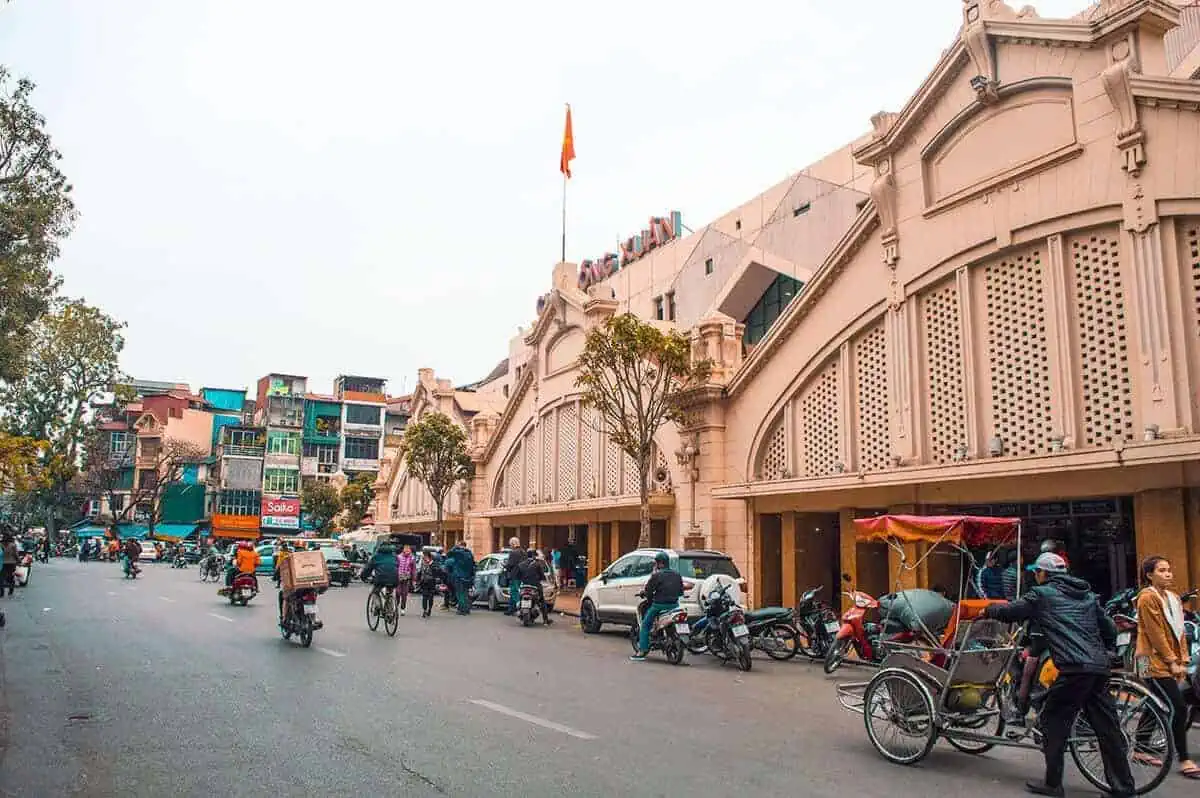
🚗 How I Book Cheap Transport In Vietnam: Baolau & 12.Go Asia
Getting From Noi Bai Airport To The Old Quarter
There are quite a few options you can take when figuring out how to travel from the Noi Bai International Airport to the Old Quarter, which is the best area to stay in Hanoi. They are also a surprisingly long distance apart as Hanoi is a crazy huge place. Depending on your transport method of choice it could take anywhere from 30 minutes to a full hour to travel the distance.
Prepaid Taxi: Taking a prepaid taxi is one of the most popular options when figuring out how to travel from the airport to the Old Quarter. This is also one I highly recommend. You can book a prepaid taxi via your accommodation before arriving in Hanoi. They will make sure the taxi driver is waiting at the airport holding up a sign with your name on it. When I was in Hanoi I paid $20.00 for my taxi from Noi Bai International Airport to The Old Quarter. We also arrived in the country in peak traffic and it took us over an hour to travel the distance in gridlock.
Taxi: You will find taking a regular taxi will be slightly cheaper than a prepaid taxi. It will be super easy to find a taxi. Simply exit the airport terminal and there will be a line of taxis waiting out the front. Your typical 4-seater car will cost somewhere between $14.00 – $18.00 depending on traffic. Organize a fixed price for the journey and do not pay for the meter.
Bus: The cheapest way to travel from Noi Bai Airport to the Old Quarter in Hanoi is by public bus.
- Number 86 Bus is the newest, and most highly recommended bus. It will take you directly to the Old Quarter and finishes at the Hanoi Central Railway Station. The journey will take around 1 hour and cost $1.30 per person.
- Number 7 Bus runs from the airport to Kim Ma bus station, on the western side of the Old Quarter. This is a long journey at an hour and a half and costs $0.40.
- Number 17 Bus: This is a similar bus to the above, though instead finishes at Long Bien bus station. It takes an hour and a half and costs $0.40 as well.
Top Things To Do In Hanoi
Time to start exploring the best of what Hanoi has to offer. You should have one-half day and a full day to explore if you are following this Vietnam itinerary, giving you time to check out what you would like.
This is a list of my personal recommendations:
Wander The Old Quarter – The Old Quarter in Hanoi is a crazy busy place. Think small alleys, stores spilling out the side of buildings, and motorbikes speeding down the street. There is nothing better to do here than simply get lost. Stop at that store selling those cute trinkets, grab a banh mi from that food cart and follow your nose to that delicious-smelling hotpot from around the corner.
St Joseph’s Cathedral – I was lucky enough to stay in a hostel next to St Joseph’s Cathedral during my time in Hanoi. If you are there on a Sunday pop inside during the service and watch. Just remember to be respectful and stay quiet down the back, so as to not interrupt.
Hoan Kiem Lake & Ngoc Son Temple – Hoan Kiem Lake is such a happening place in Hanoi and it is only a short stroll from The Old Quarter. This is the perfect spot to come and people watch as the world passes by. In the middle of Hoan Kiem Lake is Ngoc Son Temple. It is very picturesque, even looking at it from a distance from across the lake you can appreciate the beauty.
Train Street – One of the most popular attractions in Hanoi is Train Street. This is simply a narrow bit of train track that weaves between buildings in the busy city. Though the presence of quaint cafes in close proximity to the moving train has created a phenomenon and quite the Instagram hot spot.

Where To Stay In Hanoi
The area of Hoan Kiem, or The Old Quarter, is the best part of Hanoi for travelers. It is full of culture with temples, old gates, small alleys, and traditional shops, making it a picture-perfect spot.
It’s an obvious choice why many choose to stay here. Everything is within relatively close walking distance with plenty of affordable eateries, backpacker hostels, and luxury hotels.
On my most recent visit, I stayed at a hostel in the Old Quarter. You can check out my review of Chien Hostel for more information, though unfortunately, it has now shut down.
Nevertheless, there are still plenty of affordable, but lux, hostel options in the Old Quarter of Hanoi . One of these is Hanoi City Backpackers Hostel . Here you can find dorm beds starting from $5.00, and with a privacy curtain, personal lights, sockets, and more this is real value for money!
Here are my top picks for the backpacking Hanoi travel guide:
How To Get From Hanoi To Sapa
Sapa is the most Northern this 3 week Vietnam itinerary will take you. Hanoi allows for an easy and simple starting point to travel with plenty of direct options available to book.
Though getting from Hanoi to Sapa can take quite a lot of time due to being such a large distance apart, trust me it is worth it. Unfortunately, air travel is currently not an option. This means you will need to travel overland.
Bus: the trip from Hanoi to Sapa takes approximately 5.5 to 6 hours . Plus it is a direct route so there is no need to stop in Lao Cai like the train. Though as someone who has taken the bus from Hanoi to Sapa let me just say, pick your bus company wisely. Conditions in Vietnam vary greatly and even though your accommodation recommends it, that doesn’t mean it is just a good choice. This just means they are likely getting some sort of commission from it.
Train : from Hanoi to Lao Cai takes 8 hours and 5 minutes . Lao Cai is the nearest railway station, 35 kilometers from Sapa town. From Lao Cai Train Station, it takes approximately an additional 65 minutes to reach Sapa, though minivan journeys the rest of the way are super easy to book. Currently, Vietnam Railways operate this journey twice per day, with either the SP1 or SP3 train.
Car or taxi : it takes between 5 and 5.5 hours to travel from Hanoi to Sapa via the highway. If you have a bit more money to spend why not book a private taxi from Hanoi to Sapa. No doubt this will be the fastest and most comfortable journey you could take. It may even take you less than 5 hours if you don’t do any stops! The easiest way to prebook your private taxi is online with 12.Go Asia . They have a variety of companies on offer who can take you the distance. Prices start from $170.00 for a 9 person van one way.
Mini Van: Taking the minivan is another great way to travel from Hanoi to Sapa. This is slightly a more expensive option than the bus, but some of these minivans are fancy AF. Like they are known as limousine vans. Think plush, lazy-boy-style seats. One of the most popular companies to book with is called Eco Sapa Bus. You get 5 and a half hours of luxury where you can just relax in comfort for the whole time. There are two services every day with the first at 7:30 am and the second at 3 pm.
I recommend booking your journeys online with Baolau . Their website said I didn’t need to print off my ticket and instead just show my ticket on my phone to the attendant on the train. This is what I did throughout my travels in Vietnam and never once had an issue.
Being a third-party agent there is a small additional fee built into the ticket cost. Though this way is easier and cheaper than having to go to the train station!
Sapa (Day 3 – 6)
If you are wanting to experience the countryside in Vietnam then Sapa is the perfect place to do this. Think of bright green rice terraces, mountainous landscapes, and witnessing life in rural Vietnam.
This place is absolutely gorgeous and honestly quite different from other popular towns and cities along the tourist trail in Vietnam.
Whether you want to check out some incredible waterfalls, witness the amazing rice terraces, make friends with the local animals or even hike Fansipan Mountain known as the roof of Indochina.
Once you get here one of the best things to do on your Sapa itinerary is go trekking, allowing you to explore the magnificent rice fields that line the hilly countryside making for the most picture-perfect opportunities. You can also stay at a homestay with a local family. Ta Van is an excellent village to do this.
I have actually written a full 3 days in Sapa itinerary , with absolutely everything you need to know about spending time here, including what to do morning, afternoon, and night. Though for now, let’s chat about some of the highlights this city has to offer and what you need to check out while here.
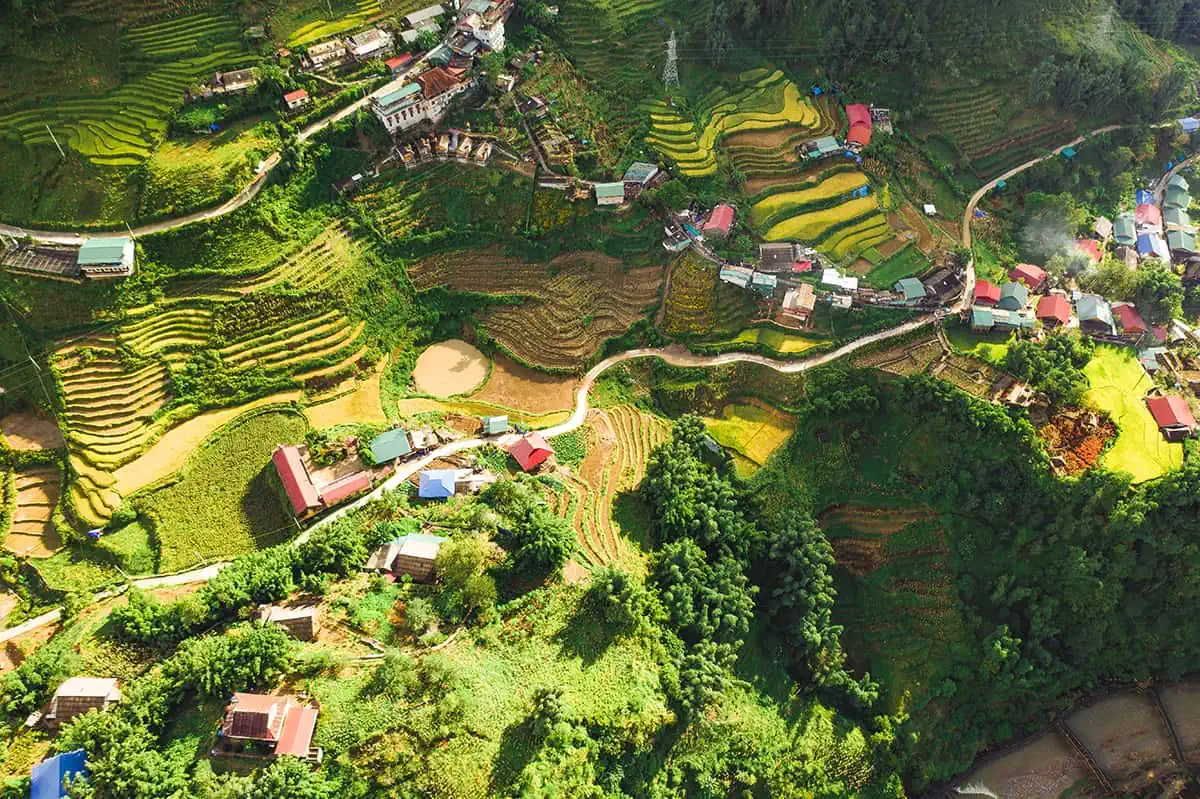
Trekking In Sapa
One of the best ways to go trekking around Sapa is on a guided tour. These are surprisingly affordable costing less than $20.00 for the day. The price general includes lunch and water as well.
You will be able to visit ethnic minority villages here in Sapa, which depends on exactly what tour you book. However, your guides will be able to take you through the beautiful rice terraces and to some of the most picturesque spots. You will be given plenty of opportunities to interact with the local villagers and learn about their way of life.
If you want to trek Sapa without a guide I first highly recommend you download Maps.Me on your phone. On it, you will be able to get an offline version of a map of Sapa, perfect if you do not have a local SIM card.
Alternatively, you can pick up a map of the surrounding area from the Tourist Information Office. If you are traveling during a part of the year with good weather then you can likely do a variety of hikes. The tracks will be maintained and dry so you should have no problem getting around.
Other Things To Do In Sapa
Sapa is a nature lover paradise full of plenty of things to do.
Mount Fansipan – Mount Fansipan is often referred to as the roof of Indochina. This is because it is not just the highest peak in Vietnam at over 10,000 feet, but also in the whole Indo-Chinese Peninsula which includes Laos and Cambodia! Therefore it is a must-visit!
Waterfalls – Silver Waterfall and Love Waterfall are well worth the visit while you are in Sapa. Love waterfall is a short 15 to 20-minute hike away from the main road. Though it is a peaceful walk underneath a beautiful forest. The entry fee is $3.00 / 70,000VND and it is definitely worth it. A few kilometers drive away is also Silver Waterfall. This can be seen from the roadside. Though I definitely recommend hiking up the stairs to the top for the best view.
Sapa Night Market – This is only held on Fridays, Saturdays, and Sundays. It runs from 4:00 pm to 10:00pm and is located on N1 street in the middle of town so is super accessible. This is the perfect place to partake in a little bit of souvenir shopping or perhaps dinner.
Home Stay In Ta Van – You will want to book your homestay in Ta Van in advance. There are so many places to choose from and the easiest way to book your Homestay is through Booking.com. This is what I used to book my homestay making it a hassle-free experience. You will just need to go through the listings and choose one of the homestay options or look at the map view and choose something, not in the main town.
Cat Cat Village – Cat Cat Village is a popular spot for tourists to visit while in Sapa. It is super accessible being located in the Muong Hoa Valley, just 3 kilometers from Sapa Town. It is a super easy walk to get here and the pathway is well-maintained. The entry fee is $1.10 / 25,000 VND. This place is home to the ethnic H’Mong and Dzao people and here they come together to demonstrate their handicrafts and skills to those interested. These skills include cultivating rice and corn as well as weaving fabric and creating handicrafts.

Where To Stay In Sapa
When choosing where to stay in Sapa you will be absolutely spoilt for choice. No matter your budget or the type of traveler you are there is something to fit all your needs. Though most people a mixture of a hotel in the main town and a homestay among the rice terraces.
Sapa town is absolutely full of affordable and more luxurious hotel options. From comfortable guesthouses to sparkling brand-new hotels, it all comes down to your budget and what you are willing to spend. The township is nice and compact making it easy to travel everywhere on foot.
I also recommend while you are in Sapa to do a homestay experience. This is where you will live alongside a local family. You can eat what they eat, see the incredible countryside, and explore to your heart’s content. When I stayed in Sapa I booked mine on booking.com and there were so many choices available. Make sure you read reviews so you know what exactly to expect.
Some will have heating, electricity, and wifi while others may not. They seem to be cheaper than the hotels in the main town, though they will be a lot more basic. Our homestay had limited electricity which meant evenings cuddled up around the fire while eating warm sugarcane.
Hanoi ( Day 6 – 7)
This one night in Hanoi is simply to allow you enough time to get back to the city before you’re Ha Long Bay adventures tomorrow.
It is a long journey, no matter if you book a train, bus, or private taxi, so no doubt you will need a good night’s sleep before venturing on.
Ha Long Bay (Day 7 – 8)
One of the most popular things to do when in Hanoi is take a tour of Ha Long Bay . This amazing UNESCO World Heritage Site is no doubt one of the top experiences to have when in Vietnam and leaves visitors breathless.
Though the problem is, that there are so many options to explore Ha Long Bay. They range in price from the horribly cheap ‘I am not sure how this boat is floating’ type to the luxury junk boat cruise with a six-course dinner included.
Halong Bay is easy to get to from Hanoi by day trip, overnight trip, or even for two or more nights, or you can jump on a day or multiple-day cruise from Halong City. I recommend booking the overnight cruise for the 3 weeks in Vietnam itinerary.
Doing the day trip won’t be long enough as it is a couple of hours one way to Ha Long Bay, and the multi-night trip will be too long. All tours you book should include a return transfer to Hanoi, and I recommend utilizing this service for ease.

Choosing A Ha Long Bay Cruise
Now there is an absolute assortment of cruise options you can book for exploring Ha Long Bay. Honestly, it can get quite overwhelming.
I recommend checking out reviews and booking based on other people’s experiences. Just because it is cheap doesn’t necessarily mean it is going to be bad, and just because one might be the most expensive doesn’t mean it is going to be the best.
Unfortunately, since COVID-19, the one I booked doesn’t seem to be operating anymore. However, I did a 2-night trip to Cat Ong Island. Our first day was spent on board the junk boat, the second day exploring Cat Ong Island, and the last day checking out the nearby Cat Ba Island.
This gave us great variety as we weren’t just stuck on one boat for three days (though I did do an 11-day cruise and loved it). This tour was one of the budget backpacker ones, but not the infamous one where everyone gets drunk and vomits everywhere, this cruise was a bit more chill.
Luckily Get Your Guide has some excellent options available for Ha Long Bay cruises perfect for your Vietnam 3 week itinerary:

Hanoi To Ninh Binh
After your time venturing Ha Long Bay has come to an end your tour operator will transfer you back to Hanoi so you can continue your travels. Luckily the journey from Hanoi to Ninh Binh is relatively short, so you will be able to do this on the same day.
Bus: You will find plenty of buses traveling from Hanoi to Ninh Binh. Most hostels and hotels will be able to book a bus for you which includes hotel pick up, and it should cost between 200,000 – 250,000 VND / $8.50 – $10.70.
Train : 6-7 trains leave from Hanoi to Ninh Binh railway station every day, of which SE5 is the most popular option as it offers very convenient travel times. Soft seats sell between 73,000 VND / $3.10 and 99,000 VND / $4.25. Though you also have the option of booking a sleeper berth from 115,000 VND / $4.90.
Taxi : If you are in a rush, or perhaps traveling with a group of people then you can always book a taxi. The journey is much quicker than the bus, only taking 2 hours to complete and you don’t have to go in circles picking up other passengers.
Mini Van: Taking the minivan is another great way to travel. This is slightly a more expensive option than the bus, but some of these minivans are fancy AF. Like they are known as limousine vans. Think plush, lazy-boy-style seats.
I recommend booking your journeys online with Baolau or 12.Go Asia . I used Baolau and their website said I didn’t need to print off my ticket and instead just show my ticket on my phone to the attendant on the train.
This is what I did throughout my travels in Vietnam and never once had an issue. Being a third-party agent there is a small additional fee built into the ticket cost. Though this way is easier and cheaper than having to go to the train station!
Ninh Binh (Day 8 – 10)
Ninh Binh is certainly a place that has grown in popularity over the past few years thanks to those beautiful Instagram posts from the tall karst mountains with views for days.
Here you can hike to the tallest viewpoints, paddle through caves, or soak up the culture. It is another beautiful spot in Vietnam and highly worth visiting during your 3 week itinerary Vietnam.
For a lot of people, this is the most beautiful destination in Vietnam and will leave you in awe. Nearby Ninh Binh you also have the picturesque town of Tam Coc which is surrounded by mountains with homestays and dreamy accommodation galore.
This spot is a lot less touristy than the forever-popular Ha Long Bay. Even though there might not be any sea, here you will find rivers and lakes in contrast with the huge karst mountains.
You are actually able to enjoy the peace and nature here without all of the crowds.

Things To Do In Ninh Binh
There is an assortment of awesome things to do in Ninh Binh that’ll get you in touch with nature and its impressive landscapes.
Trang An Boat Ride : No doubt this is the most popular thing to do in the region, and where the majority of people get those fancy Instagram pictures. This boat ride will take you through the limestone mountains on a maze of rivers and pass through caves. There are three different tour routes to choose from varying in length, but they all cost the same.
Hang Mua Viewpoint: For the ultimate view, it is definitely worth checking out Hang Mua Viewpoint. It may be quite a climb up the 500 stairs, but it is so worth it. Be aware that the staircase splits about halfway up. The right leads to a tower on the lower point. The left continues upward to the highest point where you can find the pagodas with an elaborate white dragon statue, oh and of course the incredible view.
Hire A Bicycle: One of the best things to do in Ninh Binh is simply to explore at your own pace. Many hostels and homestays offer super affordable bike rentals, and since the region is relatively flat it is super easy to ride around. It is definitely worth cycling to the nearby Tam Coc and exploring the main street and around the lake.
Bich Dong Pagoda: This picturesque spot is found hidden underneath one of the limestone mountains that dot the region. As you explore you will discover more temples protruding from the mountainside. The great thing about this Pagoda is that it is an easy bike ride from downtown Tam Coc, or you can take a taxi or a grab car.

Where To Stay In Ninh Binh On The Vietnam North To South Itinerary
Now as you will see you can either choose to stay in Ninh Binh or the small nearby town of Tam Coc. They are about 15 minutes apart from each other, though the main difference between these two places is what you can find in the towns themselves.
Ninh Binh is larger than Tam Coc. Here you will be spoilt for choices in terms of accommodation, restaurants, and cafes. It’s easy here to find a hostel or a modern hotel.
Though being a larger place means Ninh Binh doesn’t have that whole quaint nature town that a lot of people travel to this region to experience.
In contrast, Tam Coc is a much smaller quaint place. You will be sleeping in a homestay here, though you will get to experience the best this region has to offer. Once the crowds pack out during the day you will have this piece of paradise to yourself.
Ninh Binh To Hue
Next up you will need to travel from Ninh Binh to Hue. Unfortunately, this is going to be quite a long journey. However, if you time it right you could organize your transport overnight so you don’t lose out on a day of exploring.
Train : 6-7 trains are leaving from Ninh Binh to Hue railway station every day, though you will be best off taking the overnight train. There are two different overnight trains, taking between eleven and a half to twelve and a half hours. This should give you more than enough time to have a decent night’s sleep, and enough energy to explore the following day. Prices cost between 500,000 to 600,000 VND / $21.40 – $25.70, though you also have the option of booking the more pricey luxury carriage at a higher price.
Bus: You will find plenty of buses traveling from Ninh Binh to Hue. The bus ride takes 11 to 12.5 hours. Although this option is the cheapest at 325,000 VND / $13.50, it is not recommended. The overnight sleeper buses in Vietnam are notorious for being dangerous, and the train isn’t that much more expensive, for a whole lot more comfort.
Fly: As Ninh Binh does not have an airport you will need to travel back to Hanoi to catch a flight to Hue.
I recommend booking your journeys online with Baolau or 12.Go Asia . I used Baolau and their website said I didn’t need to print off my ticket and instead just show my ticket on my phone to the attendant on the train. This is what I did throughout my travels in Vietnam and never once had an issue.
Hue (Day 10 – 12)
Hue is well worth checking out while on your 3 weeks in Vietnam itinerary. Imagine a city equal amounts quaint and bustling, a beautiful river running along the middle, and an impressive citadel smack bang right in the middle. This is Hue and it is such a unique place.
Honestly, it is quite different from the other towns you’ll visit on this Vietnam itinerary and that is why it is a must-visit. It may not have too much in terms of incredible nature.
To gain a better understanding and appreciation of the history and culture of Vietnam I highly recommend a visit to Hue.
Honestly, you do not need too long to explore here which is why I have recommended spending two days in Hue . Though I have heard of people just spending the day here.
They arrived early morning on the overnight train from Hanoi and then took a late-night train out. This has given them a decent chunk of the day to explore the main thing to do here which is the Hue Citadel or the Imperial City Of Hue.
I have actually written a full 2 days in Hue itinerary , with absolutely everything you need to know about spending time in this city, including what to do morning, afternoon, and night.

Best Things To Do In Hue
Well, the Imperial City of Hue is no doubt the main reason why most people travel to Hue. Though, in saying, that there are plenty of other things to do here. as well.
The Imperial City of Hue: Let’s start with the most obvious thing to do here in Hue, visit the impressive Imperial City of Hue. It was built in 1362 and in 1993 was recognized as a UNESCO World Heritage Site. Between these two periods of time, the walls of the city have witnessed a lot of history, even serving as the capital of Vietnam from 1802 to 1945 during the reign of the Nguyen dynasty. Purchase your entry ticket for 150,00 VND / $6.60 and enter inside to explore. The grounds are massive! Personally, we spent 3 hours exploring Hue Citadel. Though in all honesty that felt a bit rushed and we would have stayed longer if it wasn’t so hot.
Thien Mu Pagoda: Thien Mu Pagoda is best known for how high it is. Reaching seven stories, and climbing up the stairs you will be treated to incredible views across the river over the pagoda gardens. To get to Thien Mu Pagoda I recommend either hiring a motorbike from in town, or you can just simply take a Grab taxi (Southeast Asia’s version of Uber).
The Abandoned Waterpark: It will be best to get yourself some wheels to explore The Abandoned Waterpark. Apart from being a reasonable distance away from the city of Hue, the park itself is pretty spread out, and to see it all you will need a motorbike to get around. Also, bring along some extra cash as you will need to bribe a security guard to enter the premises.
The Royal Temple of Tu Duc: The Royal Temple of Tu Duc is a beautiful temple site with a lot of Chinese-inspired architecture. This is also where you will find the tomb of Tu Duc who was the Emperor between 1847 and 1883. The entry fee is 100,000 VND / $4.10.
Tu Hieu Pagoda: This is actually a free pagoda to visit and is home to approximately 70 monks. It’s a much more understated pagoda, though it provides a good contrast to Tu Duc Temple.

Where To Stay In Hue
When choosing where to stay in Hue you will be absolutely spoilt for choice. No matter your budget or the type of traveler you are there is something to fit all your needs.
Whether you want an affordable hostel, welcoming guesthouse, or luxury hotel.
I personally stayed in a lovely little guesthouse in Hue, which was the perfect budget option. There are some great guesthouse choices for less than $20.00 per night.
Alternatively, if you are traveling solo you can find plenty of cute, modern, and clean hostels here also.
Hue To Hoi An
It is relatively straightforward to travel from Hue to Hoi An by plane, bus, or train. However, the way I highly recommend is to do a Jeep Tour over the Hai Van Pass.
This will turn a mundane few hours into an exciting few, checking out some more of the incredible landscapes, and roads, Vietnam has to offer.
This is the perfect top-gear moment where you will ride in an army-style Jeep over the Hai Van Pass. Depending on which tour you decide to book you will also get a chance you check out some other spots of interest along the way.
This could include Marble Mountain, Lang Co Bay, Tam Giang Lagoon, visiting some local villages, and more.
If you want to travel by train you will need to travel to Hue to Da Nang by train and then transfer from Da Nang to Hoi An by bus or taxi.
Hoi An (Day 12 – 15)
Hoi An is a great spot to stop off for a few days to enjoy the beach, culture, and countryside. This is one of the top tourist destinations in Vietnam.
It is equal parts quaint and beautiful, especially in the ancient town. Imagine lanterns lighting the night sky, delicious food, and some incredible photo opportunities.
There are so many things to do here in Hoi An you will be spoilt for choice. Whether you enjoy lying by the beach, exploring the jungle, or hitting the shops, there is something here for everyone.
I backpacked Hoi An in the middle of my Vietnam adventures as I made my way overland from North to South. We found this township quite unlike anything we had come across in this country so far.
Honestly, it was extremely touristic, though nevertheless very beautiful. We stayed a short walk from the ancient town meaning we could be among the action when desired, but could also enjoy a bit of peace.
During our stay, we also traveled around by motorbike and bicycle to check out the best attractions on offer.
I have actually written a backpacking Hoi An itinerary guide , with absolutely everything you need to know about spending time here. This includes what to do morning, afternoon, and night.

Things To Do In Hoi An
Hoi An is an awesome town with literally so many things to do. It can quickly become any visitor’s favorite spot in Vietnam and it is easy to see why.
So let’s get into what you should do in Hoi A n for an epic time on your 3 weeks in Vietnam backpacking itinerary adventure.
Take a cooking class: This is a famous activity to do here in Hoi An and is an excellent way to learn some of those delicious Vietnamese dishes. You can check out Get Your Guide for an excellent cooking class that is very popular with travelers. Highlights include exploring the markets in Hoi An to pick up ingredients, cruising down the Thu Bon River, exploring the coconut palm forest by the crazy-looking bamboo basket boats, and tasting some delicious local dishes.
Shop In The Ancient Town: This ancient town is what makes Hoi An so special. It managed to survive the Vietnam War mostly unscathed and is said to have been settled for at least 2000 years. There is an entry fee to the ancient town of 120,000 VND / $5.00 per person.
Fujian Assembly Hall: This was originally a pagoda built by the Vietnamese in the 17th century. It was then sold to Hoi An’s Fujian-born community as a meeting place to socialize.
The Old House Of Tan Ky: One of the most popular houses in the Ancient Town is the Old House Of Tan Ky. It belongs to the descendants of a wealthy family of local merchants. It was built back in the 18th century. You will notice a mix of Japanese, Chinese, and traditional Vietnamese architecture throughout the house.
Japanese Covered Bridge: One of the most iconic landmarks in Hoi An is no doubt the Japanese Covered Bridge along the river running through the Ancient Town. This structure dating back to the 16th century has been incredibly well preserved over the years.
Get Some Tailor-Made Clothing: Once you’re in the city you will notice the wide variety of clothing stores. A popular choice is Kimmy’s Custom Tailor which is located just outside of the old town. They are well known for their professional service and quality materials.
My Son Sanctuary: This is a UNESCO World Heritage site and it is marketed as the Angkor Wat of Vietnam. Booking a tour is probably the most popular option and is surprisingly affordable. I recommend booking a sunrise tour of My Son Sanctuary . This allows you to beat the crowds, and the heat while having the grounds for your tour group.
Cycle To The Beach: Hire a bicycle and make your way to the coast to An Bang Beach. This is an easy straight cycle 4 kilometers from the ancient town. Seriously it is nearly impossible to get lost, and if you do, just follow all the other bikes.
Tra Que Vegetable Village: Located outside of the popular tourist destination of Hoi An city center and in the countryside is Tra Que Vegetable Village . Full of lush green fields, roaming water buffalos, and locals hard at work making a living. It is the perfect contrast to the bustling Vietnamese streets which lay a few hundred meters away.
Thanh Ha Pottery Village: Here you will find cups, jars, bowls, and pots crafted here are exported all over the world. There is an entry fee into Thanh Ha Pottery Village of 30,000 VND / $1.30. This amount includes a little souvenir which you will receive from one of the houses, but I will leave what you get a surprise!
An Bang South: For a bit more of a quiet beach, head to An Bang South. This is another excellent beach you can chill out on for the afternoon. Hire a sun lounger and an umbrella and sit back as you listen to the waves slowly crash onto the shore.
Marble Mountain: If you are willing to head further away from Hoi An you can visit Marble Mountain in Da Nang. Marble Mountain, also known as Thuy Son, is one of five marble and limestone mountains that rise out of the ground in central Vietnam. On top, you will find colorful Buddhist temples, marble statues, caves, and tunnels.
Hoi An Central Market : This is an excellent place to purchase some souvenirs while you are in the town. Here you will find a huge mixture of products here including silk pieces, lanterns, and other textiles, as well as local food and aromatic spices.
Cam Kim Island: Cam Kin Island is about 30 minutes away from Hoi An. It is easy enough to catch a local ferry here from D Bach Dang. Here you will see numerous artisan woodcarvers who are known for having carved some of the most famous public buildings in Hoi An. Personally, I thought it was a little bit touristy. Though if it is something you are interested in checking out, why not do it?

Where To Stay In Hoi An On Our 3 Weeks Vietnam Itinerary
Whether you want a beachside hotel, city homestay, or hostel set in the countryside there is something here for everyone.
However if you are limited on time in Hoi An, I recommend you stay in the central township area. This will keep you near plenty of delicious restaurants, and things to do, plus you don’t have to deal with hiring a motorbike to get around.
The homestay I stayed in while visiting Hoi An is called Little Leo . This was such a friendly and welcoming hostel/ homestay. It was the perfect choice for 2 travelers on a budget.
We paid $7.00 for a 4-bed dorm room which also included a delicious breakfast and free bicycle hire. The lady who ran it was super helpful and they offered super cheap tours which was a bonus.
Here are my top picks for the backpacking Hoi An travel guide:
Hoi An To Nha Trang
Now you will need to travel from Hoi An to Nha Trang for the next part of our 3 weeks in Vietnam itinerary. Once again, this is going to be another long journey as it’s a 500-kilometer distance being covered, but don’t worry this will be the last long one.
However, if you time it right you could organize your transport overnight so you don’t lose out on a day of exploring.
Train : It is a 10-and-a-half-hour train from Hoi An to Nha Trang. Well technically you will need to travel to Da Nang to catch the train, but this is super easy to do and you can read more about how to do this in my Da Nang to Hoi An post . Prices cost between 500,000 – 600,000 VND / $21.40 – $25.70, though you also have the option of booking the more pricey luxury carriage at a higher price.
Bus: The trip from Hoi An to Nha Trang takes approximately 11 hours. However, this timeframe can vary depending on how often the bus stops and for how long. Hanh Cafe and The Sinh Tourist are the recommended companies that service this route.
Fly: Thankfully it is only a 1-hour flight, though you will need to travel from Hoi An to Da Nang which is where you will find the nearest airport. Flights in Vietnam are pretty cheap with an assortment of affordable airlines operating.
Nha Trang (Day 15 – 17)
Nha Trang is an awesome coastal destination boasting some of the best beaches in Vietnam. I am not going to lie, one of my personal favorite things to do here in Nha Trang is to simply relax, and after all that traveling in Vietnam, it is likely you need some relaxation time as well.
Pull up a chair on the beach, listen to the waves lapping on the shore, and the palm trees swaying in the wind.
Honestly, if you are not a beach-goer type of person, then you may want to give Nha Trang a miss. Perhaps swap it out for Da Lat. Though if you are ready to work on that tan and catch some rays this is the place to be.
I have actually written a backpacking Nha Trang and 3-day itinerary post with absolutely everything you need to know about spending time in this city, including what to do morning, afternoon, and night.
Though for now, let’s chat about some of the highlights this city has to offer and what you need to check out while here.
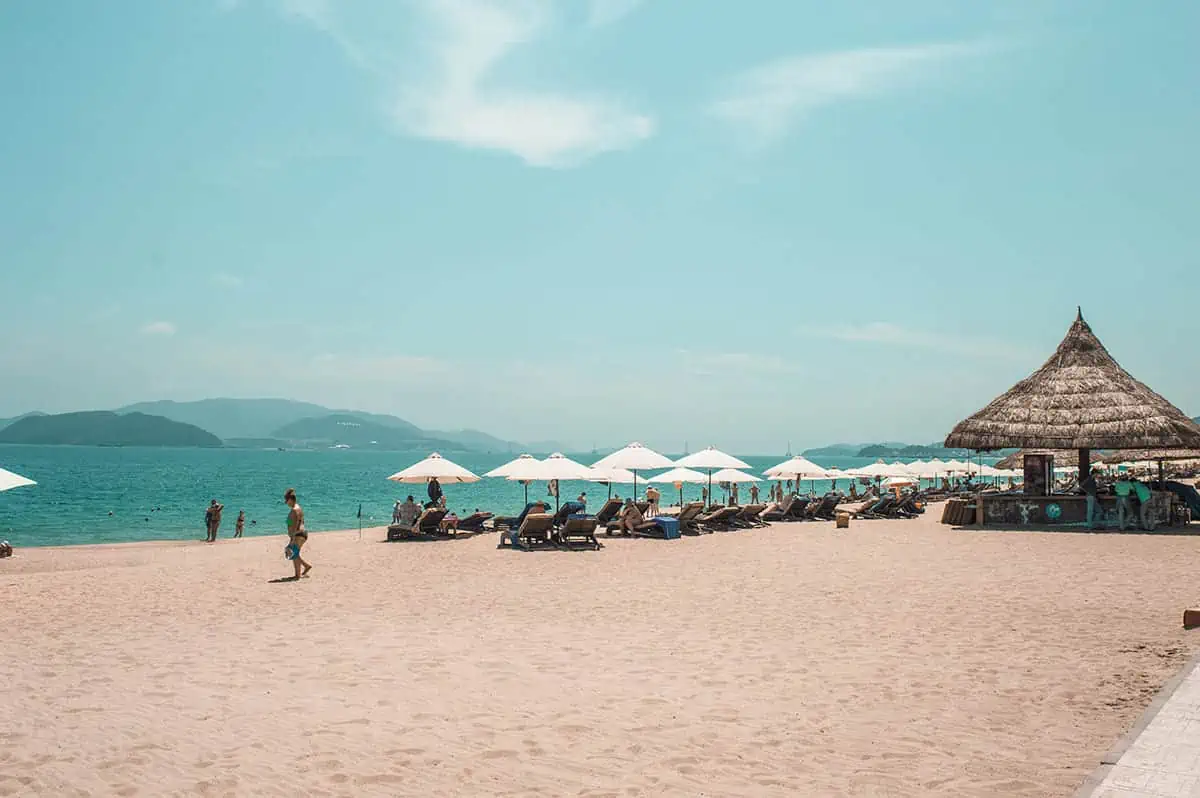
Things To Do In Nha Trang
Don’t worry there is more to do in Nha Trang than just visiting the beach! Even though that may be my favorite. Here are my top picks of things to do in Nha Trang:
The Beach: It’s incredible how such a beautiful beach in Nha Trang is located right in a city. The beach itself stretches 6 kilometers along the coast side, providing plenty of areas to swim. The most popular area is Tran Phu Beach nearby a lot of the guesthouses and resorts. Be aware little beach bars are located quite some way along the shoreline and each one sets up their own chairs. Some of these locations charge just for use of the chairs and others have a minimum spend that you need to do at their little beach shack, either that is on drinks or snacks up to you.
Po Nagar Cham Towers: This place is one of the most popular sights of Nha Trang and is still an active site for worship by Cham, Vietnamese Buddhists, and Chinese people. The Cham people are an important part of the Vietnamese culture as one of the ethnic minorities in the country. It is located just 2 kilometers out of the city center so is very accessible.
Snorkeling Tour: Why not go snorkeling in Nha Trang! Luckily for ocean lovers like me, Nha Trang has over 12,00 hectares of marine reserve. This coral-filled area is known as Hon Mun Marine Protected Area and is where you will visit. It is the perfect place for both diving and snorkeling as the water is not too deep. Ultimately making it ideal for people of all expertise.
Vinpearl: Here you can find shows, rides, a zoo, an aquarium, gardens, and even a large water park area, all under VinWonders. You will definitely need a full day to explore it all! The tickets for VinWonders and the cable car return trip cost 880,000 VND / $38.00 for adults. It is more of a pricey activity to do in Nha Trang. Though it is certainly worth it for a day of fun out in the sun.
Thap Ba Hot Springs and Mud Baths : Nha Trang is also known for its mud baths. Thap Ba Hot Springs and Mud Baths are one of the most popular places for this experience. The mud is said to have healing properties thanks to its high mineral content and people usually slather their skin with the mud and then lie down in the bath and let it work its magic.
Visit the Buddha : One of the main landmarks of Nha Trang is the large Buddha which sits on one of the hills overlooking the city. You can find it on the summit of a hill behind the Long Son Pagoda. It is sitting on a pretty lotus blossom and measures an impressive 14 meters in height.

Where To Stay In Nha Trang On The 3 Weeks Vietnam Itinerary
There are heaps of options for where to stay in Nha Trang. Whether that is a hotel in the city, a cheap guesthouse, a beach resort, or a seaside hostel a little bit further out of town, there is something here for everyone.
I can highly recommend Tabalo Hostel which is where we stayed. It was a super modern spot and very aesthetic looking for an affordable hostel.
The bathrooms were great and always super clean and the beds were comfortable with a sturdy wooden design, much better than those flimsy metal bunk beds.
There are also heaps of affordable guesthouses here in Nha Trang. It won’t be anything fancy, but it will have everything you need for a decent night’s sleep.
Nha Trang also has an incredible amount of quite nice fancy beachside resorts. Unfortunately, this wasn’t in my budget, and if you’re reading this backpacking guide it’s unlikely to be in yours.
Nevertheless, you can find 3 to 4-star resorts for just $20.00 per night. For such a small step up in price you get a lot more including a pool to relax in.
Nha Trang To Mui Ne
Next up we need to travel from Nha Trang to Mui Ne for the next stage of our 3 weeks in Vietnam itinerary. Thankfully this is a relatively short travel day compared to the others.
The distance from Nha Trang to Mui Ne is approximately 220 kilometers.
If you are wanting a more detailed breakdown of this journey you can check out my Nha Trang to Mui Ne transport guide .
Train : The train ride will take around 4 and a half hours from Nha Trang to Mui Ne. However, you will also need to account to travel to Mui Ne from the Phan Thiet train station. This takes between twenty to thirty minutes. This route will also have you backtracking slightly. Prices start at around 120,000 VND / $5.10 for a soft seater journey.
Bus: The journey from Nha Trang to Mui Ne by bus takes around 5 hours. Though this timeframe can vary depending on how often the bus stops and for how long. Personally, I have done this route with The Sinh Tourist and had a stress-free experience.
Fly: Unfortunately at this time, you are not able to fly from Nha Trang to Mui Ne. There may be an airport in Nha Trang called Cam Ranh Airport (CXR), though there is not one just yet in Mui Ne. Don’t be too disappointed as it is in the works! The nearby town of Phan Thiet is getting an airport said to be completed in 2024.
I recommend booking your journeys online with Baolau or 12.Go Asia . Though in this route I think 12.Go.Asia is the best bet for booking with.
Mui Ne (Day 17 – 19)
Don’t worry we are not leaving the beach just yet, next stop is Mui Ne on this Vietnam itinerary 3 weeks. This cute little seaside town would be like any other if it wasn’t for the landscapes that surround it.
Think huge sand dunes with impressive views over the ocean, small village vibes, affordable accommodation, and food as well as nearby beaches to visit.
The main thing to do here in Mui Ne is to take a sunrise tour. This tour will take you to all the best things in Mui Ne so you can check out those impressive landscapes.
I have actually written a backpacking Mui Ne in 2 days itinerary , with absolutely everything you need to know about spending time here. This includes what to do morning, afternoon, and night.

Choosing A Sunrise Tour
Now I will let you know everything you need to know about booking a sunrise tour and why this is the best way to see the sights around Mui Ne. Walking down the street you will see all the hotels, travel agencies, and even restaurants, advertising this tour.
Sure it is an early wake-up time with your pick up somewhere between 4.30 am and 5.30 am, but trust me it is worth it.
That early start allows you to see the sunrise over the impressive white sand dunes. Plus this tour only costs 160,000 VND / $7.00 so it is a super affordable way to see the best Mui Ne has to offer. For this price, we shared a jeep with other people staying at our accommodation.
However, if you want a bit more freedom you can book a private jeep tour , which is still pretty affordable starting from $20.00 for the entire jeep!
White Sand Dunes: The first stop on your tour will be the White Sand Dunes to watch the sunrise. This will no doubt be one of your highlights here as it was mine. You can either pay a jeep to take you out or hire an ATV. Instead, if you are on a budget like I happened to be you can simply walk out to the dunes from the car park. It is a nice stroll and since it is the morning the heat of the day hasn’t started yet.
Fishing Village: Here you can see all the brightly colored fishing boats bobbing around in the water and fishermen pulling in their catches.
Red Sand Dunes : The third stop of the day is the famous red sand dunes. These are a lot more touristy than the white sand dunes simply because they back right onto the road, literally. This means you can often find large tour buses here, whereas in the white sand dunes you need a 4WD vehicle to access without getting stuck.
Fairy Stream : It is a really nice walk upstream to a waterfall. Though my favorite part was the colors. It was so incredible seeing these bright orange sand cliffs contrast against the green lush jungle.

Where To Stay In Mui Ne On The Vietnam Itinerary 3 Weeks
There is a wide assortment of places to stay in Mui Ne. Whether you are looking for an affordable hostel, beachside resort, or friendly guesthouse. There is a huge selection to be found.
Just be aware it can actually be super difficult to access the beach unless you are staying at beachfront accommodation. This was the mistake we made staying on the other side of the road, luckily there was a pool, but the beach would’ve been nice as well.
A good affordable option I would recommend is called EVA HUT Mui Ne Beach Hostel . With prices starting from $6.00 for a dorm room this beachfront backpackers hotspot is the perfect place to stay in Mui Ne.
This place is smack bang right on the beach, which was definitely something we were lacking during our stay.
Depending on your exact location on the main strip through town it can be quite difficult to access the beach due to all the buildings and no alleyways.
Mui Ne to Ho Chi Minh City
The last stage of the 3 weeks in Vietnam itinerary is traveling from Mui Ne to Ho Chi Minh City. Luckily, this is another relatively short journey, so it shouldn’t be too painful. The distance from Mui Ne to Ho Chi Minh City is approximately 225 kilometers.
You will find if you travel by road the start of this route is along the coast before heading inland to the bustling city. If you are wanting a more detailed breakdown of this journey you can check out Mui Ne to Ho Chi Minh City transport guide .
Train : If you want to take the train you will also need to account to travel to Mui Ne from the Phan Thiet train station. This takes between twenty to thirty minutes.
This route will also have you backtracking slightly. There is only one train that operates on this route daily, leaving Phan Thiet railway station at 13:20 and arriving in Ho Chi Minh at 17:35.
Bus: The journey from Mui Ne to Ho Chi Minh City by bus takes around 5 hours. Though this timeframe can vary depending on how often the bus stops and for how long. Personally, I have done this route with The Sinh Tourist and had a stress-free experience.
Fly: Unfortunately at this time, you are not able to fly. There may be an airport in Ho Chi Minh City, though there is not one just yet in Mui Ne. Don’t be too disappointed as it is in the works! The nearby town of Phan Thiet is getting an airport said to be completed in 2024.
Ho Chi Minh City (Day 19 – 21)
Welcome to our last stop on our 3 weeks backpacking Vietnam route, Ho Chi Minh City. This is the perfect ending point for your adventures where you can easily venture into neighboring Cambodia , or take an international flight further afield.
Ho Chi Minh City is a huge bustling place with loads of history. It is an excellent spot to educate yourself about the country, the culture, and the war.
If I am being honest Ho Chi Minh City wasn’t my favorite stop in Vietnam, I was still glad that I visited. There is a lot of history to explore in this city as well as numerous other things to do.
Also, you need to dedicate some of your time to checking out the delicious foodie spots. It is well worth spending a couple of nights here, and since it is such a huge place with so much on offer there is something for everyone.
I have written a full Ho Chi Minh City Backpacking Travel Guide, with absolutely everything you need to know about spending time here, including what to do morning, afternoon, and night.

Things To Do In Ho Chi Minh City
Time to explore our last destination on our 3 weeks in Vietnam itinerary, Ho Chi Minh City. This place is perfect for discovering some more of the history of the country. Whether you enjoy a spot of shopping, experiencing a different religion, or want to discover the history of the country, Saigon has something for everyone.
Cu Chi Tunnels: The series of underground tunnels played an important part in the War and was an impressive feat of both architecture and engineering. At its peak, there were over 250km worth of tunnels stretching along the countryside, some even leading from Saigon right to the Cambodian border. It is super easy to book a Cu Chi Tunnel tour once in Ho Chi Minh City or in advance online . I booked mine through a local travel agency and paid just $6.00!
Reunification Palace: This is one of the most significant places to visit while you are in the city. It is the former presidential palace for Southern Vietnam, where Saigon fell to the north in what marked the end of the war. You can see the palace from the outside for free. However if you would like to go inside there is an admission fee of 40,000 VND / $1.70.
The City Hall: The City Hall is a super impressive and beautiful building that is a popular landmark in Saigon. If you head here in the evening there always seems to be something going on and people chilling together. You can often find delicious snack-like street food here as well!
War Remnants Museum: The museum is dedicated to the terrible Vietnam War, here you can come and learn all about it and what people had to suffer through. The admission cost is 40,000 VND / $1.70 and you do need to set aside about 2 to 3 hours to see everything.
Notre Dame Cathedral: Surprisingly enough all around Vietnam, you can find colonial buildings from when the French were in charge. One of these is the Notre Dame Cathedral and it has become a popular attraction here in Ho Chi Minh City.
Central Post Office: The Central Post Office is located right next to Notre Dame Cathedral, so you may as well visit while you are nearby. It is free of charge to enter and you can even send a postcard back home from here.
Ben Thanh Market: It may be a bit touristy but no visit to Ho Chi Minh City is complete without checking out Ben Thanh Market. This is the perfect place to pick up some souvenirs, try out some local food, and simply watch the locals go about their day.
Bitexco Tower and Skydeck: If you are looking for an amazing view overlooking Ho Chi Minh City then you need to check out the Bitexco Tower . This is one of the tallest buildings in Vietnam! Make sure to visit the 49th floor where you can find the sky deck with a 360-degree view. The entry fee is a little more pricey compared to other things to do on this list at 200,000 VND / $8.90, but still incredibly affordable.
Do A Free Student Lead Tour: I actually tried out a free student lead tour during my time in Ho Chi Minh City and it was no doubt one of the best things we did in the city. We heard about it from other travelers who constantly raved about their experience, so we knew we had to give it a go.

Where To Stay In Ho Chi Minh City On The 3 Week Itinerary Vietnam
Ho Chi Minh is a huge city split into districts. The majority of backpackers and travelers decide to stay in district 1. This is well set up for tourists with plenty of restaurants, activities, accommodations, and transport links. Nearby is the famous Ben Thanh Market , and the popular nightlife spot of Bui Vien Street.
During our stay in Ho Chi Minh City, we decided to stay on quite a budget and book a small little hostel about a 15-minute walk out of the center. The hostel was run by a lovely gentleman, but it was more rooms in his house he had converted to dorm rooms.
It also featured those horrible old-school metal bunk beds you had as a child. Lastly, it was 35 degrees Celsius plus every day and we only had fans. For those reasons, I am not going to recommend it.
Nevertheless, there are still plenty of affordable hostel and hotel options available in the city. Here are my top picks for this backpacking Ho Chi Minh City travel guide:
Extend Your 3 Weeks In Vietnam Itinerary
Maybe you want to make the most out of your tourist Visa in Vietnam and spend the entire 30 days exploring this incredible country!
It is a great country and there is so much more you can do to turn this 3 week Vietnam Itinerary into a much longer journey. However, be aware you only really have an extra week available as you don’t want to overstay!
A lot of travelers will buy their own motorbike in Ho Chi Minh City or Hanoi and travel the country themselves. This allows you to get off the beaten track and explore at your own pace.
As cool as this sounds just be aware that riding a motorbike long distance isn’t the most comfortable thing in the world and you’ll be traveling much slower than if you were to take the bus or train.
Da Lat is a beautiful mountainous town in South Central Vietnam. It is a popular adventure and honeymoon destination with plenty of activities to keep you busy.
Some travelers venture here instead of going to Mui Ne. It is not connected to the main railway network in Vietnam so you will need to take a bus or flight to get to.
Da Lat is mostly comprised of a scenic mountain town that used to be a hill station during the French colonial period. As a result, you can find some beautiful architecture here.
Da Nang is the gateway to Hoi An which is why many people stop over here. I only stayed one night to catch a train the next day.
Though there are still plenty of things to do here, the most popular being Marble Mountain. It is also a popular spot for digital nomads being a modern city right next to the beach.
Located on the Southern Coast of Vietnam you will find the island of Phu Quoc. Imagine soft, white sand lining its shores with palm trees swaying. This is Vietnam’s version of the Maldives.
On land, you’ll find protected tropical rainforests, plenty of accommodation options, and great diving opportunities.
The Phu Quoc district itself encompasses 28 islands. However, you will find the majority of travelers visit and stay on Phu Quoc island, the largest in Vietnam.
FAQs About Backpacking Vietnam Route
How long do you need to travel thailand cambodia and vietnam.
If you are keen on traveling Thailand, Cambodia, and Vietnam I would recommend a minimum of 2 months, but you could make the most of 30 days entry visa and spend a month in each country.
Can US citizens travel to Vietnam?
Yes, of course US citizens can travel to Vietnam. However, like many other countries, US citizens do require a visa to enter Vietnam. You can organize this ahead of time at an embassy or get a visa on arrival.
Is it safe to travel by train in Vietnam?
No doubt one of the safest ways to travel Vietnam is by train. There is an extensive train network in the country and 90% of the time you will be able to utilize this to travel to your next destination in comfort.
How safe is it to travel to Vietnam now?
Vietnam is a pretty safe country overall. However, as a traveler, you need to be aware of petty theft and scams in Vietnam which often target tourists. Be aware of your surroundings and don’t use your camera or phone near the road; a lot of theft is drive-by snatchings.
What is the best way to travel around Vietnam?
The best way to travel around Vietnam is by taking the train. There is an extensive train network linking a lot of destinations in the Vietnam backpacking route so you can travel in comfort. Also, sleeper buses in Vietnam are known for not being safe due to road conditions and overworked drivers.
What is the best route to travel through Vietnam?
The most common, and best route to travel through Vietnam is either from North to South (Hanoi to Ho Chi Minh), or South to North (Ho Chi Minh to Hanoi). This way you will get to explore a lot of the country and experience many of the highlights. I minimum of 3 weeks is recommended if you plan on doing this Vietnam itinerary.
Your 3 Week Vietnam Itinerary
Now you have read all my recommendations on this incredible country you should have no issues whatsoever coming up with your perfect Vietnam backpacking route!
Whether you choose to explore the mountainous North, hit the beaches, or discover the lesser explored parts of this country you will no doubt be in for an awesome adventure.
Any Questions? Let me know in the comments!
LIKE IT? PIN IT!

Want more Vietnam Inspiration? Check out….
- 3 WEEKS IN VIETNAM ITINERARY
- COMMON SCAMS IN VIETNAM
- BEST THINGS TO DO IN VIETNAM
- COST TO TRAVEL IN VIETNAM & MY BACKPACKING BUDGET
- BACKPACKING VIETNAM TRAVEL TIPS
- TAKING A VIETNAM SLEEPER BUS: WHAT YOU NEED TO KNOW
- SURVIVING A VIETNAM SLEEPER TRAIN
- BACKPACKING HANOI TRAVEL TIPS
- 3 DAYS IN HANOI ITINERARY FOR TRAVELERS
- BEST HOSTELS IN HANOI
- VISITING HA LONG BAY ON A BUDGET
- DISCOVERING LAN HA BAY & CAT BA ISLAND
- HANOI TO SAPA
- 3 DAY IN SAPA ITINERARY
- WHAT IS SAPA LIKE IN FEBRUARY
- HANOI TO HUE TRANSPORT GUIDE
- VISITING THE IMPERIAL CITY OF HUE
- 2 DAYS IN HUE BACKPACKING ITINERARY
- HUE TO DA NANG: ALL WAYS TO TRAVEL
- DA NANG TO HOI AN: EASIEST WAYS TO TRAVEL
- TRA QUE VEGETABLE VILLAGE IN HOI AN, VIETNAM
- A MORNING AT THE MY SON TEMPLES IN HOI AN, VIETNAM
- THANH HA POTTERY VILLAGE IN HOI AN
- BACKPACKING HOI AN ITINERARY
- BEST THINGS TO DO IN HOI AN
- HOI AN TO NHA TRANG TRANSPORT GUIDE
- SNORKELING IN NHA TRANG
- BACKPACKING NHA TRANG TRAVEL ITINERARY
- BEST BEACHES IN NHA TRANG WORTH VISITING
- NHA TRANG TO MUI NE TRANSPORT GUIDE
- BACKPACKING MUI NE TRAVEL GUIDE
- BEST THINGS TO DO IN MUI NE
- MUI NE TO HO CHI MINH CITY: ALL WAYS TO TRAVEL EXPLAINED
- CHEAPEST TOUR OF THE CU CHI TUNNELS: IS IT WORTH IT
- BACKPACKING HO CHI MINH TRAVEL GUIDE
- HOW TO TRAVEL VIETNAM TO CAMBODIA: HO CHI MINH CITY TO PHNOM PENH
Disclaimer: This post contains affiliate links. So, if you click on it and purchase something, I get a small percentage at no extra cost to you. As always all opinions are my own and your support is much appreciated.
Related Posts

3 Days In Sapa: My Backpacking Sapa Itinerary And Tips (2024)
Find out the ideal 3 days in Sapa itinerary to ensure you have the ultimate [...]
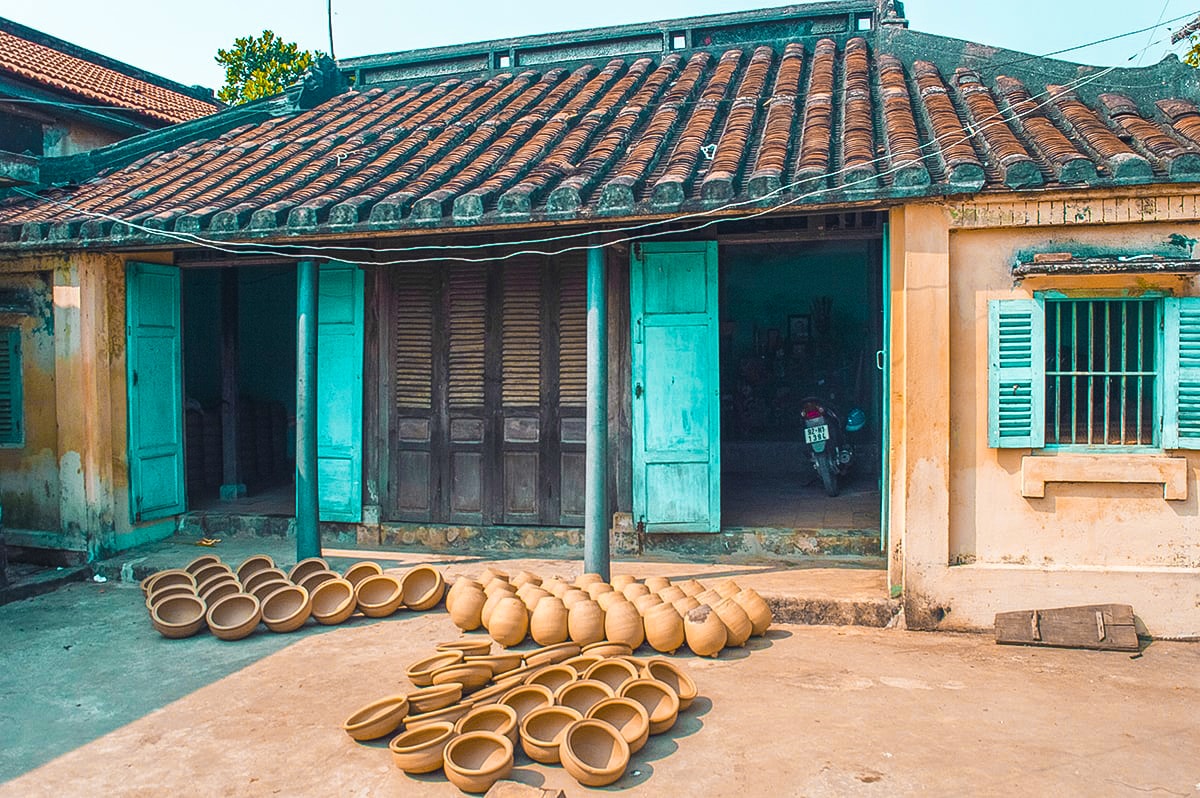
Discover The Thanh Ha Pottery Village In Hoi An, Vietnam
A Morning At Thanh Ha Pottery Village In Hoi An, Vietnam When in Hoi An [...]

Discovering Lan Ha Bay and Cat Ba Island, Vietnam
Discovering Cat Ong Island and Cat Ba Island in Lan Ha Bay With Ocean Tours [...]
36 Comments
Tasha Amy is a true backpacker at heart and has been discovering the world on a budget since 2015. Based in Gisborne, New Zealand she will spend many months each year traveling overseas as a solo female traveler before coming home and sharing her adventures online with you.
9 thoughts on “ 3 Week Vietnam Itinerary: Best Route North To South (2024) ”
Thank you for the extremely helpful guide!! We are planning a similar trip for June – do you think the weather will be an issue for us at this time or nice enough to explore and enjoy some beach days? Thank you!
Hi Tasha, what’s the general budget you think is needed for this route including travel, accommodation and daily expenses? I couldn’t see anything about this.
Hey Jacob, I actually have an entire post on what I spent during 1 month in Vietnam, which worked out to $25.00 per day. I did stay in hostels and forgo a lot of activities so looking back I would increase this to $35.00 per day so you aren’t missing out on anything. This is the post if you are keen to check it out https://www.backpackerswanderlust.com/cost-travel-vietnam/
Thanks for this helpful itinerary. How did you get from Sapa to Hoi An though? Couldnt find it mentioned
Sorry, I just finally realized that you returned to Hanoi after Sapa. The names are so confusing
Haha no worries, I always get caught between Hanoi and Hoi An :)
Thanks so much, this is incredibly helpful.
Hello, this guide has been awesome and super helpful for us as we are planning our honeymoon in Vietnam.
Hey Clay! Glad you found it helpful! Hope you have an incredible honeymoon in Vietnam!
Leave a Reply Cancel reply
Your email address will not be published. Required fields are marked *
North Vietnam vs South Vietnam: What's best for a 2-Week Vacation?
Are you wondering about the pros and cons of North Vietnam vs South Vietnam for your next vacation? We’ve got you covered with all the highlights of each region, including the amazing areas around the cities of Hano and Hoc Chi Minh City.
North Vietnam vs South Vietnam
With the huge growth of tourism in Southeast Asia, Vietnam is becoming a very popular vacation destination.
Vietnam has been on the backpacking map for a long time but only over the past few years have non-long-term traveller friends of ours started to ask our opinion on where in Vietnam they should visit if they only have 2 weeks in the country.
As a long-term backpacker, with all the time in the world, Vietnam is a very easy country to travel.
Not only is the tourist infrastructure well established, but the shape of the country makes it straightforward to get around.
Vietnam’s tall and thin body allows you to travel effortlessly from North to South or vice versa in almost a straight line, picking which of its many interesting sights, beaches, and cities you’d like to see along the way.
When booking a two-week trip to Vietnam the first thing to consider is which of the two main cities do you want to fly into.
The two main cities in Vietnam are Ho Chi Minh in the South and Hanoi in the North. Both Ho Chi Minh and Hanoi are great cities but you won’t want to spend much longer than 3 days in either if you have only a 2 week limit on your stay.
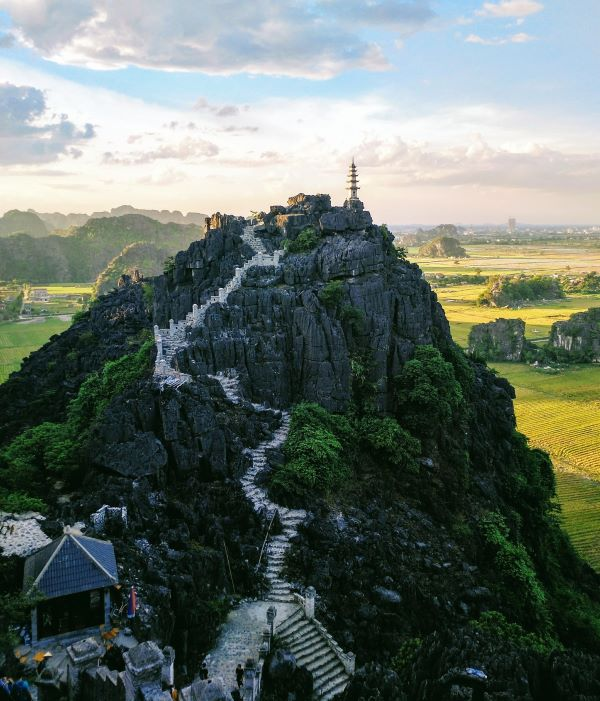
So to help you make that decision not only research those cities themselves but also find out what other Vietnamese destinations are within a comfortable distance for you to travel to.
Another important factor is when are you planning on going. The weather can change dramatically between the different regions as they have their own wet/dry/cool/hot seasons.
It pays to imagine the country as three separate destinations when researching the weather for your intended visit – north, central, and south.
In general, the best time to visit Vietnam is between November and April as these are the driest months across the country.
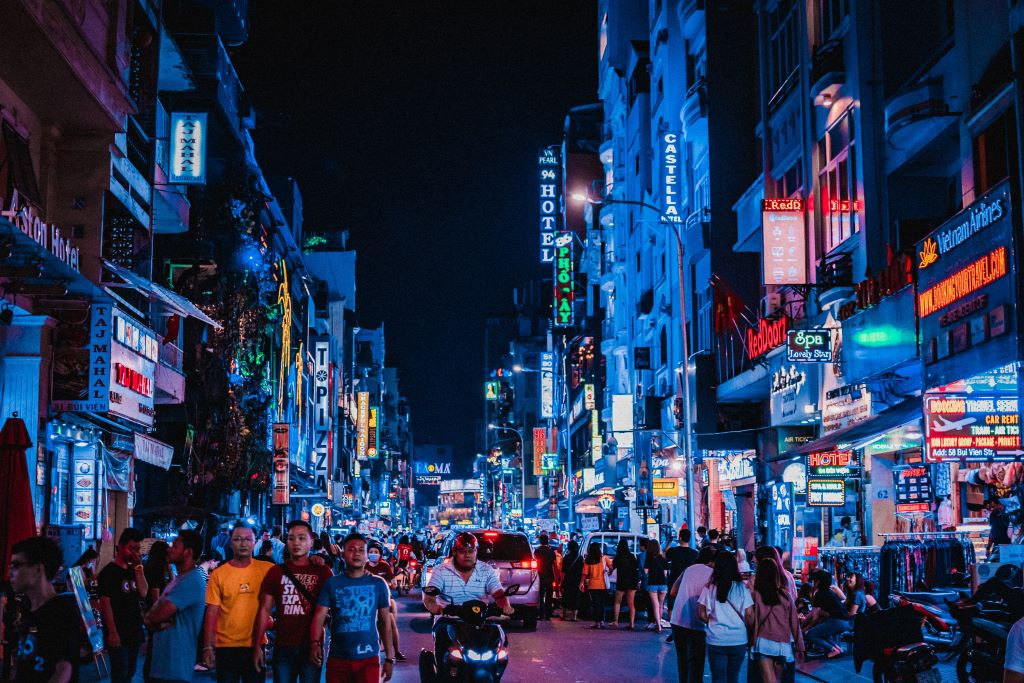
In general, the best time to visit Vietnam is between November and April as these are the driest months across the country. In general, the best time to visit Vietnam is between November and April as these are the driest months across the country.
But bear in mind that these are also the coolest months in the north if you’re looking for some warm weather to enjoy.
Temperatures in the south are almost consistently around 30 degrees Celsius year-round. Central Vietnam is mostly dry from January to August and wet for the rest of the year.
Temperatures around Central Vietnam can differ greatly at the same time of year due to the mountain ranges in the area.
And lastly, maybe Vietnam is part of a larger SE Asia trip such as a Vietnam Laos Cambodia Tour ? Depending on your route and which other countries you’re travelling to and from, this will dictate which part of Vietnam you’ll be entering.
So, get started by ordering your Vietnam visa , and let’s briefly compare the two cities.
Related reading: The Complete Guide to Booking and Riding Buses in Vietnam
South – Ho Chi Minh
Ho Chi Minh, or Saigon as some still call it, is Vietnam’s largest city and is the economic centre of the country.
With a population of 9 million it’s a busy place and with this comes heaps of traffic and pollution. But this is to be expected with any big Asian city so should not put you off.
The big draw card here is the many Vietnam War sites as this part of the country played a big role in the long and costly conflict between the North and South.
In the city itself, you’ll find The War Remnants Museum, which tells a very graphic version of the war through its many artifacts and photography galleries.
We also enjoyed exploring the city’s Reunification Palace which has been left almost untouched since April 1975 when the North Vietnamese forces took over.
Just outside the city, you can visit the Cu Chi tunnels, a fascinating network of narrow underground tunnels built by the Viet Cong in the 1960s to facilitate the control of a large rural area just outside the city.
Only a small number of tunnels are accessible now to tourists but at its peak, the network in the Cu Chi area alone had 250KM worth of muddy tunnels which housed kitchens, living areas, hospitals, and weapon factories!
One of our favourite city sights is Ben Thanh Market. Located in the lively city centre the covered market is everything you’d expect from a bustling Asian shopping and eating hub.
From local clothes piled high to souvenirs of all kinds but the highlight for us was the eating hall with a vast array of open kitchens cooking up every Vietnamese dish known to man.
Take a stall, grab a pair of chopsticks and tuck into some delicious local fare while you watch the locals go about their day and wide-eyed tourists taking in the sights and smells.
If bakeries are your thing, as it is ours, then Ho Chi Minh will have you smiling from ear to ear as you stuff your face with cakes, pastries, and baguettes in the city’s many French bakeries.
The Vietnamese have continued making these French delicacies since Vietnam gained independence from France in 1954.
In general Ho Chi Minh has a more Western feel with its wide city streets, high-rise buildings, and more modern Vietnamese population.
North – Hanoi
Hanoi, the Vietnamese capital, although not as large as its Southern rival is still pretty big with a population of 6.5 million.
Hanoi feels more Vietnamese and more authentic and the locals seem to be living a more traditional way of life compared to those in Ho Chi Minh.
With its abundance of French colonial architecture, the city is often referred to as the Paris of the Orient. We enjoyed wandering the old quarter, visiting the endless little shops and coffee houses.
Some of the streets are narrower and maze-like so hours can be spent meandering the pavement in search of your next noodle soup hit.
Hanoi does have its fair share of traffic and noise but it’s not as fast and furious as Ho Chi Minh. And even if it’s still too much for your liking Hanoi has plenty of green spaces to get away from it all.
Hanoi is a city of leafy boulevards, peaceful parks, and calm lakes. Hoan Kiem Lake is based in the historical centre and is a popular place for walks, picnics, and morning t’ai chi classes on the shore.
The lake also surrounds Ngoc Son Temple, isolated on an island that can be visited by tourists.
Hanoi also has plenty of museums and sights to satisfy history buffs. The most popular is the monumental, marble structure of Ho Chi Minh’s Mausoleum.
So many visitors go to see the frail, pale body of Ho Chi Minh that at times ques snake for 100s of meters!
We also enjoyed the excellent Vietnamese Women’s Museum which showcases women’s role in Vietnamese society and culture.
Other destinations to visit during your two-week vacation
So you’re done with Ho Chi Minh or Hanoi, you want to get out of the city and explore other places that aren’t too far away. Where would we recommend?
We could write a separate post on all of these destinations but for this post, we simply want to give you a brief overview of each to help with your decision.
If you’ve heard of other places that are not mentioned in this post then we either haven’t been there or we’ve been but would not recommend.
South – Mui Ne, Mekong Delta & Phu Quoc
Mui Ne is a long stretch of beautiful beach about 200 km to the east of Ho Chi Minh. Easily reached by one of Vietnam’s many bus services in about 4 hours.
Thankfully its coastline is lined with only low-rise beach resorts, most of which are set amongst pretty gardens and pools just off the sand.
Travellers of all budgets will find somewhere to stay here and the coast road running behind the resorts offers a string of restaurants, cafes, and bars to satisfy most tastes.
With big waves, Mui Ne is the adrenaline capital of the south as large numbers of surfers, windsurfers, and kiteboarders head here at seasons with high winds.
For something different take the coast road north until you reach Mui Ne’s enormous red and white sand dunes.
We opted to enjoy the Saharaesque landscape by plastic sled rented from some local children while others spoilt the peace and quiet riding dune buggies and quad bikes.
Mekong Delta
The Mekong Delta in southern Vietnam is a vast maze of rivers, swamps, and islands, home to floating markets, pagodas, and villages surrounded by rice paddies.
Boats are the main means of transportation, and tours of the region can start in Ho Chi Minh City but we opted to travel to and stay in Can Tho, a bustling town in the heart of the delta.
We recommend making the effort to stay at Can Tho so you are able to soak up the local Mekong Delta lifestyle rather than rush through it with herds of other tourists.
This also enabled us to find a cheap private tour guide that met us before light so we could watch the river come to life during sunrise while floating downstream on route to one of the famous Mekong floating markets.
Again Can Tho is easily reached by bus or taxi in about 4 hours from Ho Chi Minh.
Another Southern Vietnam highlight is the island of Phu Quoc.
Close to the border with Cambodia, the island can be reached by a short flight from Ho Chi Minh or a longer bus ride and boat for the more adventurous or budget-conscious.
Since we were already halfway there in Can Tho we chose the bus/boat mode of transport, then caught a flight back to Ho Chi Minh after our stay.
Unlike Thailand, Vietnam is not known for its tropical islands but Phu Quoc could easily rival any one of them.
Pristine white sand, calm waters, swaying palm trees, and beach huts are there for the taking and most tourists choose to enjoy all this along the main Long Beach which has the biggest choice of resorts.
The Long Beach crowds can easily be escaped by diving the island’s reefs, kayaking around its bays, or doing as we did and exploring the island’s more remote beaches and jungle backroads by moped.
North – Sapa, Halong Bay & Cat Ba
Sapa is a beautiful, remote, mountainous town close to the border with China. Although only 380 km from Hanoi the journey can take up to 9 hours due to the winding, slow mountain roads.
Most visitors reach Sapa by an overnight train from Hanoi which is a great experience in itself. Sleeper trains are much safer and more comfortable than taking the other option of a sleeper bus.
We’ve heard accidents are common on mountain roads so be careful.
Sapa, overlooking wonderful rice fields is a popular destination for trekkers as the Muong Hoa Valley offers plenty of walking trails and the option to climb the nearby 3143m tall Fan Si Pan Peak.
Although still home to local hill tribes, Sapa has seen a lot of tourism in recent years so it’s not unusual to see local women chasing tourists down the street in pursuit of a brightly coloured clothing sale.
It’s worth visiting some of the neighbouring villages where tourism has not had such a negative impact.
Some of these villages can be reached on foot so it’s a great excuse to head out and discover more of the stunning mountain scenery.
Halong Bay & Cat Ba
The UNESCO World Heritage Site, Halong Bay, is one of the most visited sites in all of Vietnam. The emerald waters graced with amazing towering limestone rock formations never fail to impress.
There are said to be around 2000 of these uninhabited islands!
Both mystical and magnificent the incredible feat of nature is, of course, best explored by boat using one of the many tour operators in the area.
Choose from a half-day cruise to a full-on overnight stay aboard a boat hotel. But choose carefully as with a lot of destinations on popular young backpacker routes, we’ve heard reports of some boats being all-night parties.
Most tourists choose to stay at Halong City, a busy tourist town where most cruises depart. Or you can do as we did and stay on Cat Ba island.
Cat Ba is the largest of the 367 islands spanning 260 km² that comprise the Cat Ba Archipelago, which makes up the southeastern edge of Ha Long Bay.
This part of the bay is much less frequented by Western tourists so it’s ideal for those travellers seeking something off the well-trodden tourist trail.
Cat Ba island itself is well worth exploring and can be done on foot. Many paths lead to some lovely little-coved beaches that were not crowded at all when we visited.
At 188 km from Hanoi, Ha Long Bay is another easy to get-to destination and should be a must-do if in Northern Vietnam.
Central Vietnam – Hoi An
Now we know this post is discussing North and South Vietnamese options but we cannot finish it without at least mentioning Hoi An which lies slap bang in the middle of Vietnam’s coastline.
Hoi An is our favourite Vietnamese destination and SHOULD be considered, even though it isn’t close to either of the two main cities.
If 2 weeks is your limit then an internal flight is the best option to get to Hoi An.
There is nowhere else in Vietnam like Hoi An. One of the only towns not destroyed by the Vietnam war, Hoi An is a picture postcard of how Vietnam used to be.
Silk lantern lit shop fronts, atmospheric markets, old yellow houses decorated in flower-filled vines, ancient temples, and fishermen hauling their catch of the day from their boats on the riverside.
Our favourite time of the day was at night when the town glows by candlelight from the many flickering lanterns on the streets and river. Adding a huge choice of restaurants, cafes, and bars Hoi An is a must.
Plus just a few kilometres outside of the town lies the breathtaking central coastline. Miles and miles of almost untouched white sandy beach.
We hired a bicycle and got there in just 30 minutes passing through local suburbs.
We walked along the shore for miles and aside from a couple of resorts, we found nothing but sea, sand, and traditional fishing boats. We guarantee it won’t stay like that for much longer.
North and South Vietnam
North Vietnam vs South Vietnam doesn’t have to be an “either/or” choice – you can always spend at least some time in both North and South Vietnam! Choosing which region of Vietnam is best for you should be based on your tastes and interests.
If you want lively hustle and bustle then head to Ho Chi Minh.
Prefer a more relaxed atmosphere then Hanoi is for you. Want to relax on a beach, we’d suggest the South.
If trekking is your thing, then head north.
But whatever region you choose, rest assured your visit to north or south Vietnam will be a rewarding one.
Related Posts

The 10 Best Day Trips from Chiang Mai

Best Things to Do In Chiang Mai At Night

The Georgetown Street Art Scene, Penang, Malaysia
Ultimate Vietnam Travel Itinerary from North to South: Halong Bay and Beyond
March 4, 2024 December 5, 2023
Vietnam has a rich and fascinating history, breathtaking landscapes, and a vibrant culture unique to this exquisite Southeast Asian nation. From the towering mountains in the North to the lush Mekong Delta in the South, Vietnam offers a variety of experiences for every traveler.
As a tourist traveling to Vietnam, you may feel overwhelmed by the unfamiliar names of places when navigating your itinerary. But don’t worry, this itinerary has got all the not-to-be-missed destinations in Vietnam covered! With eight years of expat life in my suitcase, I present the ultimate travel itinerary with Halong Hub. Let’s explore the treasures that make Vietnam unique, from the lively North to the serene South.
Table of Contents
Why travel from north to south vietnam.
This itinerary begins in the charming old quarters of Hanoi and sailing through the emerald waters of UNESCO-listed Halong Bay. Start your journey with a relaxing cruise through a UNESCO heritage site in the North with Halong Hub, and then make your way through our carefully curated and organized list to make the most of your time in this exquisite country!
Vietnam has two international airports – one in Hanoi, located in the North, and the other in Ho Chi Minh City in the South. These airports serve as the ideal gateways for exploring Vietnam’s hidden treasures. While exploring every destination may not be possible, this guide is designed to help you choose the locations that best align with your preferences, considering each region’s unique attractions and activities. Make sure to tailor your journey based on your interests and the weather conditions, as the areas of Vietnam vary depending on the time of year you choose to travel.
Quick Travel Guide Itinerary:
- Touch Down in Hanoi & Explore the Old Town
- Cruise Halong Bay’s UNESCO Gem with Halong Hub
- Dive Deeper into Northern Vietnam: Ninh Binh, Sapa, Mai Chau & Ha Giang
- Discover Central Wonders: Phong Nha, Hue & Hoi An
- Uncover the Magic of Central Highlands: Dalat
- Savour Southern Vietnam’s Highlights: Ho Chi Minh City & Phu Quoc Island
The Perfect Vietnam Travel itinerary from North to South:
North vietnam, 1. arrive in hanoi.
Hanoi: Arriving at Noi Bai International Airport, about 45 minutes to 1 hour from the city center, you’ll enter Vietnam’s historical and cultural heart. Find out more about 3 airports close to Halong Bay here.
Attractions & Things to do:
- Discover the bustling Old Quarter, take a street food tour or a hands on cooking class, a city tour, sip egg coffees, savor local Vietnamese dishes, and enjoy a vibrant shopping scene.
- Visit landmarks like Hoan Kiem Lake, the Hanoi Opera House, the Vietnam Museum of Ethnology, and the Temple of Literature.
Traveler Type: Ideal for cultural enthusiasts, foodies, city slickers, shopaholics, and history buffs.
Best Time to Travel: Autumn (September to November)
2. Cruise Halong Bay UNESCO World Heritage Site
Halong Hub Cruise: A 3 to 4-hour journey from Hanoi leads you to the serene beauty of Halong Bay. With Halong Hub, experience a seamless trip, including hotel pickup in Hanoi or an extra add-on helicopter transfer service. Choose from a day tour, an overnight trip, an overnight cruise, or 2-3 nights cruising Halong Bay and the surrounding bays!
- Kayaking, cave explorations, and visiting floating fishing villages.
- Enjoy leisurely activities like cooking classes, dining with stunning sunset views, yoga, and Tai Chi on board.
- Relax in onboard spas, embracing the tranquility of the bay. Discover more with this related article: Things to Do in Halong Bay .
Traveler Type: Ideal for relaxation seekers, adventure enthusiasts, luxury traveler’s, and party-goers. Choose from various cruise boats: luxury , mid-range , budget , and lively party cruises . Excited to know more? Discover a typical cruise itinerary here.
Best Time to Travel: Spring (March to June) for the best weather conditions. However, Halong Bay is an all year round attraction. Check out this in depth Halong Bay weather guide to be fully prepared and make the most of your trip.
Embark on a Halong Bay Adventure with Halong Hub: Ready to experience the stunning beauty of Halong Bay?
Book your unforgettable cruise journey with Halong Hub , where luxury meets sustainability. Start your Vietnam adventure with us today!
3. Explore More of Northern Vietnam
After starting your vacation with an exquisite cruise in Halong Bay, you will return to Hanoi and have the opportunity to venture further into the diverse landscapes and rich cultural heritage of Northern Vietnam. Here are the top destinations you can choose from:
Ninh Binh, known as “Halong Bay on Land,” is a breathtaking destination in northern Vietnam. Its stunning limestone karsts, serene rivers, and fascinating cultural and historical sites make it a must-visit destination.
- How to Get There: Approximately 2 hours by bus or train from Hanoi, making it the perfect day trip destination from the capital city of Hanoi.
- Attractions & Things to do: Boat ride in Trang An River, ancient Hoa Lu, and Tam Coc caves. Take a day tour to Ninh Binh with Vietnam Is Awesome.
- Traveler Type: Nature lovers, culture, and history enthusiasts.
- Best Time to Travel: May to September.
Sapa, nestled in the mountains of northwest Vietnam, is a charming old town that captures the essence of Vietnamese culture and natural beauty. The city is famous for its meticulously carved terraced rice fields cascading down the hillsides, offering a breathtaking landscape view. Sapa’s unique charm is also attributed to its diverse ethnic population, including the Hmong, Dao, Tay, and Giay, who have preserved their distinct cultural traditions over generations. The old town’s surroundings are adorned with lush green forests, majestic waterfalls, and scenic hiking trails, making it a paradise for nature lovers and adventure seekers.
- How to Get There: Overnight train or bus journey, about 6 hours from Hanoi.
- Attractions & Things to do: Trekking to ethnic villages, visiting Fansipan Mountain – the highest peak in Asia via cable car or trekking adventure!
- Traveler Type: Adventure travelers, culture seekers, nature lovers.
- Best Time to Travel: March to May and September to November.
Mai Chau is a valley in the Hoa Binh province of Vietnam, known for its breathtaking natural beauty. It is surrounded by lush green rice paddies and towering limestone mountains that offer mesmerizing views to visitors. Mai Chau is a perfect place for those seeking a serene and peaceful retreat away from the city hustle. The valley is home to several ethnic minority groups, including the Thai and H’mong people, who add to the region’s cultural richness. Visitors can explore the traditional stilt houses, enjoy local cuisine, and participate in outdoor activities like trekking, cycling, and bird-watching.
- How to Get There: Around 3-4 hours by bus from Hanoi.
- Attractions & Things to do: Explore valley cultural experiences with local ethnic groups.
- Traveler Type: Cultural explorers and nature enthusiasts. Travellers looking for “less touristy” off-the-beaten-path experiences.
- Best Time to Travel: September to April.
Ha Giang Loop
Embarking on the Ha Giang Loop is a thrilling experience that takes you through Vietnam’s most stunning landscapes and awe-inspiring mountainous regions. The journey is filled with breathtaking and panoramic views of the region’s lush green valleys, winding roads, and towering peaks. It’s an adventure of a lifetime, offering a unique opportunity to immerse yourself in the local culture and witness the traditional ways of life of the ethnic minority groups living in the area.
- How to Get There: About 6 hours by bus from Hanoi. The journey from Sapa takes approximately 4.5 hours by bus or private car.
- Attractions & Things to do: Scenic Motorbike tours, local markets, geological formations.
- Traveler Type: Adventure seekers, landscape photographers, bikers.
- Best Time to Travel: March to May, September to October.
Related Read: Hiking In Northern Vietnam: Discovering The Trails And Wonders Of Halong Bay
CENTRAL VIETNAM
4. visit some incredible destinations in central vietnam: phong nha, hue, hoi an.
As you continue your journey through Vietnam, Central Vietnam offers a shift from the mountainous landscapes of the North to the historical depth and serene beauty of its coastal and riverside towns. Each destination provides a unique glimpse into Vietnam’s rich past and vibrant present.
There are some amazing places to visit in central Vietnam that are easily accessible to each other. You can get there via a scenic train, private car, local bus, or quick flight. You can pick which of these destinations appeals to you. They are listed in order from North to South. Please note that each destination requires a minimum of 2 nights, but I recommend staying a few days or longer depending on your interests.
Phong Nha
Explore the gateway to the world’s most spectacular caves and caverns. The region is a testament to nature’s artistry, with its impressive limestone formations and underground rivers for a Vietnam adventure!\
- How to Get There: Flight duration from Hanoi to Dong Hoi is around 1 hour 15 minutes; the train journey takes 10 to 12 hours.
- Attractions & Things to do: Discover the Phong Nha Cave, Paradise Cave, and Dark Cave; activities like river kayaking and exploring the national park. Book your day tour with our trusted partner, Vietnam Is Awesome.
- Traveler Type: Nature explorers, adventure travelers, spelunkers.
- Best Time to Travel: February to August for optimal weather conditions.
Hue, once the imperial capital of Vietnam, is steeped in history and culture. This city on the banks of the Perfume River is home to ancient tombs, ornate pagodas, and the remnants of a once-powerful empire.
- How to Get There: The train ride from Dong Hoi to Hue takes roughly 3 to 4 hours; by car, it’s about 2.5 to 3 hours.
- Attractions & Things to do: Visit the Imperial City, cruise on the Perfume River, and explore Thien Mu Pagoda and the royal tombs.
- Traveler Type: History enthusiasts, cultural travelers.
- Best Time to Travel: enjoy pleasant weather and cultural festivals from March to August.
Hoi An
A well-preserved example of a Southeast Asian trading port, Hoi An charms its history, colorful lantern-lined streets, and a unique blend of cultural influences. One of the top travel experiences in Vietnam.
- How to Get There: From Hue to Da Nang (the nearest city to Hoi An), it takes approximately 3 to 4 hours by train or car. Then, a short journey from Da Nang to Hoi An.
- Attractions & Things to do: Explore the Ancient Town, relax at An Bang Beach, visit My Son Temple, and enjoy the scenic beauty of Ba Na Hills.
- Traveler Type: Culture lovers, beach-goers, history buffs.
- Best Time to Travel: February to May for mild weather and fewer tourists.
CENTRAL HIGHLANDS
5. explore the magic of the central highlands.
Da Lat is famous for its mild weather conditions all year round, earning it the nickname “The City of Eternal Spring.” The city’s unique French colonial architecture and charming streetscape offer a glimpse into its rich history. Da Lat’s picturesque landscape is further enhanced by its magnificent flower gardens, such as the Valley of Love and the Da Lat Flower Gardens, which feature diverse flora and fauna. Additionally, the surrounding mountains and waterfalls provide breathtaking views and natural beauty.
- How to Get There: Direct flights to Da Lat are available from Local Airports.
- Attractions & Things to do: Visit Tuyen Lam Lake to explore flower gardens, coffee farms, local cuisine, and waterfalls. Experience unique activities like glamping and trekking.
- Traveler Type: Ideal for couples seeking a romantic setting, nature lovers, foodies, and families.
- Best Time to Travel: December to March for blooming flowers and pleasant weather.
SOUTH VIETNAM
6. explore the highlights of southern vietnam., ho chi minh city.
Ho Chi Minh City, commonly known as Saigon, is a bustling metropolis that symbolizes Vietnam’s rapid modernisation and vibrant culture of Southern Vietnam. The city features towering skyscrapers, lively markets, and a bustling nightlife while retaining its historical charm through its colonial architecture and ancient temples. It’s a city that never sleeps and is always on the move, offering visitors a glimpse into Vietnam’s vibrant and dynamic culture when you visit Vietnam. Conveniently depart Vietnam from this point in the South.
- How to Get There: The flight from Da Nang to Ho Chi Minh City is approximately 1 hour and 30 minutes.
- Attractions & Things to do: Explore the War Remnants Museum, Notre Dame Cathedral, Reunification Palace, Ben Thanh Market, take a cooking class, experience the AO Show at the Opera House, and the famous Cu Chi Tunnels. Discover the city’s rich history and dynamic food scene. Day Trips and overnights to the Mekong Delta. Checkout tours of Saigon with Vietnam Is Awesome.
- Traveler Type: Perfect for urban explorers, history enthusiasts, foodies, and solo travelers. Family-friendly with diverse attractions.
- Best Time to Travel: December to April for dry season sightseeing.
Phu Quoc Island (Seasonal)
Phu Quoc is a tropical paradise known for its stunning beaches, luxury resorts, delicious food, and rich history.
- How to Get There: 1 hour Flight from Ho Chi Minh City to Phu Quoc.
- Attractions & Things to do: Enjoy white sand beaches, explore the national park, visit local markets, take boat trips to surrounding islands, snorkel, participate in watersports, and indulge in fresh seafood and culinary scenes.
- Traveler Type: Ideal for beach lovers, honeymooners, and families. It also caters to adventure seekers and nature enthusiasts.
- Best Time to Travel: November to March to avoid the rainy season.
Conclusion: Embracing the Diversity of Vietnam
Vietnam Highlights: Our journey through Vietnam, from the bustling streets of Hanoi in the North to the tranquil beaches of Phu Quoc Island in the South, has been a tapestry of diverse experiences. Each destination, from Halong Bay to the historical echoes of Ho Chi Minh City, has offered unique insights into the rich cultural heritage and stunning natural beauty of this incredible country.
- We delved into Vietnam’s history in Hanoi, exploring landmarks like the Temple of Literature and enjoying local street food tours.
- The Halong Bay cruise blended relaxation and adventure, from peaceful boat rides to exciting kayaking experiences.
- Central Vietnam’s hidden gem, Phong Nha, and the cities of Hue and Hoi An revealed their imperial past and charming ancient town, attracting cultural enthusiasts and history buffs alike.
- The Central Highlands, especially the serene city of Da Lat, offered a romantic escape amidst flower gardens and coffee farms, a paradise for nature lovers.
- Lastly, South Vietnam, with the dynamic Ho Chi Minh City and the War Remnants Museum, showed us the resilience and vibrancy of the Vietnamese spirit, while Phu Quoc Island’s pristine beaches and natural parks provided the perfect beach holiday.
As you plan your perfect Vietnam itinerary for a week or a longer expedition, remember that each region has its distinct flavor, suited for various types of travelers – from solo adventurers and families to couples seeking a romantic getaway. From its imperial past to the Vietnam War, Vietnam’s rich history is ever-present, offering a journey through places and time.
So, whether you’re exploring the bustling streets or discovering hidden gems, Vietnam is a destination that promises an unforgettable experience for every traveler. With its delicious cuisine, rich history, natural beauty, and welcoming locals, your trip to Vietnam, guided by the expertise of Halong Hub, will surely be the adventure of a lifetime.
Begin your adventure in Vietnam, and book your cruise now!
Are you eager to explore the rich diversity of Vietnam from North to South? Begin your adventure by booking a Halong Bay cruise with Halong Hub, your gateway to a journey filled with breathtaking experiences and lasting memories.
Curated & Written by: Lauren Tracy Pienaar
You might also like, viet hai village: somewhere in the midst of jungles.
March 29, 2024
Titop Island: As Compelling As Its Legend
March 28, 2024
What’s the Story Behind Halong Bay’s Floating Villages?
March 27, 2024
How To Get From Hanoi To Halong Bay in 2024
March 26, 2024
2nd floor, 69 Quan Thanh st, Ba Dinh dist, Hanoi, Vietnam Call: +84 984 666 750 | Email Us
Find Your Cruise
Our company, connect with us.

2 Week Vietnam Itinerary: Travel North to South in 14 Days
Posted on Last updated: April 20, 2023
Two weeks in Vietnam is the perfect amount of time to truly appreciate the different destinations this country can offer. This 2 week Vietnam itinerary is pretty much the exact route I traveled myself, starting in Hanoi and making your way down the coast of Vietnam to Ho Chi Minh City.
Vietnam has many different landscapes to offer, from mountainous rice terraces to dramatic cliffy islands to bustling cities. You will surely be enthralled with the culture and landscapes of this Southeast Asian country, and this 14-day itinerary will introduce you to a little bit of everything – just the way it should be!
Do You Need a Visa to Visit Vietnam?
Some countries, such as the UK, allow 14 days inside Vietnam for free (visa on arrival). Citizens of 80 countries can apply for a visa to Vietnam online using the country’s e-Visa system. The Vietnam e-Visa, introduced in 2017, is a 30-day online visa that allows visitors to stay in Vietnam for a maximum of 30 days.
The e-Visa for Vietnam is meant for various purposes, including tourism, business, education, family visits, investment, journalism, and labor employment. Delivery of the electronic visa takes three working days after the payment has been made so you need to make sure to apply before you travel and know it’s not a visa on arrival (don’t make the same Vietnam visa mistake I made)!
Vietnam Visa for Australians is an electronic visa that allows Australians to enter Vietnam for a wide range of purposes as a part of visa-free travel. A similar visa exists for Americans and many other countries – make sure to check before you go ! Using an e-Visa, you can enter the country only once and stay for a total of 30 days.
The main advantage of the Vietnam e-Visa is that it’s easy to apply. Using a credit or debit card, you can pay the fee for the online application in just a few minutes and answer some simple questions.
Getting Around Vietnam
It’s usually quite easy to book busses and night busses between your destinations in Vietnam. You can rent a scooter to travel certain sections of the country (such as from Hoi An to Da Nang) but most people take busses or fly.
I took busses for my whole 2 weeks in Vietnam with a mixture of booking at random local travel agencies and booking them in advance for a cheap set price on Bookaway.
2 Week Vietnam Itinerary from Hanoi to Ho Chi Minh City

Day 1—Arrival at Hanoi
Welcome to this land of architectural splendor – Vietnam’s capital city is brimming with travel opportunities. Enjoy a filling breakfast or brunch at a local eatery to get your day started right.
A Vietnam itinerary would not be complete without sampling the local cuisine. While you’re there, consider taking a top-rated Hanoi food tour . You can’t go wrong with the Egg Coffee, Banh Cuon (steamed rice roll), Banh Gio (pyramidal dumpling), and Bun Rieu (rice cake) (Crab paste vermicelli).
During the rest of the day, you can ride a rented bike around Hanoi or simply walk around the city’s Old Quarter neighborhood. Because Hanoi is known for its bustling nightlife, the evenings are expected to be active. Bia Hoi U Phao, a well-known Vietnamese restaurant, is a great place to relax and enjoy a drink.
Day 2 – Explore Hanoi’s Stunning Attractions and Museums
Begin the day with a trip to some of the city’s most awe-inspiring historical landmarks. You can’t miss the Imperial Citadel of Thang Long, a UNESCO World Heritage Site. Next, visit Hoan Kiem Lake , a freshwater lake, and Ngoc Son nearby.
If you wish to do some shopping, head to the famous “ 36 streets ,” which are a veritable shopping mecca with a distinctly regional flavor. Get your hands on artwork, embroidery, food, coffee, silks, stuffed toys, watches, silk products, and other goodies!
The Temple of Literature , built in the 11th century, is also worth a visit. Don’t miss the opportunity to see Ho Chi Minh’s preserved body in his mausoleum at the Ho Chi Mnh museum in Ba Dinh Square -a popular tourist destination in Vietnam. You can also visit other museums like the Women’s Museum and Fine Arts Museum.
End your day at a popular restaurant for dinner— Tini Cafe, Red Bean Trendy Restaurant, The Railway Hanoi, or Grandma’s Restaurant.
Where to Stay in Hanoi
There are lots of options are areas when considering where to stay in Hanoi! Here are my top recommendations for different budgets:
Budget Option : Hanoi Backpackers + Rooftop Bar for a fun social vibe and views
Mid/Splurge Option : La Nueva Boutique Hotel Hanoi & Spa for cute rooms, on-site spa, and epic views
Day 3 – Day Trip to the Astonishing Limestone Mountains of Ninh Binh

Today it’s time for a day trip to Ninh Binh which is an unmissable spot to visit from Hanoi while in North Vietnam. I recommend this one to see all the best sights in one day. But first, food! Banh mi (Vietnamese bread) or noodle soup at Pho 10 restaurant is an excellent way to start the day before departing. After a hearty breakfast, join the tour to the Ninh Binh Province for a full day of exploration.
Hoa Lu, Tam Coc & Mua Cave are stunning locations in Ninh Binh, Vietnam, where visitors can see valleys, caves, and limestone peaks. The tour includes a boat ride through the caves where you can truly enjoy one of Vietnam’s breathtaking scenery.
Visit one of Vietnam’s most popular locations where the Hollywood film “Kong: Skull Island” was shot after finishing your meal at a local eatery. Prepare to go on a photo blitz in this location.
Day 4-5 Exotic Halong Bay 2 Day Trip

Ha Long Bay is best experienced over multiple days, with a night or two spent in some basic yet magical accommodation on one of the islands or on a boat. You can experience one of the most incredible sunrises ever, and a morning boat trip you’ll never forget.
Spectacular limestone islands dominate the landscape of Halong Bay. You can take a ferry boat from the mainland (most leave from Cat Ba, which also has spectacular Cat Ba National Park ) to experience these incredible islands, coves, and beaches firsthand.
For the most convenience, take a 2 day tour that includes transportation from Hanoi, or check out the best Halong bay cruise options. These tours will show you all the best spots. If you want a party tour for young people, your hostel will know which direction to point you in.
After day 5, you’ll head back to Hanoi where it’s time to get on a night bus to Da Nang. Or, you can sleep in Hanoi and take a flight in the morning.
Day 6 – Arrive in Da Nang Vietnam

Flights from Hanoi are the quickest and most convenient way to get to Da Nang, or you can take an overnight bus if you are on a budget like I was. Check into a hotel and make yourself at home in this laid-back city in Vietnam and savor a few quick bites before getting started on your day exploring Da Nang.
I noticed that a lot of people tended to skip over Da Nang on their Vietnam trips, and I don’t understand why as I absolutely loved exploring this fascinating city. Here are some reasons to visit Da Nang and things you can do during your day here.
On your first day have a quick explore around the downtown area and the big flashy shops. Save the big adventure for tomorrow. You might need a rest today!
Where to Stay in Da Nang
Budget Option : The Memory Hostel for a SUPER awesome design with private boutique rooms and dorms too
Mid/Splurge Options (still for less than about $60USD/night): Wink Hotel Da Nang is a very cute and modern boutique hotel in the city center close to everything with futuristic design and amazing rooftop views. Minh Boutique is closer to the beach with a more traditional, natural vibe with incredible design, a koi pond, wooden accents, and outdoor bathrooms.
Day 7: Explore Da Nang on Your 2 Week Vietnam Itinerary

There are lots of places to explore in Da Nang from the bustling city to some incredible bridges to lush green forests and hilltop views.
The Ba Na Hill Mountain Resort is a stunning place to visit outside of the city. Take a cable car ride to the top for spectacular views. You can also take a stroll through the ecological park and marvel at the fantastic replica of a French village. Enjoy the breathtaking natural splendor as you stroll across the magnificent Golden Bridge too!
Most people book a tour to visit the Golden Bridge and Ba Na area. If you wish to book in advance, this is the best and most affordable tour to the areato book online, including transport, food, and cable car rides.
Today might also be a good day to head to the beach if that is more your style – there are MANY in Da Nang – or take a scooter around the Mui Da Dang peninsula to Son Tra Mountain, and to visit the Chua Linh Ung Buddhist temple with its huge white buddha.
Day 8 – Da Nang to Hoi An – Scooter Road Trip or Bus

To get to Hoi An, you can either take a bus OR have the adventure of your life and rent a scooter in Da Nang and DRIVE there! This is what we did, and it was so much fun. You can truly see more amazing coastal viewpoints this way, and stop to explore more of the Vietnamese coast.
Arrive to Hoi An and check into your hotel for a relaxed rest of the day, especially if you drove here. The port city of Hoi An, a UNESCO World Heritage Site, offers a wide range of attractions and things to do. The city sits on a beautiful river and has no shortage of beautiful walks and great food.
Where to Stay in Hoi An:
Budget Option: SnapStay for higher end more relaxed hostel with pods and curtains or Mad Monkey Hoi An for super social party vibes, larger size, great pool with tours available (and private rooms available)
Mid/Splurge Option: An easy choice: Little Riverside Hoi An . This affordable luxury hotel is directly on the river in the ancient city, with a pool overlooking the main area, elegant rooms, and fantastic food.
Day 9: Explore Hoi An and Get Some Custom Made Clothes

For your day in Hoi An, you have a few options. First, you can plan on spending a lazy day at the Ong Pagoda watching people pray, or exploring the Chinese assembly halls and ancient city in search of exciting photos for your Instagram feed. The Old Town is incredibly charming and has plenty to explore – it’s popular to rent a bike to explore Hoi An.
Stop by the Japanese Bridge for a truly breathtaking view if you have time, and keep a lookout for the famous Hoi An lanterns between the Japanese Bridge and the An Hoi Bridge. If you want to get a bit more exciting, Hoi An is popular for Vietnamese cooking classes or you can take a lantern making class , or for something EXTRA unique on the river take a circular basket boat tour (pictured above) and learn to fish from one!
Hoi An is famous for its tailors, and many travelers come here to get custom-fitted suits or any other type of clothes! It’s a really fun thing to do on your Vietnam itinerary and super cheap too. You can show the tailors photos of any outfits or articles of clothing, and they can do their best to recreate them for you with the fabric of your choice. I got a super cute backless romper and a matching top/shorts set.
Day 10-11 Vietnam Itinerary – Head to Nha Trang

To be honest, Nha Trang isn’t my favorite destination, but I had to include it on my Vietnam itinerary 14 days as it’s a natural place to stopover on your way from Hoi An to Ho Chi Minh City if traveling Vietnam overland. It tends to have a lot of interesting expats and definitely has many beautiful beaches.
When I was here, I took a night bus to another night bus, but that’s not a very appealing way to see the city. Spend one night here to split up your journey between Hoi An and Ho Chi Minh city if you are not going to fly. Head to the beach or any of the famous islands off the coast for incredible sea views.
There’s also a famous amusement park here if you are into that kind of thing, and an aerial cable car with some incredible views too. You can also do some waterfall treks or go scuba diving too here – Hon Mun is a popular destination for scuba diving and snorkeling.
Where to Stay in Nha Trang
Budget Option: Bondi Backpackers is the best-known hostel in the area, with a rooftop pool and views.
Splurge Option : Treat Yourself to a fancy apartment with a view at the Costa Nha Trang Residences with fantastic amenities and design.
Day 12- Get to Ho Chi Minh City

You can either take a flight from Nha Trang to Ho Chi Minh or another night bus – about 8-10 hours. The city is a must-see if you plan on visiting Vietnam, and you will surely feel the difference between the South and the North while here.
Read my travel stories about my experience traveling in the south and the north of Vietnam as a veteran’s daughter!
After getting here, you might be exhausted from this jam-packed 2 week Vietnam itinerary. If you aren’t… you didn’t do it right! 😛 Check into your accommodation today and have a rest/quick explore of the City in your area before gearing up to explore more fully tomorrow.
Where to Stay in Ho Chi Minh City
Budget Option: Saigon is a HUB for many kinds of awesome hostels. I stayed at Meander Hoste l one year and loved it (SUPER modern, single and double pods or private rooms, coworking), but you might want another option for parties. Check out all your options here.
Splurge Option: MY favorite hotels in Ho Chi Minh are the Silverland Line, which are boutique and modern hotels with rooftop pools, great on-site restaurants and amenities, and a mix between Vietnamese and modern decor. The Silverland Jolie has the best rooftop view, and the Silverland Sakyo Hotel is stunning also. The Adora Art Hotel is also awesome.
Day 13: Explore Ho Chi Minh City

Begin your day with a bowl of Pho from a street vendor. Slurp up a bowl of these Vietnamese-style hot noodles and appreciate the crazy bustle of the city – maybe even with a Vietnamese iced coffee in hand (they are DELICIOUS).
Take a stroll through Ben Thanh Market, which is known for its chaos. Similarly to Hanoi, HCMC is known for its epic food. If you’re a foodie, perhaps a great idea for today is to take a food tour all around the city with 11 different tastings to get to know the unique flavor of the South.
The War Remnants Museum is probably the most significant museum in the city with artifacts from the Vietnam War, and is worth sending some good time in.
Attend an opera performance at the Saigon Opera House later on in the day, or at least check it out. You can also see some truly unique water puppetry at the Golden Dragon Water Puppet Theatre for something unique and cultural. Afterwards, have a night out on Bui Vein Street tonight – you’ve earned it!
Day 14 Vietnam Itinerary: Take a Day Trip to the Cu Chi Tunnels

For some more fascinating and bone-chilling war history, take a day trip to the Cu Chi tunnels today. These are the tunnels that the Viet Cong used during the Vietnam War to move around and surprise American/South Vietnamese soldiers.
The tunnels total over 250 kilometers are are often tiny, dirty, and stuffy but give you an idea of the mind-blowing lengths people went to back then during the War. You will also be able to experience some museum exhibits and jungles around the city.
To visit the Cu Chi tunnels you must book a tour in advance. For the most reliable tour, book this one here.
Did You Enjoy your 2 Week Vietnam Itinerary?
Let me know if you have any questions or feedback on this Vietnam itinerary – was it too fast or slow? Should anything else have been included? Let me know in the comments below!
Privacy Overview

Northern Vietnam in one week: The ultimate guide
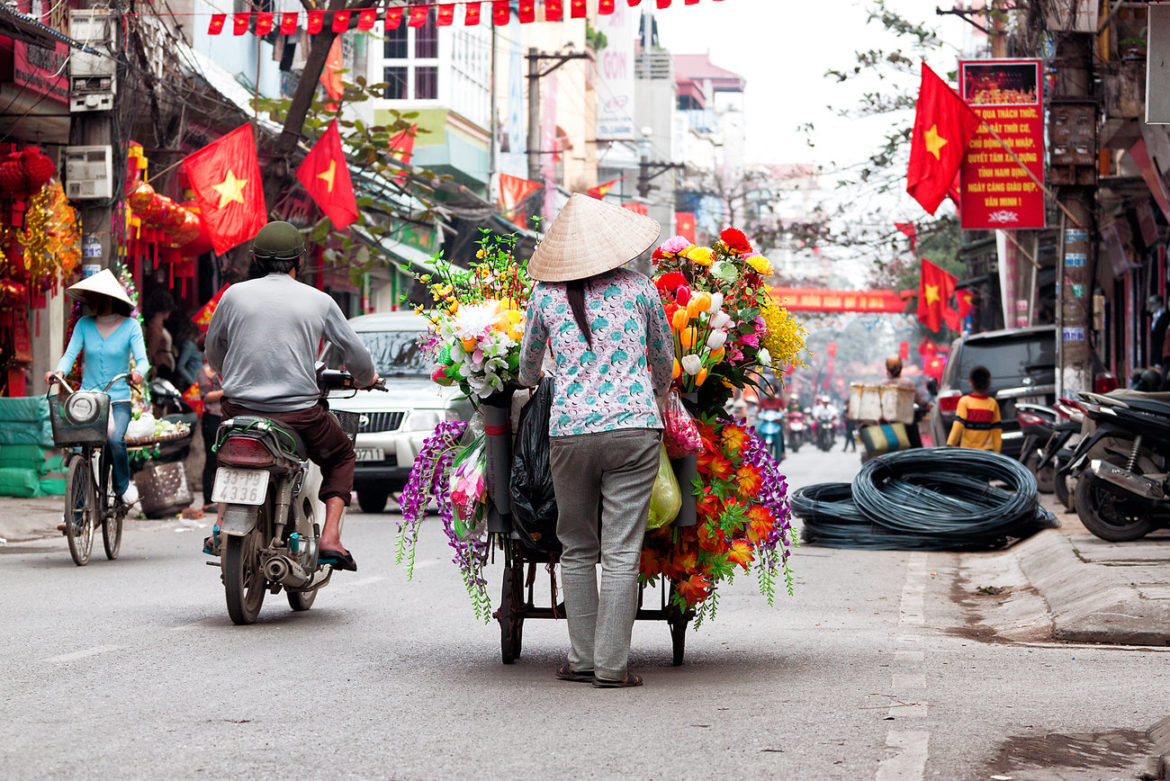
NOTE: This article was inspired by our 8-day Treasures of Vietnam trip.
Stretching 1,650 km from north to south, Vietnam is packed full of wonderful sights and experiences that are not to be missed. Because of this, coming up with an itinerary that fits such an array of beauty and culture into just a week or so can seem pretty daunting. But if you’re short on time and don’t have much annual leave, you don’t need to worry.
We’ve compiled a handy seven-day guide for your whistle-stop tour of Northern Vietnam.
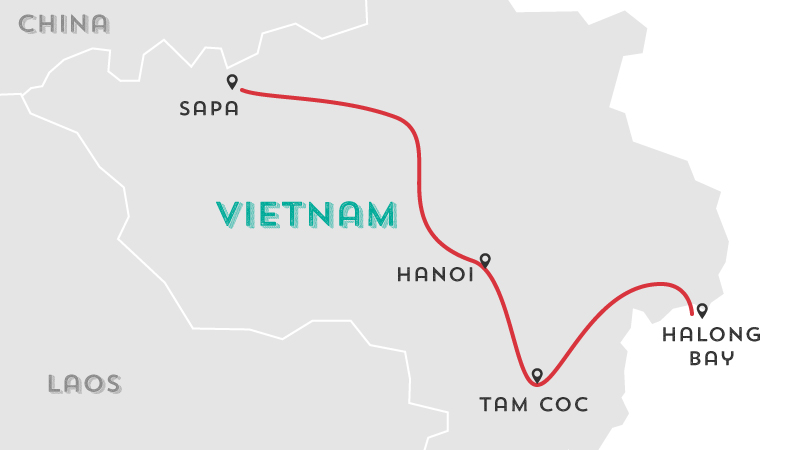
Day 1: Sapa
We start in Sapa – our northernmost location, close to the border with China. This region is home to many indigenous hill tribes and is well known for its hiking.
To really take it all in, prepare for an early start and get ready to explore the beautiful scenery on foot. The seemingly endless terraces of rice fields look like something from a sci-fi movie (particular when they’re shrouded in fog) and, like me, you may have to pinch yourself to remember you’re still on planet Earth!
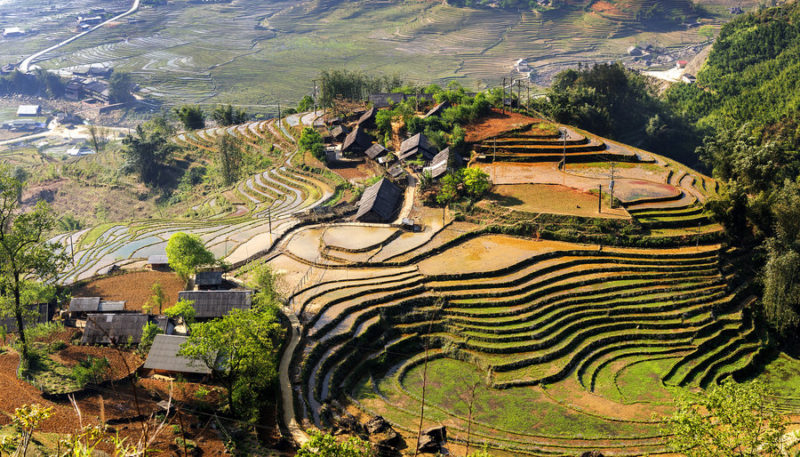
CHECK OUT THIS 5-DAY SAPA ADVENTURE TO FULFILL ALL YOUR HIKING NEEDS
Day 2: Sapa
For a more relaxed day as your legs recover from all the hiking, take a wander through the town. Coffee drinkers, here you can get your first fix of Vietnamese coffee! Iced coffees are everywhere and great for cooling off or, if you’re feeling adventurous, try the Vietnamese specialty – coffee made with egg yolk (tastier than it sounds)!

Day 3: Sapa
Since today is your last day in Sapa, you may as well make it memorable, right? Why not climb Fanispan Mountain – the highest mountain in Vietnam? Though anyone of decent fitness can climb it, you will need the proper hiking equipment (sturdy shoes, layers) and a guide to make sure you’re safe.
If hiking isn’t for you, there is a cable car that will take you to the summit too, with great views on the way up and down.
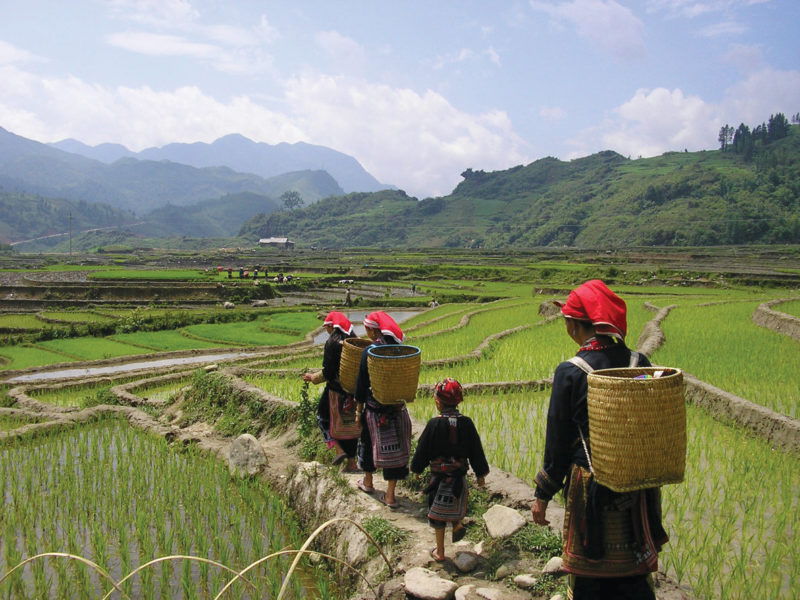
A hill tribe in Sapa Valley’s rice fields
Be aware that the weather can turn bad very quickly in Sapa, so be prepared for a downpour at any time. The scenery, however, should more than make up for damp feet.
SUBSCRIBE TO OUR NEWSLETTER FOR TRAVEL INSPO, GIVEAWAYS & MORE
Day 4: Hanoi
Next, we head to the capital city of Hanoi. Expect buzzing markets, chaotic streets and an abundance of motorbikes to greet you. In fact, to save feeling overwhelmed, you might want to read our light-hearted guide to crossing the road in Vietnam !
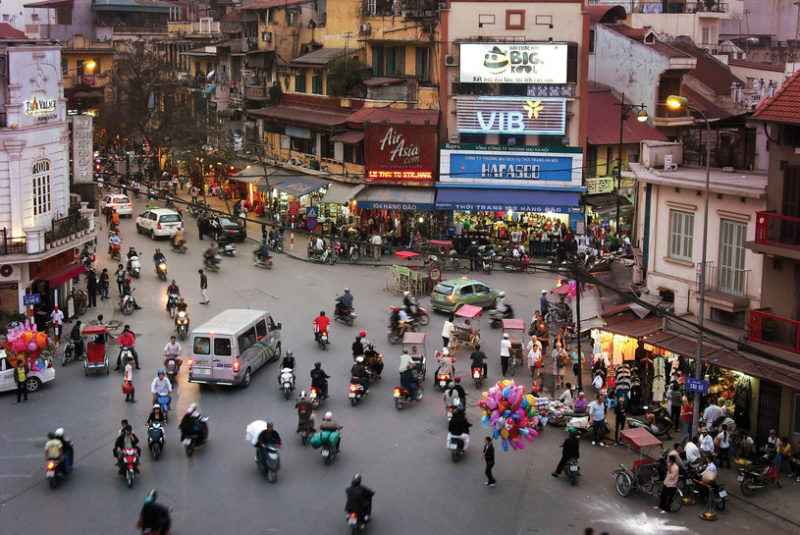
Rush hour in Hanoi
With influences from all over the world, there is no shortage of interesting architecture and history to discover in the city’s Old Quarter. Take a wander through the lively, narrow streets, witness a unique water-puppet performance, or visit the Vietnamese Women’s Museum before grabbing some food from one of the countless street food vendors.
Also feel free to stop for a bia hoi (freshly brewed draught beer) at one of the microbars in the Old Quarter. Strolling round Hoàn Kiếm Lake, in the city center, is especially nice at sunset.
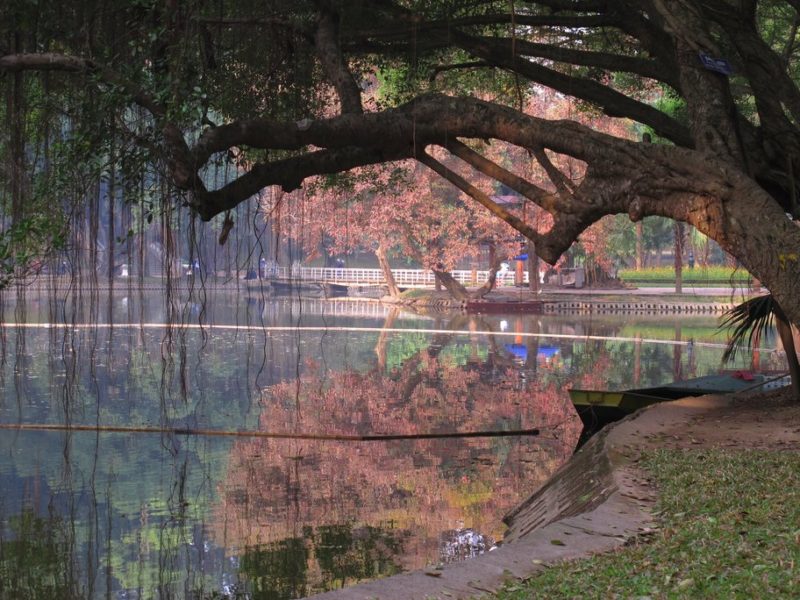
5 DELICIOUS DISHES TO TRY IN VIETNAM
Day 5: Tam Coc
Venturing further south, head to the UNESCO World Heritage Site of Tam Coc in Ninh Binh where endless rice paddies, limestone towers, and the Ngo Dong River await you.
Tam Coc is commonly labeled as ‘Halong Bay on land’ – which I finally understood when I saw the giant limestone karsts towering above the river and rice fields for myself. It is, no doubt, a sight to behold!
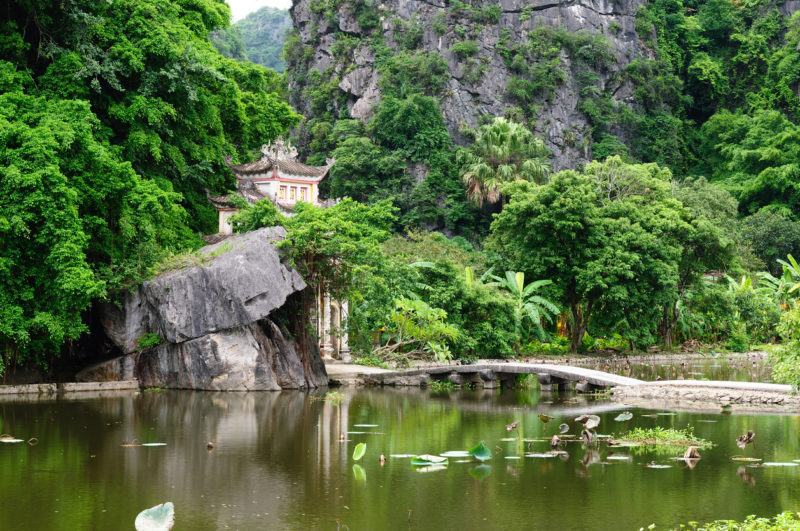
Tam Coc National Park
On day one we recommend hiring a bike and cycling around to get your bearings. This gives you the freedom to explore the fields and back roads around Tam Coc as Vietnamese farming life happens around you. Your hard work will be rewarded with stunning scenery and you may even catch the wonderful sight of the sun setting over the fields.
CYCLE THROUGH STUNNING TAM COC ON THIS 15-DAY CYCLING TRIP
Day 6: Tam Coc
For a more peaceful start to the day, we suggest taking a boat trip in the morning. Local men and women will take you on a lovely journey along the river, passing through caves and temples, some of which can only be reached by boat. It was amazing to see how the people here are so accustomed to the water that they row the oars with their feet, leaving their hands free to peel fruit to sell.
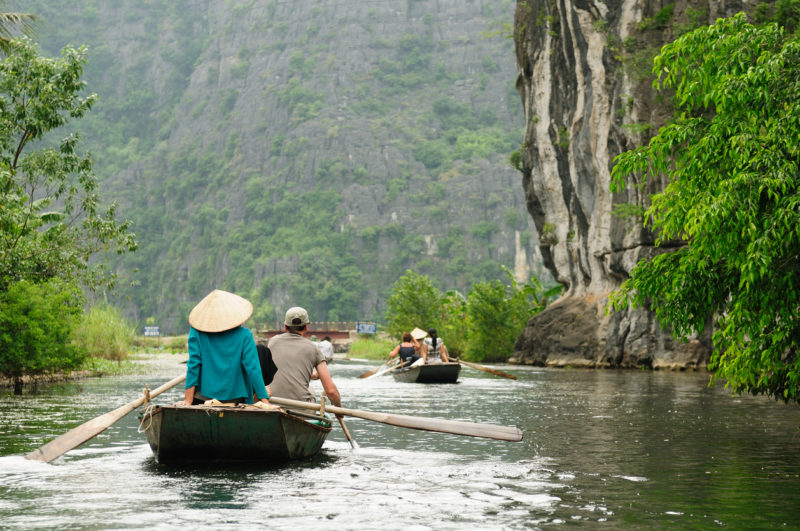
Boat trip in Tam Coc
At the end of the boat trip, if eco-tourism is your thing, you won’t want to miss Thung Nham. Also known as Bird Valley, it’s a bicycle ride away from the boat jetty to a beautiful park with lakes, caves, mangroves, a 1,000-year-old tree and over 40 species of bird.
6 PLACES TO WATCH THE SUN SET IN VIETNAM
Day 7: Halong Bay
The last day takes us to Halong Bay. Being one of the most well-known destinations in northern Vietnam, it has to be crossed off the checklist. The landscape is famous for its huge limestone karsts that take you can admire from beach or boat.
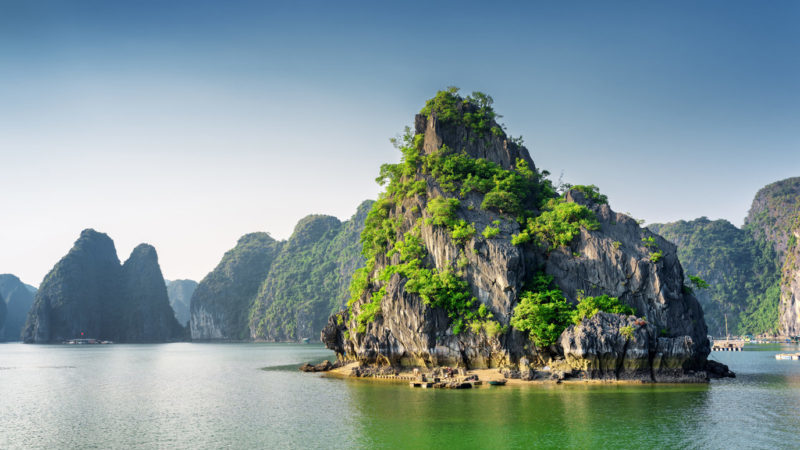
Sit back and enjoy it to finish off your unforgettable week. There’s truly nowhere like this Southeast Asian stunner.
Tempted? Book a small group adventure to Vietnam without delay!
(Image credits from top to bottom: Intrepid Travel x2, iStock, Intrepid Travel x3, iStock x2, Intrepid Travel)
Feeling inspired?
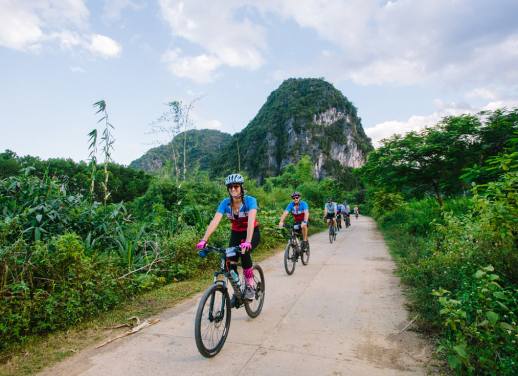

Ellie Abraham
Ellie Abraham is a native Brit whose wanderlust now has her residing in Toronto. She has spent time in parts of Africa, North America, Europe and, most recently, her transnational roots have led her to climb volcanoes and frolic in waterfalls in the Caribbean. On the path of growth and self-discovery, she thinks exploring the world is a pretty good place to start.
You might also like
The 7 best places to go on a..., 5 reasons to visit sri lanka in the..., why 2024 is the best year to see..., yellowstone vs yosemite: which national park to visit, 6 unique experiences you can have in el..., from delhi to udaipur, here are the five..., cinque terre vs amalfi coast: which destination to..., love at first bite: 10 famous sandwiches from..., galapagos or madagascar which unique destination should be..., central vs south america: how to plan your..., 4 reasons you should take a road trip....

5 Days In Vietnam Itineraries (North, Central & South Options)
THIS POST MAY CONTAIN COMPENSATED LINKS. FIND MORE INFO IN MY DISCLAIMER.
Home » 5 Days In Vietnam Itineraries (North, Central & South Options)
Are 5 days in Vietnam enough for a tourist? What is the optimal Vietnam 5-day itinerary?
Vietnam is fast becoming an incredible tourist destination! Located in Southeast Asia, Vietnam is the perfect blend of Nature’s raw beauty and sprawling tribal villages.
It is a country that offers a wide array of flavors and experiences for tourists from all over the world.
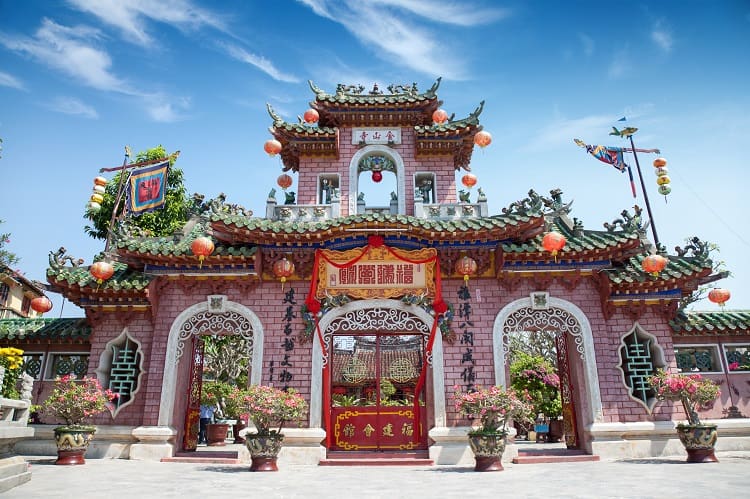
You should try to accommodate one of the incredible Vietnamese festivals in your itinerary. There are about ten festivals that are celebrated in this beautiful country, of which the Hoi An Lantern Festival and Buddha’s birthday are our favourites.
We advise you to also witness a unique art form while in Vietnam – the water puppet show.
You can spend a peaceful evening in one of the temples or indulge in nail-biting adventures like rafting, trekking, snorkelling, sailing, or surfing.
It is not a small country with only a couple of attractions, so five days is not enough to explore all of Vietnam. So, we recommend exploring one of the three regions of the country – North, South, or Central.
Vietnam Itinerary in 5 Days
Finding the best 5-day Vietnam itinerary can be challenging. We have provided two alternative itinerary options for each region; for North, South and Central, to give you more flexibility.
If you are wondering what to do in Vietnam for 5 days , we have the answer.
Tip: If you are interested in going on a guided tour around Vietnam, you might be interested in checking out Vietnam Cambodia Trip/ Southeast Asia Trip here.
1. Best 5-day Itinerary for Northern Vietnam
Here is all the information that you need to know before you go, and 2 amazing options of 5-day itineraries for Northern Vietnam:
How to get there :
Take a flight to the Noi Bai International Airport in Hanoi.
5 Key Attractions :
Here are five key attractions that cannot miss out on whilst visiting North Vietnam:
Vietnam’s capital city is famous for its delicious street food and ancient culture. You can indulge in exploring several historic sites and museums.
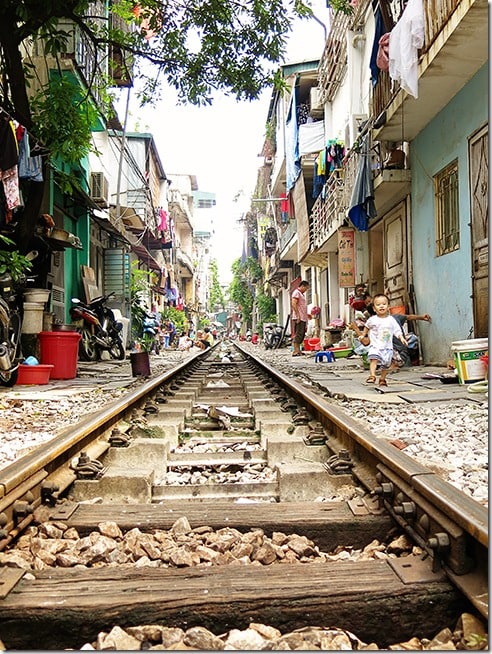
If you are visiting Vietnam for the first time, we recommend spending a day in Hanoi to get to know its history, culture, and traditions.
Here is a list of some of the places to visit in Hanoi:
- Hoan Kiem Lake
- Temple of Literature
- Opera House
- St Joseph’s Cathedral
- Ho Chi Minh Mausoleum and Museum
- One-Pillar Pagoda
- Vietnam Museum of Ethnology
- Check out where to stay in Hanoi here .
2. Ha Long Bay
We recommend spending two days on a Halong Bay tour. You get to enjoy various activities including visiting caves, kayaking in the Limestone Karsts, and swimming in cold water.
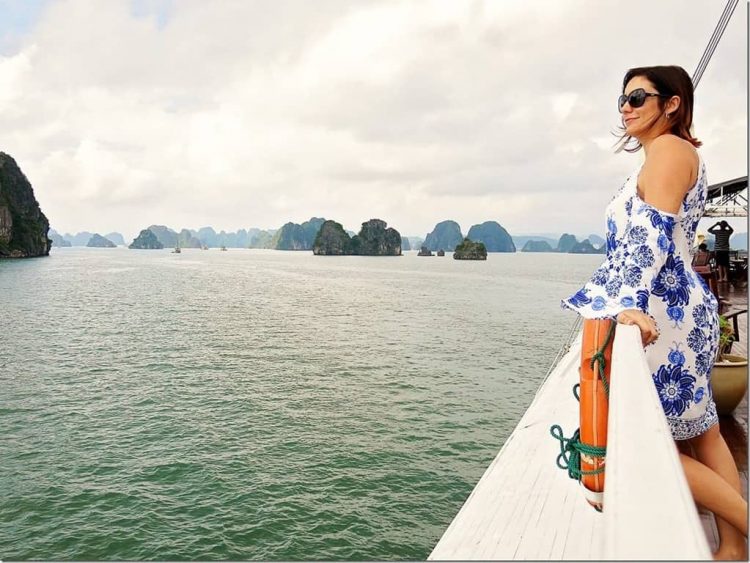
Spending a night floating on the bay is an experience you do not want to miss.
You will most likely be amazed by the Surprise Cave in the Bo Hon Island and Titop Island. When visiting the latter, you get the unique opportunity to climb to the top of the islet and relish picturesque 360-degree views.
Tip: Check out our list of the best Ha Long Bay cruises .
3. Mai Chau
Mai Chau is a serene town about 150km away from Hanoi. If you want to experience the lifestyle of native Vietnamese people, we recommend choosing a homestay for accommodation.
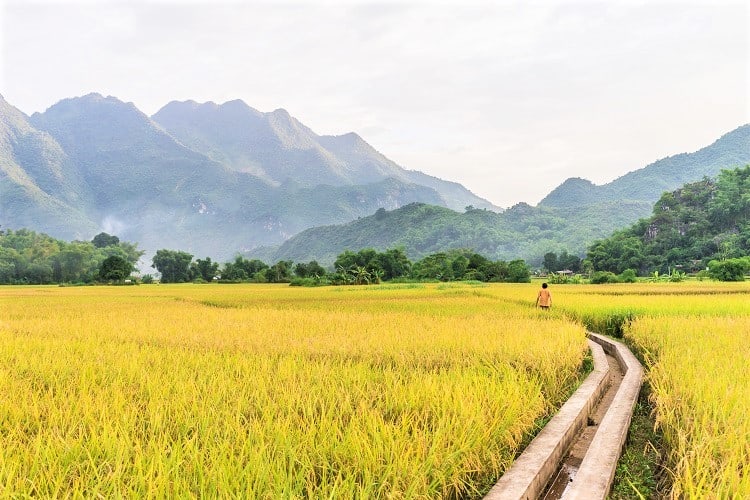
The surrounding mountains make this town an ideal retreat for Nature-lovers.
If you are an adrenaline junkie, we recommend a trip to the Hoang Lien National Park in Sa Pa. You can hike to Fan Si Pan, the highest mountain in Vietnam.
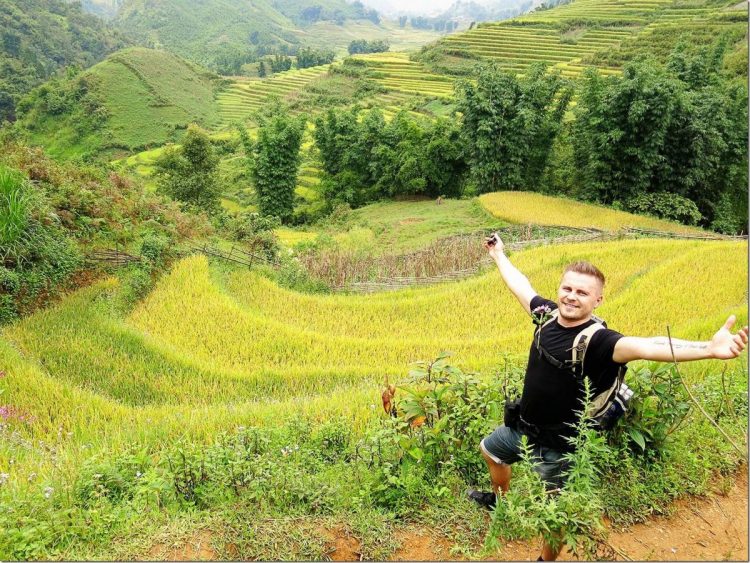
The breathtaking views from the mountaintop are must-see!
Other attractions in the Hoang Lien National Park include the Ta Phin Village and the Cat Cat Village. It offers a diverse habitat for a wide array of animals, including some endangered species.
You may want to visit the tribal villages in Sa Pa, which are home to five highland tribes.
- Check out best hotels in Sapa here .
- Find out how to get to Sapa from Hanoi here .
- Exlore how to travel from Sapa to Halong Bay here .
5. Ninh Binh
Ninh Binh is a hidden gem in Vietnam. It is a small city that has a lot to offer.
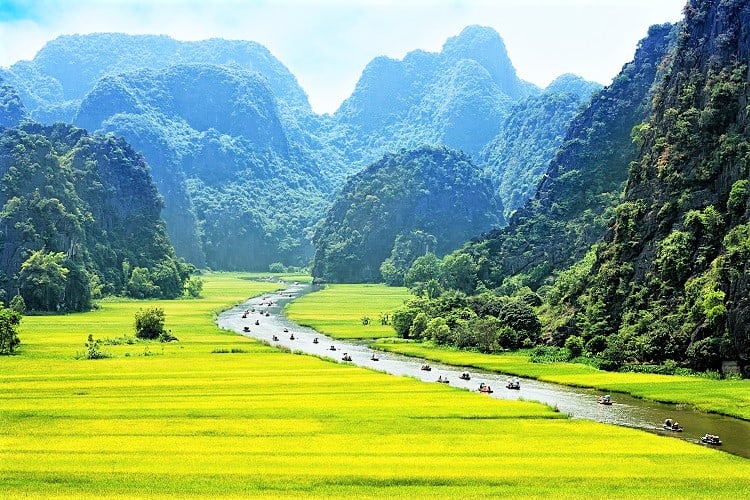
Here are some of the top attractions you must consider:
- Boat ride in Trang An or Tam Coc
- Go temple-hopping and visit Hang Mua, Bai Dinh Pagoda, and Bich Dong Pagoda
- The Thung Nham Bird Garden
- Cuc Phuong National Park
Itineraries :
You can choose to visit either Sa Pa or Mai Chau and Ninh Binh, based on the activities and experiences you are most interested in.
1st Day : Visit museums and other historic spots in Hanoi; overnight stay in Hanoi.
2nd Day : Take the 2-day Ha Long Bay tour; visit the Surprise Cave and Titop Cave; overnight stay on the boat.
3rd Day : Visit Limestone Karsts for activities; return to Hanoi for overnight stay.
4th Day : Take a bus to Mai Chau from My Dinh Bus Station; connect with Vietnamese lifestyle; return to Hanoi for overnight stay.
5th Day : Take a bus or train to Ninh Binh on the final day; return to Hanoi for overnight stay.
3rd Day : Visit Limestone Karsts for activities; return to Hanoi and take the night train to Sa Pa.
4th Day : Visit the Hoang Lien National Park in Sa, Pa; overnight stay in Sa, Pa.
5th Day : Visit villages and markets on the final day; take the night train to Hanoi.
2. Best 5-day Itinerary for Southern Vietnam
Here is all the information that you need to know before you go, and 2 amazing options of 5-day itineraries for Southern Vietnam:
Take a flight to the Tan Son Nhat International Airport in Ho Chi Minh City.
7 Key Attractions :
Here are seven key attractions that cannot miss out on whilst visiting South Vietnam:
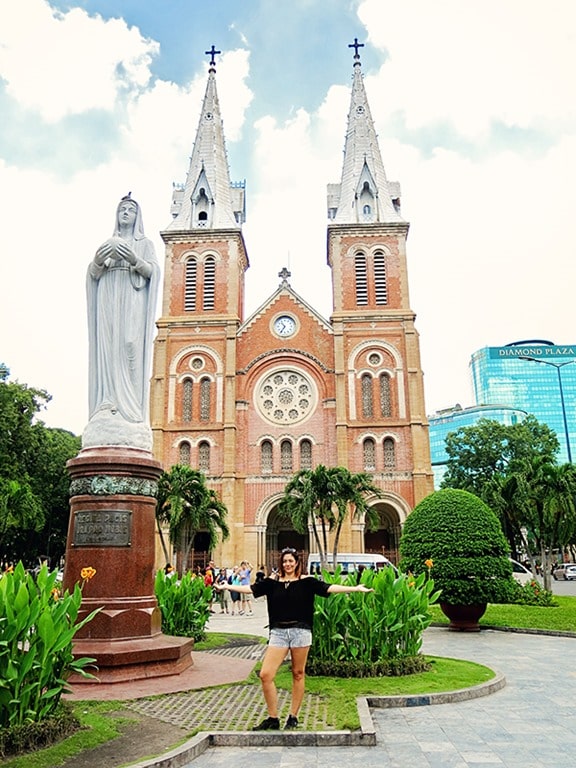
Just six kilometres away from the airport, Saigon in HCMC includes famous tourist attractions like the Ben Thanh Market, Saigon Central Post Office, Notre Dame Cathedral, Independence Palace, and the War Remnants Museum.
2. Cu Chi Tunnels
Take a drive to the Cu Chi Tunnels, 60km away from HCMC. It is a unique maze of twisting underground chambers, passages, booby traps, and rooms.
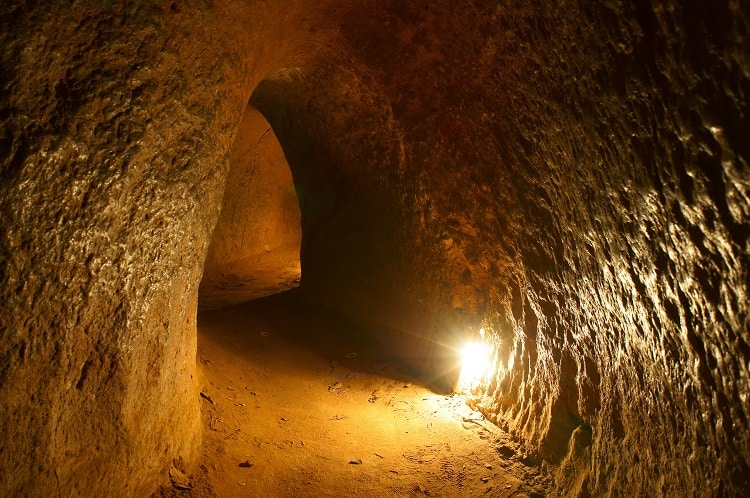
Make sure you watch the introductory video on arrival before venturing into the labyrinth.
3. Cai Be Floating Market
How about exploring the floating market of the most significant fruit producing area in Vietnam?
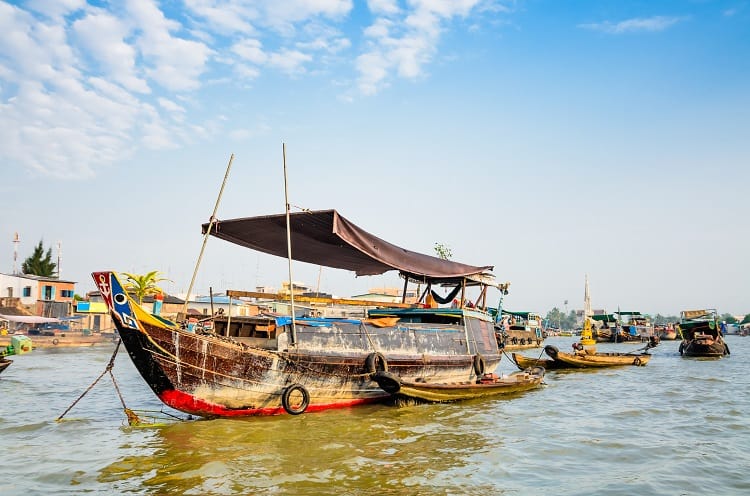
Located in the Tien Giang province, the Cai Be floating market has a wide variety of tropical vegetables, fruits, and flowers on display. If you have never been to a floating market before, you must not miss this.
Another viable option to explore floating markets in Can Tho. This city comes alive at night, and you should take a boat ride to check out its renowned canal network.
The Can Tho Museum and Can Tho Bridge make attractive tourist spots you can go to.
5. Chau Doc
Chau Doc is a small town near the Vietnam-Cambodia border. If floating markets sound interesting to you, you are in for a treat if you visit the floating villages and temples.
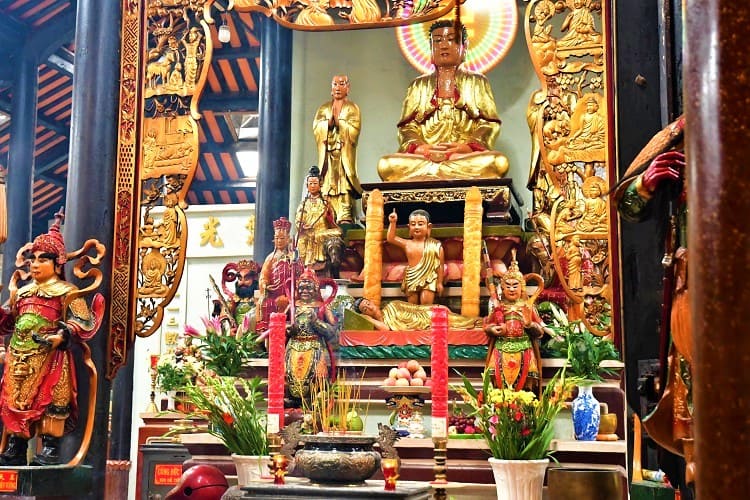
The market is often bustling with tourists, especially in the morning.
We recommend a trek to Sam Hill, standing 750ft tall. You can relish some awe-inspiring panoramic views of the city from Sam Hill, as it is the only high ground region.
Da Lat is probably the most famous honeymoon destination in Vietnam. The Valley of Love is an all-time favorite destination of couples. It is known as the “City of Eternal Spring” and the “flower capital of Vietnam.”
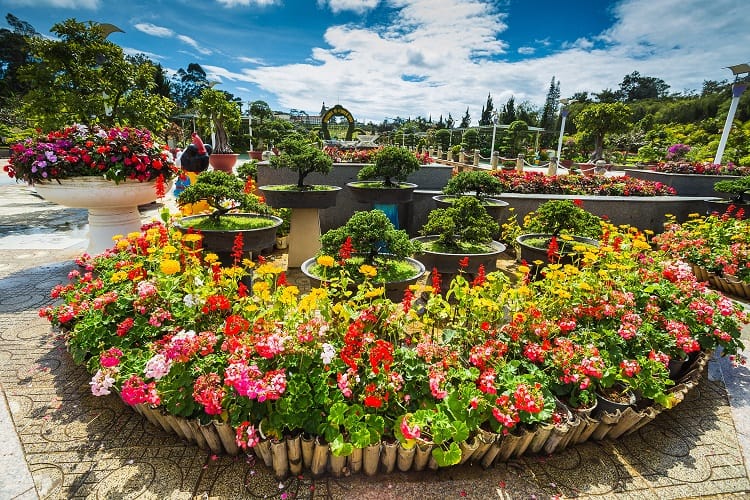
The cable car ride is a must-visit, offering a splendid aerial view of the beautiful city. Da Lat is centered on a golf course and a lake and is surrounded by lakes, hills, pine forests, and waterfalls – literally in the lap of Nature.
Here are some of the top places to see in Da Lat:
- Domain de Marie Church has an authentic French architecture
- Datanla Waterfalls
- XQ Historical Embroidery Art Village
- Tuyen Lam Lake
7. Nha Trang
Nha Trang is a coastal town with a long beach line. You can indulge in several adventurous activities there like surfing, jet skiing, and parasailing. We recommend hiring a bicycle to ride around the city.
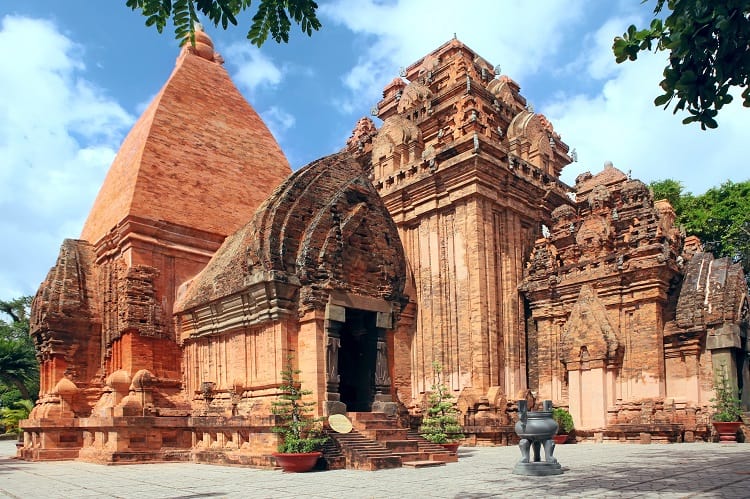
Some other places to visit in Nha Trang are:
- Vinpearl Amusement Park
- Long Son Pagoda
- National Oceanographic Museum of Vietnam
- Nha Tho Nui Cathedral
You can choose to visit Da Lat and Nha Trang or Cu Chi, Cai Be, Can Tho, and Chau Doc.
1st Day : Explore Saigon on the first day; overnight stay in Saigon.
2nd Day : Take a morning flight to Da Lat; take the cable car ride and visit the Tuyen Lam Lake; overnight stay in Da Lat.
3rd Day : Visit other places in Da Lat; evening road trip to Nha Trang; overnight stay in Nha Trang.
4th Day : Ride around Nha Trang on a rented cycle, take a stroll on the beach, indulge in water sports; overnight stay in Nha Trang.
5th Day : Visit other places in the city; take a flight to Saigon; overnight stay in Saigon.
2nd Day : Drive to Cu Chi Tunnels; road trip to Cai Be; return to Saigon for overnight stay.
3rd Day : Road trip to Can Tho; explore the floating markets; overnight stay in Can Tho.
4th Day : Road trip to Chau Doc; trek to Sam Hill; overnight stay in Chau Doc.
5th Day : Explore the city; return to Saigon.
3. Best 5-day Itinerary for Central Vietnam
Here is all the information that you need to know before you go, and 2 amazing options of 5-day itineraries for Central Vietnam:
Take a flight to the Da Nang International Airport.
6 Key Attractions:
Here are six key attractions that cannot miss out on whilst visiting Central Vietnam:
Hoi An is a World Heritage site and has preserved ancient households built-in Chinese, Japanese, and Thai designs.
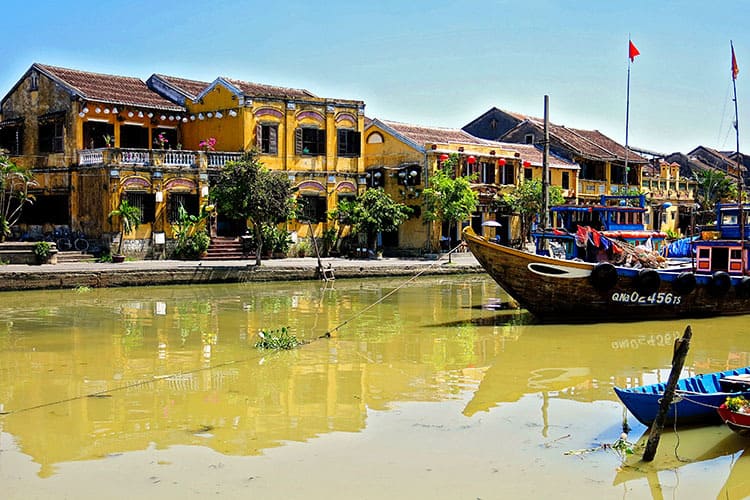
You can go to the Silk Farm, Pottery Village, and Tra Que Village to get a taste of the lifestyle of locals. Hoi An also has a flawless beach where you can relax and sunbathe.
- Check out the best Hoi An hotels here .
Hue is a UNESCO site and is most renowned for the Imperial Citadel.
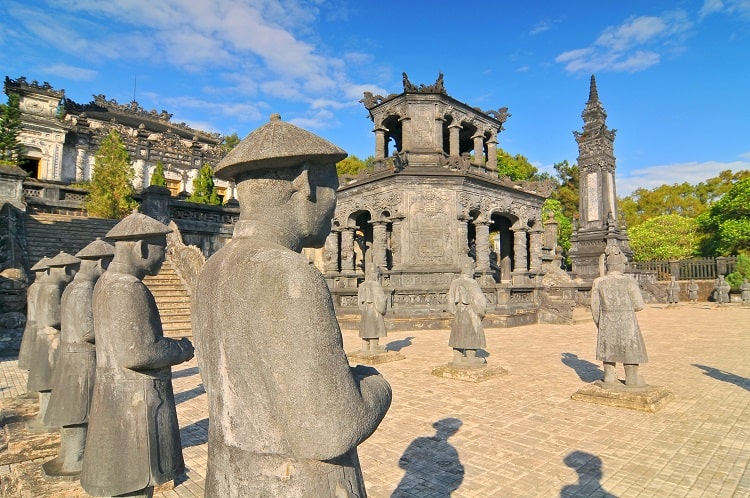
You can choose to visit any of the seven Royal Tombs all over the city or the Thien Mu Pagoda, which has a seven-story tower.
It is a cluster of partially ruined and abandoned Hindu temples that are exquisite ancient relics of the Champan civilization.
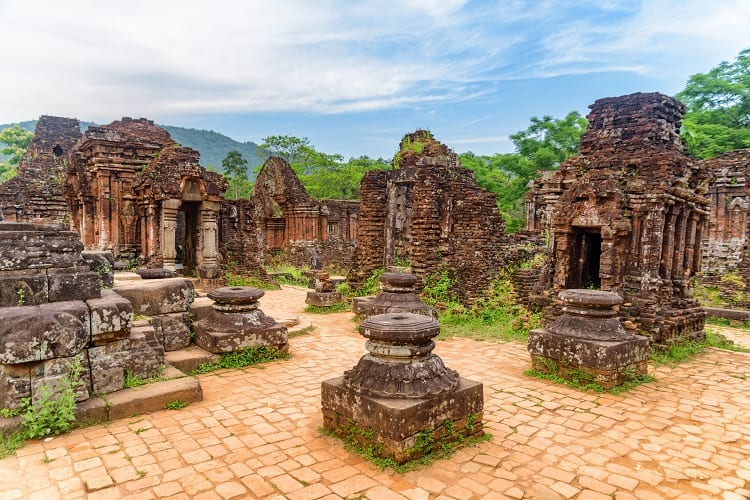
You should visit My Son for its sheer cultural and historical heritage.
Pleiku is a perfect destination to relax amidst Nature. It is one of the few Vietnamese cities that is unaffected by significant tourism.
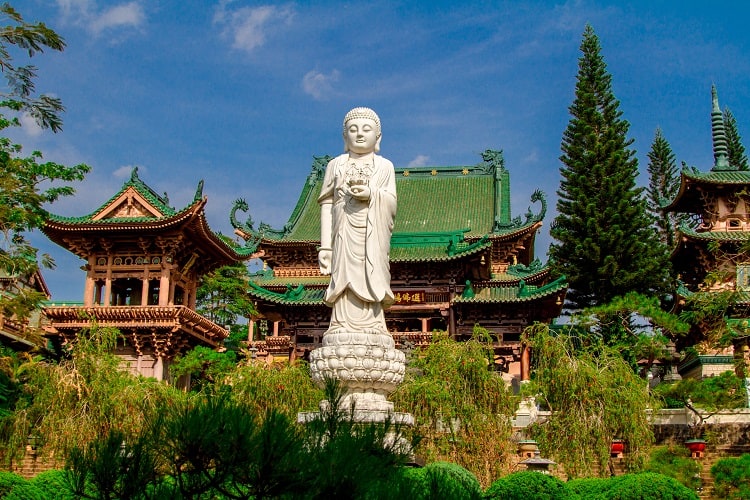
We recommend going to the various temples and local shops during your stay in Pleiku.
Kon Tum is one of the rare places which are still relatively untouched by modern tourism.
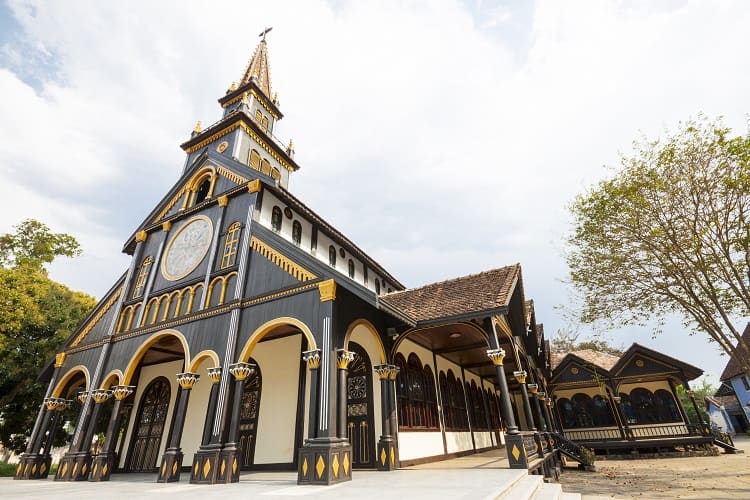
You will get a fresh and authentic insight into Vietnamese culture and lifestyle.
Tourists often visit the bishops building and the wooden church.
6. Buon Ma Thuot
If you want to go to a place where you get solitude and serenity, Buon Ma Thuot is the ideal option. It features numerous trails and waterfalls, including the Dray Nur and the Dray Sap waterfalls.
You can choose to visit My Son and Hue or Kon Tum, Pleiku, and Buon Ma Thuot.
1st Day : 45-minute drive to Hoi An; explore the city; overnight stay in Hoi An.
2nd Day : Road trip to Kon Tum; overnight stay in Kon Tum.
3rd Day : One hour drive to Pleiku; shop and visit temples; overnight stay in Pleiku.
4th Day : Road trip to Buon Ma Thuot; visit waterfalls and trails; overnight stay in Buon Ma Thuot.
5th Day : Explore Buon Ma Thuot; take a return flight to Hoi An.
1st Day : 45-minute drive to Hoi An; explore the beach; overnight stay in Hoi An.
2nd Day : Visit the Silk Farm, Pottery Village, and Tra Que Village; overnight stay in Hoi An.
3rd Day : 1.5-hour drive to My Son; go to the temples; return to Hoi An for overnight stay.
4th Day : 3-hour road trip to Hue; visit the Imperial Citadel; overnight stay in Hue.
5th Day : Explore the royal tombs; overnight stay in Hue.
Vietnam is renowned for its impressive architecture, war history, fine dining, beautiful beaches, markets, and temples! Whether you prefer a serene retreat in the lap of Nature or an exquisite party in a nightclub, Vietnam will not disappoint you.
It is not easy to decide what to see in Vietnam in 5 days and our recommendations are not exhaustive. You may tweak our itineraries to suit your needs and budget.
The best time to go to Vietnam is either spring or autumn, so try to plan your trip accordingly. Select the Vietnam itinerary in 5 days that perfectly matches your interests.
We hope you have a wonderful trip to Vietnam!
Further Reading:
Here is some more information that you might need before you venture out to Vietnam:
- Find out how to do one week in vietnam .
- Check out the best Vietnam accommodation organized by region .
- Find out what is the best time to visit Vietnam here .
- Explore which are the best places to check out in Vietnam here .
- See which are the best tour packages in Vietnam here .
- Find out what you need to know before you go to Vietnam here .
- Check out what to pack for the Vietnam vacation .

Andrzej Ejmont
2024 - Wanderlust Storytellers. All Rights Reserved.
About Us | Contact Us | Work with Us | Privacy Policy | Disclaimer
* Disclaimer: Wanderluststorytellers.com is a participant in the Amazon Services LLC Associates Program, an affiliate advertising program designed to provide a means for sites to earn advertising fees by advertising and linking to amazon.com and other Amazon sites.
- Skip to primary navigation
- Skip to main content
- Skip to primary sidebar
- Skip to footer

The Mindful Traveller
Eco Travel Blog & Photography
North Vietnam Travel Guide: 2-Week Itinerary
14 July 2022 · In: Asia , Road Trip , Vietnam

Here is a complete travel guide to North Vietnam , including how to get around, when to visit and an incredible 2-week itinerary that ensures you see the best attractions and sights this country offers. From Hanoi to Sapa and the Ha Giang Loop, this backpacking guide is perfect for first-timers and will allow you to get to know the country and locals on a deeper level.
Between vibrant culture, traditional villages and breathtaking nature, Vietnam is a country steeped in history and diversity. Backpacking across its land is an experience like no other. It gives you the opportunity to slow down and appreciate the scenery from a unique perspective.
My friend Kwelan and I visited Vietnam in June for two weeks. The Asian continent was unknown to me, and I was very excited. We did not plan much before the trip and decided to go backpacking one day at a time. As Vietnam is a long country and it takes a long time to see it all, we focused on the north.
In addition, we had similar plans for accommodation. We booked a room for the night each day on Booking.com , and it was always very convenient.
In this article, I give you the tools you need to have an unforgettable experience in Northern Vietnam . Plus, do not forget to check out the sustainable tips at the end. Enjoy!
Disclosure : Some of the links below are affiliate links, meaning that at no additional cost to you, we will receive a commission if you click through and make a purchase. For more information, read our full affiliate disclosure .
My Hanoi experience
My sapa experience, my ha giang experience, my cao bang experience, my cat ba experience, my ninh binh experience, bus options + schedule, overview: 2-week north vietnam itinerary, day 1/3 (2 nights) – hanoi, day 3/5 (2 nights) – sapa, day 5/8 (3 nights) – ha giang, day 8/10 (2 nights) – cao bang, day 10/12 (2 nights) – cat ba island.
- Day 12/13 (1 night) – Ninh Binh
Day 13/14 (1 night) – Hanoi

free download
North vietnam itinerary.
Planning your backpacking trip and not sure where to start? Here is an outline of an epic 2-week itinerary in North Vietnam . Enjoy! 🇻🇳

How long to spend in North Vietnam
I suggest spending at least 14 days in North Vietnam .
Vietnam does not seem like it, but it is a lengthy country, so reaching a city can take up to 15 hours by bus. That is why it is necessary to think about the travel time between each stop when planning your backpacking trip, either by bus or motorbike.
Even if you focus on the northern part of the country, the journeys will be tiring. Allow plenty of time to travel and do whatever you want at your destination.
That is also why I recommend spending two nights at each stop , so you can see the main attractions and highlights without rushing.
Spending less time is fine, but you will be either exhausted at the end or will have to cut on some parts. On the other hand, spending more time is always a great thing. It will allow you to see more and truly connect with the culture and locals!
For my experience, I spent 15 days in North Vietnam, ending in Hoi An, and it was perfect. The only thing I regretted was not having prepared our itinerary in advance. We went there without plans, and I regret it a bit as I now realise we missed a lot and could have seen more by being organised. But getting lost and not having any expectations is also part of the beauty of backpacking. We still had an incredible time and made many friends along the way.

Vietnam Backpacking Itinerary – Map
Click on the top left of the map to display the list of stops and locations.
This Northern Vietnam backpacking travel itinerary is only a guide with recommendations. You are more than welcome to spend more days in one destination or add other stops on your way. Vietnam has a lot to offer: you will never run out of ideas!
Additional tip: use night-sleeping buses to save time.
Route ALTERNATIVES:
- Day 1/2 (1 night) – Hanoi
- Day 2/4 (2 nights) – Sapa
- Day 4/5 (1 night) – Bac Ha
- Day 5/6 (1 night) – Lao Cai
- Day 6/9 (3 nights) – Ha Giang
- Day 9/11 (2 nights) – Cat Ba Island
- Day 11/13 (2 nights) – Ninh Binh
- Day 4/7 (3 nights) – Ha Giang
- Day 7/9 (2 nights) – Cat Ba Island
- Day 9/11 (2 nights) – Ninh Binh
- Day 11/13 (2 nights) – Hoi An
Detailed Vietnam 2-Week Itinerary

Your Vietnam backpacking adventure begins with the vibrant city of Hanoi.
Hanoi is the bustling capital of Vietnam, a colourful city full of charm and history. It is the perfect way to discover Vietnamese culture and taste delicious street food.
For this North Vietnam itinerary, I recommend spending at least two nights in Hanoi to have the time to immerse yourself in the buzzing atmosphere of the city and get lost in its narrow streets.
With these few days, you will have plenty of opportunities to uncover the main attractions and highlights of the Vietnamese capital.
Things to do & see in Hanoi
- Explore the Old Quarter
- Walk around Hoan Kiem Lake
- Cross the bridge to the Temple of the Jade Mountain
- Dwell in Hanoi train street
- Tour the National Museum of Vietnamese History
- Wander the Temple of Literature
- Try Hanoi local food (order a bowl of pho and a beer!)
- Discover the Imperial Citadel of Thang Long
- Visit Ho Chi Minh’s Mausoleum
Click on the top left of the map to display the list of locations.
Top experiences from Hanoi
How to get around hanoi.
The easiest way to get around Hanoi is on foot . It will allow you to soak up the energetic atmosphere of the city. And if you love photography, it is an incredible way to wander and capture candids.
And if the place you want to reach is a bit far, I advise you to use a Grab (the equivalent of an Uber) or taxi.
I would not recommend renting and driving a motorbike to get around the capital, as the streets are insanely busy and there are no traffic rules.

I did not have the chance to spend that much time in Hanoi, but it was not my favourite city. It was so hot and humid that it was hard to breathe, and the noise and smell were intense and hard to handle.
However, I still enjoyed wandering through its narrow streets, tasting local cuisine and doing some shopping.

Many buses travel daily from Hanoi to Sapa. And you will have the choice between different types: vans, minibuses and sleepers.
Travel time: 6 hours Distance: 320 km
Check out Baolau for the timetable and prices. Or ask your hotel or guesthouse to book the bus for you.
Sapa is a remote town located in the northwestern mountains of Vietnam in the Muong Hoa Valley. This part of the country with its distinct and unique culture is well-known for its lush rice terraces, scenic mountain views and local communities.
And if you love spending time outdoors and exploring, Sapa is the place for you! The area offers plenty of trekking possibilities that will guide you through picturesque landscapes and ethnic villages.
For your backpacking trip in North Vietnam, I recommend spending two to three days in Sapa, as the region provides many things to do and see!

Things to do & see in Sapa
- Visit Cat Cat village
- Go hiking or trekking
- Ride the cable car to Fansipan
- Hike to Love Waterfall
- Walk to Silver Waterfall
- Visit Sapa Museum
- Go on a boat ride on Sapa Lake
- Rent a motorbike & wander outside of Sapa
- Discover Tram Ton Pass
- Check out Muong Hoa Valley
Top experiences in Sapa
How to get around sapa .
Because Sapa is a small mountain town perfect for hiking and trekking, the easiest way to get around is on foot .
Another way to travel around is by using a motorbike . You can easily rent yours at the hotel or guesthouse where you are staying and start exploring the surroundings. However, be mindful as the roads are in bad condition. This area is also often cloudy and foggy. So drive slowly!
And if you are not sure about exploring on your own, feel free to hire a local guide . The locals will be happy to share their culture and beautiful region. You can hire a guide to hike through rice terraces on a day trip and multi-day excursion or show you around on a motorbike if you want to reach distant places.

We took a very early morning bus from Hanoi to Sapa. It was a 6-hour journey, and the bus was very comfortable, but it was the only one like this on our entire trip – we did not know it yet!
On our way there, we could already see the scenery changing, becoming little green bumps – I was very excited.

We arrived in Sapa early in the afternoon and went to our guesthouse to leave our bags. We then walked around to explore the town, and it was beautiful – I loved Sapa Lake and its reflection.
The city was busy, but not as much as Hanoi. We could breathe easier.
Cat Cat Village
After walking around the Lake, we visited Cat Cat Village (you can walk to it). You can find it at the bottom of the hill between rice terraces.
The village was pretty, but it was a bit too touristy. Plus, the entrance was 70 000 VND. It was still a lovely first experience to discover the country and its culture. We wandered through the village and walked to the waterfall.

We then used a moto taxi back into town and stopped on our way home at a nice bar. I can not remember the exact place, but it was lovely!

For our second day in Sapa, we rented a scooter from our guesthouse and went to explore the surroundings.
Love Waterfall
Renting a scooter was always very affordable, around 100,000 VND. We had to pay for our petrol, but as with most things, it was easy and cheap (60,000 VND full tank). My friend Kwelan sat behind me as she did not know how to drive, and we headed towards the Love Waterfall . The entrance was not free, but I can not remember the exact price. We did a small hike to reach it, and it was lovely. The waterfall was beautiful.

We then continued to Tan Van , but the roads were in terrible condition, and the weather was very foggy. We went as far as we could, enjoyed the view of the rice terraces and returned to the guesthouse.

Few buses travel from Sapa to Ha Giang City daily.
Travel time: 5 to 7 hours Distance: 235 km
You can ask your hotel or guesthouse to book a local bus for you (cheaper but can be rough). Or check out 12go.asia for a timetable and prices of express sleepers and minivans.
Ha Giang province is one of the most adventurous places in Vietnam and is known for being the start of the famous loop, going from steep mountain passes to quaint local villages.
The Ha Giang Loop is a circular route passing near the border with China. It is there that you can travel through stunning and wild landscapes you will never forget.
This remote region offers an experience like no other, where the cultural diversity and beautiful landscapes remain pure and authentic.
I travelled the loop in two days, which was short, but we did not have much time, and we still managed to see a lot (which was also very tiring). I recommend spending more days there, at least 3 or 4, and going at your own pace.
And if the loop is not on your bucket list, you can rent a motorbike and go for a day trip around Ha Giang City. The possibilities are endless!

Things to do & see in Ha Giang
- Visit Ha Giang City
- Drive the Ha Giang loop
- Discover Hoang Su Phi
- Wander Ha Giang markets
- Go trekking through valleys and villages
- Reach Lung Cu flag tower
- Explore the Lung Cam cultural village
- Stroll through Hmongs King Palace
- Conquer the Ma Pi Leng Pass
- Relax in Du Gia
Top ha giang loop experiences
Ha giang loop: 3-day itinerary example.
- Quan Ba Pass
- Tham Ma Pass
- Hmongs King Palace
Second day:
- Lung Cu Flag tower
- Ma Pi Leng pass
How to get around Ha Giang
The easiest way to get from one town to another in Ha Giang province is by motorbike . You can rent one or use a local guide to show you around. The roads are steep and narrow but generally in good condition. Just drive slowly.
Another good way to travel around Ha Giang is by car with a driver . It will allow you to see unforgettable panoramas without the stress of driving. However, be sure to book in advance.

Since my friend Kwelan did not know how to drive a motorbike, we asked our guesthouse host Tom to guide us. He accepted.
With his cousin, they drove us through the magical landscapes of North Vietnam.
Our first loop day
You can start the loop differently, but we started with the East, passing through Meo Vac, Ma Pi Long et Dong Van .
We stopped several times to take pictures, and the scenery was breathtaking. The weather was also lovely, sunny and warm, and it was great to be with two locals, as they knew the area very well. They showed us hidden places and took us to local houses for lunch and sleep.

Our second loop day
We continued our way to the West, this time passing through Yen Minh et Quan Ba . Once again, we had lunch at a local house.
Most of the time, we had a bowl of rice and a buffet on the table, so we could put whatever we wanted on our rice – and it was always delicious!

We finished our tour by reaching Ha Giang and the guesthouse, where we spent the night.
The loop was unforgettable! The landscapes were unique, with verdant mountains stretching as far as the horizon. Although it was a short tour, we both enjoyed it very much – it is something to do if you can, you will not regret it.
Only one bus travels from Ha Giang City to Cao Bang City daily.
Travel time: 10 hours (with one change in Bao Lam) Distance: 240 km
You can ask your hotel or guesthouse to book the bus for you. Departure should be around 6am, and arrival at 5pm.
Nestled in a remote area, Cao Bang is a mountainous province in northeastern Vietnam and is one of the most beautiful and peaceful regions.
With countless rivers and lakes, Cao Bang is protected as a UNESCO Global Geopark and offers extraordinary diversity, perfect for adventurous travellers who want to explore whilst seeking peace. Due to its remote location, Cao Bang province is ideal for getting away from crowded and more visited tourist destinations and experiencing the rugged beauty of the border region.
And whilst the province is well-known for its Ban Gioc waterfall, one of the best things to do is to wander off-the-beaten tracks and discover unique, untouched wilderness.
As the journey to reach this area can be long and tiring, I recommend staying for two nights to have time to catch your breath after the loop and immerse yourself in nature.
Things to do & see in Cao Bang
- Explore Cao Bang City
- Admire Ban Gioc waterfall
- Hike to Nguom Ngao Cave
- Discover the hidden Phong Nam Valley
- Uncover the Nui Thung mountain
- Marvel in front of Me Pja Pass
- Walk around Thang Hen Lake
- Visit local villages
- Wander around Phia Oac National Park
Top CAO BANG experiences
How to get around cao bang.
The easiest way to get around Cao Bang province is by motorbike . You can rent one at your hotel or guesthouse or use a local guide to show you around. Just drive slowly, as this part of Vietnam is foggy and wet.
Another good way to travel around Cao Bang is by car using a driver . It will allow you to discover the region with a local and move around comfortably.
Unfortunately, we did not have the chance to stop at Cao Bang. It was on our list, but our schedule was tied, and we wanted to experience Hoi An after Ninh Binh instead (proposed as one of the route alternatives).
To reach Cat Ba island by bus from Cao Bang, you will need to book two buses. One from Cao Bang to Hanoi, one from Hanoi to Cat Ba. The journey is simple but lengthy.
Cao Bang – Hanoi (only one sleeping bus daily)
Travel time: 9 hours Distance: 282 km Departure: 20:00 Arrival: 05:00
Hanoi – Cat Ba island (many buses and ferries running daily)
Travel time: 3 to 4 hours Distance: 150 km Departure: from 07:30
You can ask your hotel or guesthouse to book the local buses for you. Or check out Baolau for the timetable and prices.
A small island off the northwest coast of Vietnam, Cat Ba is a hidden gem well worth a visit. Dominating the Gulf of Tonkin, it is the largest of the 367 islands that form the Cat Ba Archipelago.
For this Northern Vietnam backpacking itinerary, I recommend Cat Ba Island instead of Ha Long Bay simply because the island is more budget-friendly and less crowded/touristy. Between the vast jungle of Cat Ba National Park, the stunning sandy beaches and plenty of outdoor activities, there are many things to do and see there, so I would suggest staying for two nights.
Cat Ba will also propose a lovely change of scenery and will allow you to relax by the sea after a few days of mountain exploration.
Things to do & see in Cat Ba
- Explore Cat Ba National Park
- Relax at the beach
- Cruise along Lan Ha Bay (Ha Long Bay alternative)
- Hike Ngu Lam Peak for stunning views
- Visit the Hospital Cave
- Bike ride around Viet Hai Village
- Visit Cai Beo floating village
- Admire the sunset at Cannon Fort
- See langurs on Monkey Island
- Enjoy Cat Ba nightlife
Top experiences in Cat Ba & Ha Long
How to get around cat ba island.
The first way to get around Cat Ba island is on foot . The island offers many hiking trails and scenic coastal views, perfect for slow exploration.
The second way to travel around Ca ba is by bike or motorbike . Again, you can rent one from your hotel and guesthouse and go for a wander.
We reached Cat Ba Island from Hanoi by bus and ferry, and I was very excited, as Cat Ba was where we were cruising along a part of Halong Bay.
To book the cruise, we went to an agency on the island: there are many, so compare and choose the one you prefer. You can also do the cruise from Halong City, but we selected Cat Ba as it was a bit less touristy. I also loved this island, its atmosphere and its landscapes. It was totally unique.
We spent the afternoon at the beach, which was an unusual experience. Because we were the only ones in ‘bikinis’, and most Vietnamese girls were only staying on the beach, we got lots of stares when going into the water. And as we did not want to disturb anyone, we went for a walk around the island, which was incredible.
Unfortunately, the boat cruise we had booked along Lan Ha Bay was cancelled due to a storm. The agency refunded us, and we decided to continue our journey to Ninh Binh.
Day 12/13 (1 night) – Ninh Binh
Few buses and ferries travel from Cat Ba to Ninh Binh.
Travel time: 5 to 6 hours Distance: 190 km
You can ask your hotel or guesthouse to book the bus for you (might be cheaper). Or check out 12go.asia for a timetable and prices of minivans. You can also look at Cat Ba Express (one daily bus departing at 8:00).
Ninh Binh is a town (and district) which lies southeast of Hanoi and is a perfect base for adventurers and nature lovers to explore the area, a protected UNESCO World Heritage Site.
Ninh Binh town is ideal for discovering Tam Coc, Van Long and Hoa Lu, and although it is not as well-known as other places in Vietnam, it is an excellent place for anyone interested in nature and outdoor activities.
For this backpacking itinerary in North Vietnam, I suggest you stay in the Ninh Binh region for one night, but you can stay longer if you prefer, as there is a lot to do and see! Luckily, Ninh Binh is only a two-hour bus journey from Hanoi, so you will have plenty of time to explore the area without rushing before heading back to the capital.
The best way to experience this UNESCO-protected site is by taking a boat tour on its glistening rivers and climbing to the top of its legendary peaks.

Things to do & see in Ninh Binh
- Climb up the Hang Mua Peak
- Go on a Trang An boat ride
- Visit Bich Dong Pagoda
- Stroll through Hoa Lu Ancient Capital
- Go on a bike tour around the countryside
- Explore Cuc Phuong National Park
- Visit Van Long Nature Reserve
- Wander the Bai Dinh Pagoda
- Discover Tam Coc
Top NINH Binh experiences
How to get around ninh binh.
The best to get around Ninh Binh and move freely is by motorbike . You can rent one at your hotel or guesthouse or use a local guide to show you around.
Cycling is another good way to travel around Ninh Binh. It will allow you to discover the region from a unique perspective and immerse yourself in the Vietnamese landscapes.

We took a bus, a ferry and another bus for 5 hours from Cat Ba Island to Ninh Binh. We arrived at Tam Coc Homestay in Ninh Binh at the end of the day, and that was, without a doubt, our favourite homestay. The surroundings were incredible – lost in the middle of rice terraces, adorable owners and a beautiful pool.

We rented a scooter to explore the surroundings. We first went to Trang An for an early morning cruise (so it was not too busy). There are other rivers for boat cruises in this area, the most famous one is Tam Coc, but we wanted something a bit less touristy, so we chose Trang An . The price was 200 000 VND. We could be up to four on the boat (so you will never be alone), and a local guided us through the river and the caves. The scenery was stunning, something I had never seen before. It was a 3-hour cruise, and we stopped at a few temples along the way and passed through 9 caves – all impressive, but watch your head!

We were supposed to leave early but decided to stay a bit longer to explore the area more. We rented a scooter again and went to Hang Mua Mountain to enjoy an incredible panorama of Tam Coc and the rice terraces. The way up was quite hard, as there were 500 steps, but the view was worth it!

Many buses travel daily from Ninh Binh to Hanoi.
Travel time: 2 hours Distance: 94 km
You can ask your hotel or guesthouse to book the bus for you. Or check out Baolau for the timetable and prices.
Your last day in Vietnam!
Spend this time strolling around Hanoi, enjoying a beer or bringing home handmade souvenirs.
I hope you had a great time discovering Northern Vietnam. Let me know in the comments what was your favourite part or if you have other suggestions.

Vietnam was a wonderful country, with such a beautiful culture and full of lovely people. We always felt safe and had no problems travelling. The scenery was breathtaking, and the way of living was different from what I was used to, but it felt so good to discover something new. I came home with a warm heart and a head full of memories.
Hey, are you enjoying this content?
Enjoy reading this article and want to continue learning more about sustainable travel? Support the blog & community by buying me a coffee! ☕
A little goes a long way. And together, we can create a better future for our planet.

How to get to Hanoi
The best way to get to Hanoi will depend on where you come from and your budget, but there are many options to reach the Vietnamese capital.
One of the quickest ways to get to Hanoi is by plane . Flying is the most common way to reach Hanoi from international destinations. Noi Bai International Airport (HAN) is the main airport, and many major airlines operate flights to the capital from various cities around the world. And if you can, try to prioritise direct flights to reduce your carbon footprint – if flying is the only option.
One of the most eco-friendly ways to get to Hanoi is by train . If you are already in Vietnam or neighbouring countries like China, you can also consider taking a train to Hanoi. The railway system in Vietnam is well-developed and routes connect Hanoi to major cities such as Ho Chi Minh City (Saigon), Da Nang and Hue.
Finally, the most affordable option for getting to Hanoi is by bus . You will find long-distance bus services available from neighbouring countries like Laos and Cambodia. However, these journeys can be lengthy and may not be the most comfortable option.
Shop the printable backpacking planner
Live an unforgettable green experience on the road 🚌

How to get around North Vietnam
The bus is the best way to get around in Northern Vietnam . This way of travelling will be cheap, easy and safe (if you are unsure about riding a motorbike on your own).
Buses run across the country and even reach small villages lost in the mountains. It is their primary way of accessing distant places and transporting people and goods, meaning you can also jump on one of these local buses and go along with the locals.
And because Vietnam is so lengthy, you can use sleeper buses – incredibly useful for making the most of your trip and not wasting time on transport! Sleeper buses contain small beds so you can nap/sleep during your trip. They are perfect for long night trips.
To book these buses, ask your hotel or guesthouse. They will always be able to book the bus for you, wherever you are! It is one of the easiest and cheapest ways to travel around Vietnam.
If you want more premium buses, check out Baolau and 12go.asia . They offer express minibuses and vans that are more comfortable and private.
The second best way to travel around North Vietnam is by motorbike . However, this might not be as cheap and safe as the bus and depends on your biking level. The roads are not always in good condition in some northern areas, and the weather can be foggy, cold and wet. Accidents are common, so drive slowly! (we met someone who badly fell on his motorbike and had to go to the local hospital).
I recommend reading more about travelling the north on a motorbike and getting as much information as possible on where to rent/buy it, how to get petrol along the way and which routes are the best.
Finally, the last way to get around North Vietnam is by train . Trains also run across the country but are not as cheap as the bus and do not reach remote villages. But they may be a good alternative if no buses are available or to get to a city faster.

Best time to visit North Vietnam
The best time to visit North Vietnam is in spring (March-April) and Autumn (September-November) when the weather is pleasant and dry, perfect for outdoor activities. These two seasons offer picturesque landscapes and vibrant colours – ideal for photographers!
As Vietnam is a long and narrow country, the weather can be unpredictable and highly depends on which part you visit, north or south, mountain or coast.
- Summer (May-August) is the hottest season with intense sunshine. These months are usually the best for relaxing at the beach but not trekking, as the weather in Northern Vietnam is hot and humid with heavy rain.
- Winter (December – February) is the coldest season with chilling winds, especially in the north and mountainous areas. There is also snow in some places, like Sapa.
- Spring (February – May) is the best time to see the flower season in Northern Vietnam. The temperatures rise slowly, and the sunshine is pleasant with clear, blue skies. Some areas can expect rainfall, but it is still great for hiking, with spring flowers in full bloom, making the region particularly beautiful.
- Autumn (September – November) is the best month with pleasant weather to visit Northern Vietnam when colours gradually change, and the temperatures are lowering but still lovely, perfect for outdoor activities.
Packing tips : pack good walking shoes, light cotton clothes, an umbrella or a light waterproof jacket. Plus, do not forget your filtered water bottle !

Where to stay in North Vietnam
Choosing accommodation in North Vietnam, especially in cities like Hanoi, depends on various factors such as your budget, preferences and itinerary . The country offers a wide range of options, from budget hostels and guesthouses to luxury hotels and resorts.
However, I would recommend prioritising homestays or boutique hotels to experience local culture and hospitality. It can provide a more a uthentic and immersive experience compared to staying in chain hotels.
That is what we did with my friend Kwelan. We booked a different guesthouse each day after carefully reading the reviews. It was a great way to connect with locals, discover remote places and meet other international travellers !
Check out Booking.com , or Airbnb to find your perfect accommodation.

Is North Vietnam safe for solo travellers
Vietnam is generally considered safe for solo travellers and one of the safest places in Southeast Asia for solo travellers, especially female backpackers .
My friend Kwelan and I embarked on a 3-week journey through the northern regions and remote areas of the country. Whilst Kwelan arrived before me and spent a few days alone, she left before my last day, leaving me to explore for a bit on my own.
Whether we were alone or together, we always felt safe , even in secluded mountain villages empty of tourists – and even at night.
However, as in any other country, it is crucial to remain vigilant of your surroundings . Be careful of petty theft and scams , particularly in big cities and when using public transportation. Also keep your belongings safe , as instances of pickpocketing are not uncommon.
For example, whilst travelling on the sleeper bus, I kept my bag and cameras on me or under my legs.
Why Vietnam is a great solo travel destination?
- It is a safe place to visit . Vietnam is considered safe for solo travellers, so you will have no problem getting around or visiting places on your own.
- It is incredibly affordable . Vietnam is very affordable compared to many other destinations, making it attractive for budget-conscious solo travellers.
- Locals are friendly and welcoming . Vietnamese people are known for their warmth and friendliness towards travellers. You will find it easy to connect with them, whether it is through homestays, guided tours or cafés.
- It is popular among backpackers . Vietnam is a popular destination for solo backpackers and has an established tourist route taking in the top sites in the country. As a result, you will have no problem meeting other travellers on your journey, whether on the bus or at guesthouses.
- It has excellent tourist infrastructure . Vietnam has a well-developed tourism infrastructure, with good transportation options and a range of accommodation choices to suit every budget and preference.

Sustainable travel in Vietnam
Sustainable travel means exploring the world whilst being aware of your surroundings and having a positive social, environmental and economic impact on the places you visit.
Between vibrant culture, traditional villages and breathtaking nature, Vietnam is a country full of history and diversity that demands attention and care. Visiting these places with respect is essential to their conservation through responsible tourism conducted in a way that gives back to the land and culture.
Here are some sustainable travel tips for reducing your impact when backpacking in Northern Vietnam:
- If you need to take the plane, book direct flights (which require less fuel than indirect flights) and offset your carbon footprint . But, do not use carbon offsetting as a complete solution. Combine it with other sustainable practices, like avoiding single-use plastic on the plane and mindfully packing your suitcase for your green holiday.
- Select an eco-friendly accommodation . Look for hotels, guesthouses or Airbnb accommodations that prioritise sustainability practices, such as energy efficiency, waste reduction and water conservation. It is not always easy to determine whether a hotel or guesthouse has eco-conscious policies, but try to look on their website for green credentials and ask questions. You can also use Bookdifferent or Ecobnb to help you decide.
- Be mindful of your energy and water consumption . Practice water and energy conservation by taking shorter showers, turning off lights and air conditioning when not in use, and reusing towels and linens in accommodations.
- Engage in tourism activities benefiting the local community, economy and wildlife . Look for authentic experiences but avoid tours more rooted in money than traditional culture! Choose an operator with a responsible tourism policy.
- Respect wildlife and natural habitats . Avoid activities that involve captive or exploited wildlife, such as elephant riding or visiting wildlife attractions with unethical practices. Choose responsible eco-tours and activities that prioritise wildlife conservation and ethical interactions.
- Hire a local guide if possible. You will reinvest your money in the local community and learn from someone who knows the area and the culture.
- If snorkelling or diving, be sure to choose a responsible operator . Never touch or step on coral, and wear reef-safe sunscreen .
- Reduce plastic waste as much as possible . Bring a filtered water bottle , reusable shopping bag and utensils to avoid single-use plastics, and choose products with minimal packaging when possible. In addition, dispose of waste properly and avoid littering.
- Eat at local restaurants that serve locally sourced and seasonal ingredients, and shop at local markets to support the economy of the country and reduce carbon emissions associated with imported goods.
- Shop local and sustainable products . Purchase locally made products and souvenirs that support local artisans and communities. Look for products made from sustainable materials and eco-friendly practices. Ask questions if you have any doubts, and never purchase items from endangered species.
- Dress appropriately, especially when visiting religious sites . Much of Vietnam is still very conservative, especially in rural areas.
- Always respect the local heritage . Treat people and their surroundings with respect. Sustainable travel is not only about the environment but also about the local communities. So, ask before taking a photo, always be respectful and try to learn a few Vietnamese words!
More inspiration for your green vacation:
- Best Travel Apps for Exploring Sustainably
- 15 Travel Books to Inspire Your Next Eco-Adventure
- Best Ecotourism Activities Around the World
Eco-friendly gear you might love:
- 10 Best Sustainable Backpacks for Travel & Hiking
- 10 Best Reusable & Eco-Friendly Travel Mugs
- 8 Best Filtered Water Bottles for Travel & Hiking
Check out this page for more inspiration on eco-friendly products & gear.

Vietnam travel planning guide
Yes, buying insurance is always valuable when travelling abroad. Enjoy your backpacking trip across Vietnam stress-free with one of my favourite providers, Nomad Insurance .
No, drinking tap water is not recommended in Vietnam. That is why I suggest travelling with the UltraPress Purifier Bottle , a lightweight filtered water bottle perfect for reducing plastic and staying hydrated on the go.
Yes, renting a motorbike or motorscooter in Vietnam is easy and cheap (just ask your guesthouse or hotel) and is a great way to explore the country freely.
The best way to book your accommodation in Vietnam is with Booking.com – my favourite platform to compare and reserve places to stay each night, from affordable guesthouses to luxury hotels.
I recommend booking your plane with Skyscanner . It has been my favourite platform for years, as it allows me to book the cheapest flights whilst lowering my carbon emissions.
Backpacking in North Vietnam – FAQ
I suggest spending at least 14 days in North Vietnam and 2 nights at each destination. It will allow plenty of time to travel and see the main attractions and highlights at each stop without rushing, including Hanoi, Halong Bay, Sapa and secluded mountain villages.
The best time to visit North Vietnam is in spring (March-April) and Autumn (September-November) when the weather is mild and pleasant, with blooming flowers, cooler temperatures and clear skies. These seasons are ideal for outdoor activities and sightseeing.
Determining whether North or South Vietnam is nicer is subjective and depends on individual preferences and interests. Both regions offer unique experiences and attractions! The North has stunning mountain landscapes and ethnic minority villages whilst the South has pristine beaches and the Mekong Delta.
To travel from Hanoi to Hoi An, you have several transportation options: take the train (not direct, the journey usually takes around 14 to 16 hours), hop on the bus (direct, the journey can take around 16 to 18 hours), rent a car or join a private shuttle service.

And you, have you ever visited Vietnam or would you like to go one day? Let me know in the comments below!
With love ♡ Lucie
- Share on Twitter Share on Twitter
- Share on Facebook Share on Facebook
- Share on Pinterest Share on Pinterest
You will also love

STAY INSPIRED
Join our community today to receive exclusive travel tips & behind-the-scene stories that will inspire your next adventures, directly to your inbox. Can't wait to see you inside ♡
Reader Interactions
Leave a reply cancel reply.
Your email address will not be published. Required fields are marked *
Save my name, email, and website in this browser for the next time I comment.

10 Best Zero-Waste & Reef-Safe Sunscreens
Follow the journey.

On the Blog
- Privacy Policy
Become an insider!
And receive exclusive travel tips & behind-the-scene stories ♡
Copyright Lucie Charpentier © 2024 · Theme by 17th Avenue

Travelling Without a Passport

Two-Weeks in Vietnam Itinerary: North to South
Embark on a 14-day Vietnam tour unveiling the vibrant splendors of Southeast Asia

Planning an adventure for two weeks in Vietnam? Let’s chart out an enticing itinerary that immerses you in the country’s vibrant heartbeat, timeless traditions, verdant rice fields, and enchanting landscapes. This Vietnam itinerary will sweep you across mesmerizing cities, pristine beaches, landmarks steeped in history like the Cu Chi Tunnels, and the serene Mekong Delta—a perfect blend for your Vietnam adventure.
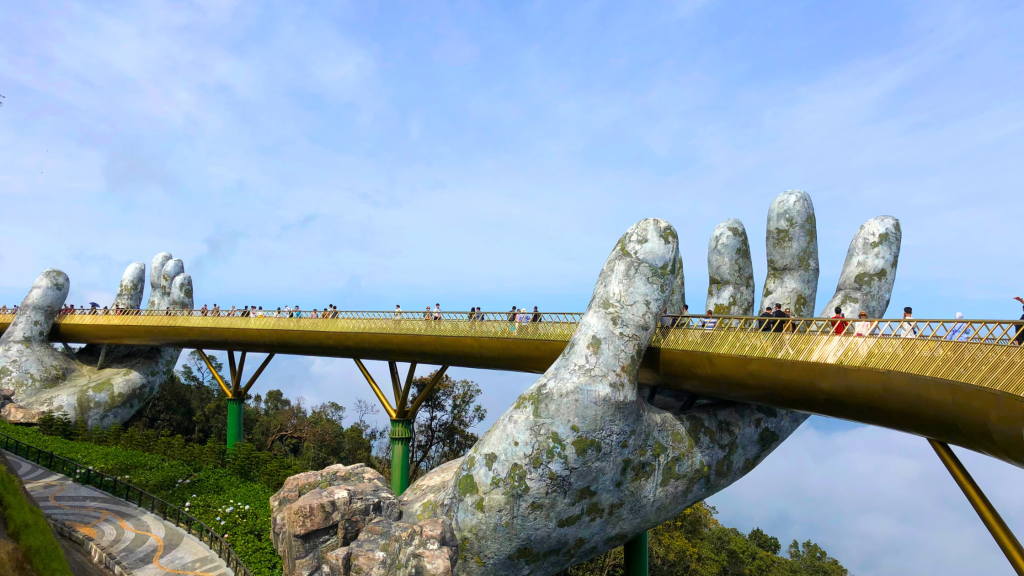
Why North to South?
Embarking on your Vietnam tour from north to south unravels a narrative as compelling as the country itself.
It begins in the cool, culturally rich tapestry of Hanoi, one of the best places to visit in Vietnam, and gradually transitions into the balmy allure of the tropical south. This Vietnam itinerary unfolds like an engaging storybook, chronicling Vietnam’s history from the age-old charm of Hanoi through the tradition-rich heartlands, before finally reaching the energetic pulse of Ho Chi Minh City. Your Vietnam itinerary finds its serene finale in the gentle rhythm of the Mekong Delta, a tranquil counterpoint to the dynamic cities.
This north-to-south itinerary interlaces a rich medley of experiences, perfectly blending Vietnam’s layered history, vibrant culture, and awe-inspiring landscapes—a truly immersive symphony for those embarking on a Vietnam adventure.
Travel to: Vietnam: Things to Do & Where to Go
Day 1-3: Hanoi

Begin your Vietnam tour in Hanoi , the lively capital. As one of the best places to visit in Vietnam, Hanoi is a harmonious blend of rich history and vibrant street culture. Wander through the Old Quarter, pay your respects at the Ho Chi Minh Mausoleum, walk down bustling Train Street, and soak up the tranquility of Hoan Kiem Lake. It’s an enticing start to your journey from Hanoi to Ho Chi Minh .
Day 4-5: Halong Bay
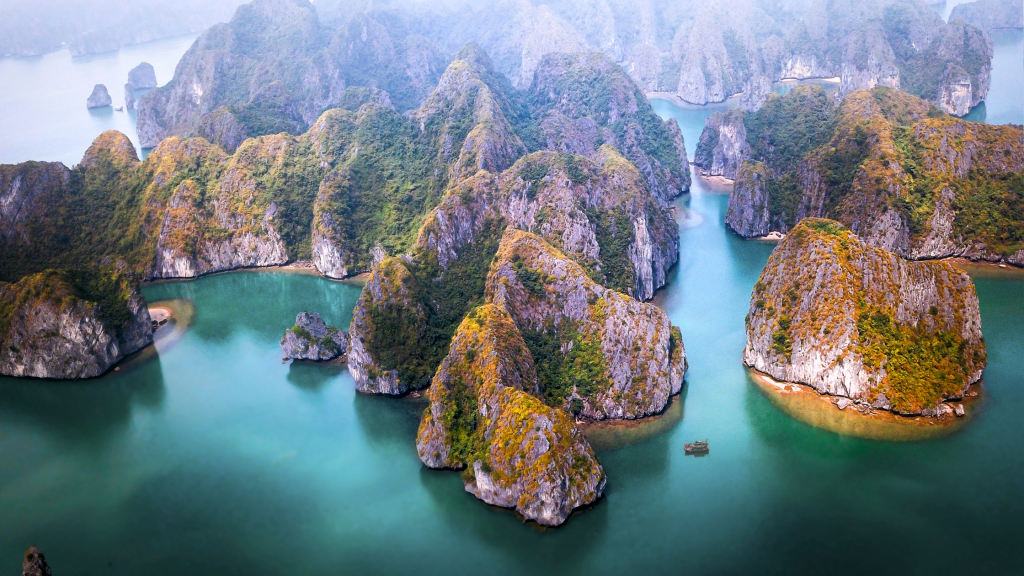
Your two-week itinerary leads you to the celestial beauty of Halong Bay , a UNESCO World Heritage Site. With emerald waters dotted by towering limestone islands, Halong Bay is an unforgettable part of your Vietnam vacation. Experience the serenity of an overnight stay on a traditional junk boat, or try out adrenaline-inducing activities like kayaking and cave explorations.
See Also: Best Islands to Visit in Vietnam
Day 6: Ninh Binh
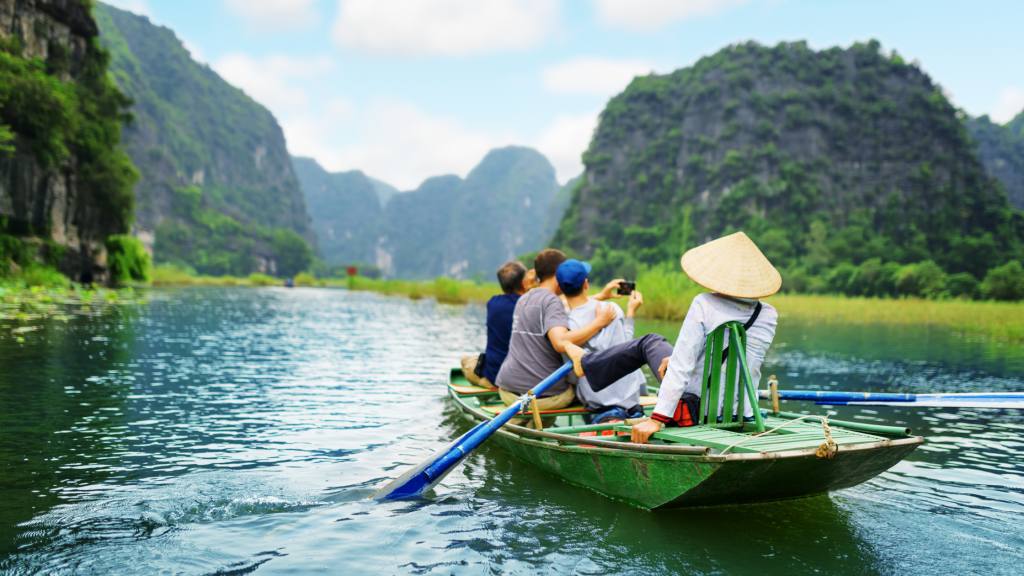
Next, embrace the rustic allure of Ninh Binh . Often referred to as “Halong Bay on Land,” Ninh Binh offers landscapes that echo enchantment, historical temples, and the rhythmic dance of iconic rice fields. This serene escape adds a unique chapter to your Vietnam adventure.
Read the article: Best Hikes in Vietnam
Day 7-9: Da Nang and Hoi An
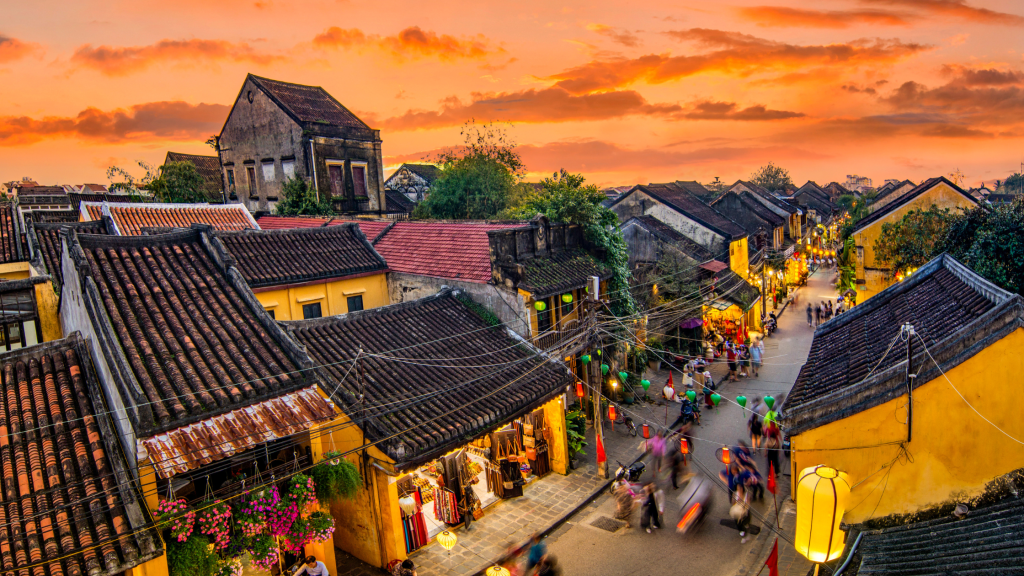
Take one of the flights to Da Nang, Vietnam, and journey to the enchanting town of Hoi An . Famous for its well-preserved Ancient Town, Hoi An comes alive at dusk, illuminated by a constellation of lanterns. Here you’ll also find some of the best beaches in Vietnam, perfect for a day of relaxation.
Day 10-12: Ho Chi Minh City
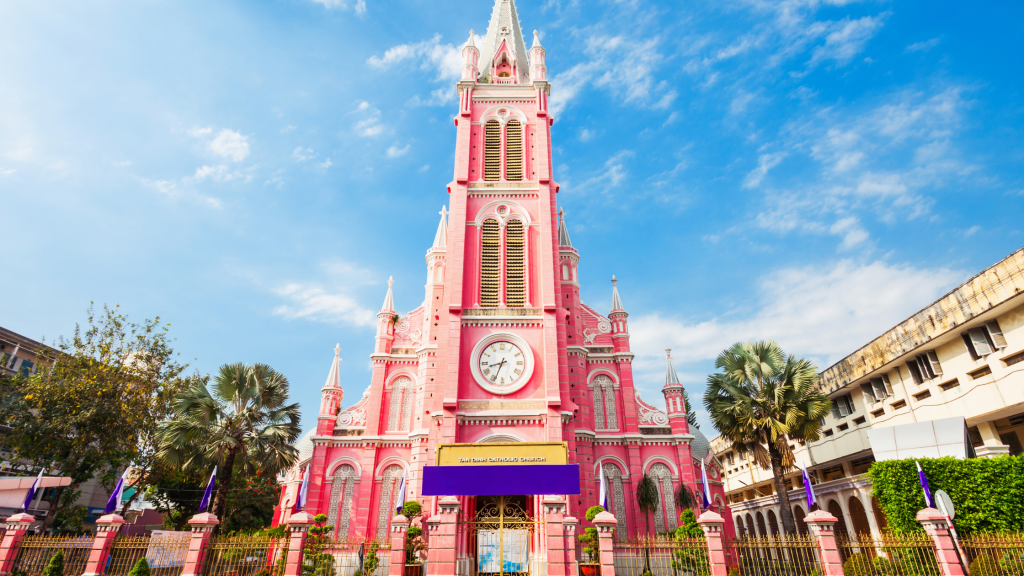
Venture south to the pulsating Ho Chi Minh City . This city, where French colonial landmarks share the skyline with modern skyscrapers, echoes Vietnam’s past and future. The War Remnants Museum and the Cu Chi Tunnels are must-visit sites for those interested in the triumphs and tribulations of the Vietnam War.
Day 13-14: Mekong Delta

Round off your two weeks in Vietnam by immersing in the verdant expanse of the Mekong Delta . Known for its intricate waterways, floating markets, Khmer pagodas, and villages encased by rice paddies, it’s a unique world that leaves a lasting imprint.
With this comprehensive itinerary, your two weeks in Vietnam will be an adventure-filled, enriching, and unforgettable experience. So, let the allure of Vietnam beckon you, and immerse yourself in the vivid tapestry that this beautiful country weaves.
Tips for traveling to Vietnam
- Enhance your Vietnam trip further by considering ready-to-book Vietnam tours . These guided tours offer invaluable insights into local culture, history, and hidden gems, and take care of logistical arrangements, allowing you to wholly soak in your Vietnam adventure.
- While English is widely spoken in tourist areas, a smattering of Vietnamese phrases can enrich your interactions. Familiarize yourself with local customs and remember to dress modestly, especially when visiting religious sites.
- When considering how long to travel in Vietnam, two weeks strikes the perfect balance, allowing you to traverse the country’s breadth without feeling rushed. This itinerary promises a range of experiences, from exploring bustling cities and historical sites to unwinding on pristine beaches and cruising the enchanting Mekong Delta.
- As you sketch your Vietnam adventure itinerary, remember that the best time to visit Vietnam typically spans from November to April. However, the country’s climate varies dramatically between the north and south, so pack accordingly.
See Also: Vietnam Travel Guide
Adding Thailand or Cambodia to Your Vietnam Adventure
Eager to extend your Vietnam vacation? Consider weaving Thailand or Cambodia into your Vietnam itinerary to experience the best of Southeast Asia. These neighboring gems offer unique cultures and breathtaking vistas that enrich your Vietnam trip beautifully.
Vietnam & Thailand
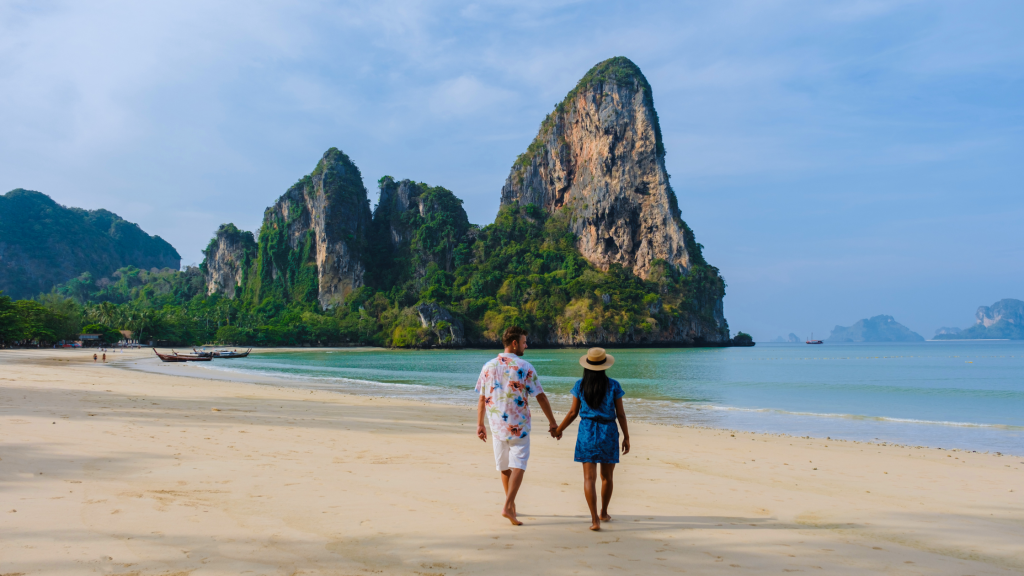
In the travel narrative of Vietnam vs Thailand , the latter captivates with its sun-drenched islands, timeless temples, and vibrant urban centers. Begin in the bustling heart of Bangkok, where you can explore the majestic Grand Palace and the serene Wat Pho. From there, migrate to Chiang Mai, a treasure trove of historic temples and cultural immersion. If sun, sand, and sea call your name, the southern islands such as Phuket and Krabi offer pristine beaches and unrivaled diving opportunities.
Read the article: Best Beaches in Southeast Asia: Thailand or Vietnam?
Vietnam & Cambodia
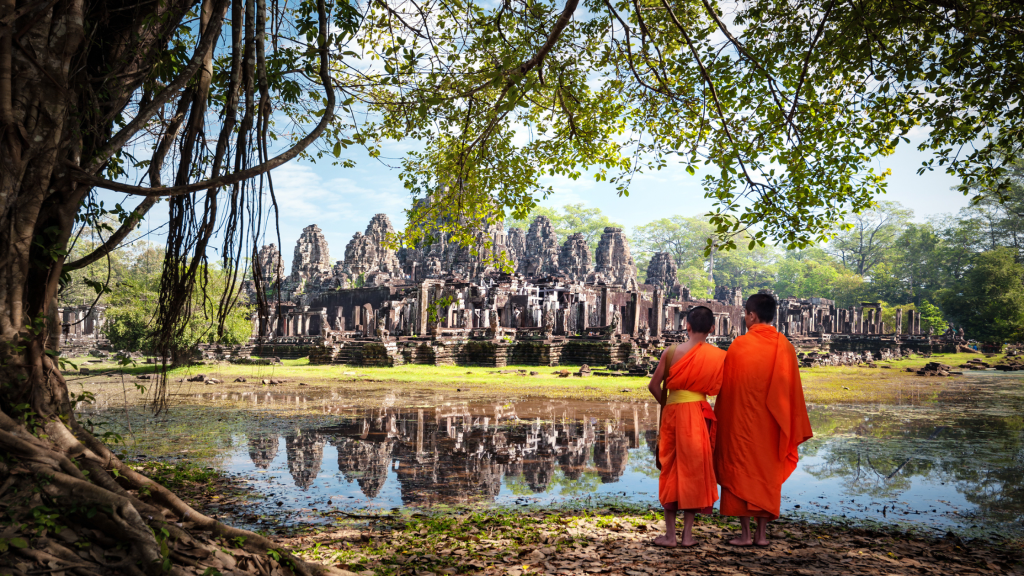
For those drawn to the whispers of history and architectural grandeur, Cambodia is a compelling addition to your Vietnam itinerary. The crowning glory is undoubtedly Siem Reap, housing the awe-inspiring Angkor Wat, the world’s largest religious monument. The capital city, Phnom Penh, delivers a blend of bustling markets and poignant historical sites, while the laid-back coastal town of Kep and the sparkling beaches of Koh Rong offer tranquil sanctuaries.
Travel to: Cambodia or Vietnam: How to Decide Where to Go?
Whether your heart leans towards the energetic pulse of Thailand or the historical resonance of Cambodia, adding either to your Vietnam adventure promises to enhance your tour of Southeast Asia with unforgettable memories.

Jenna Smith
As the B2B Content Manager here at TourRadar, Jenna certainly knows her stuff when it comes to travel writing. Hailing from the Brisbane office, she loves hopping on a plane every once in a while and is a sucker for Christmas Markets and mountains!
Related Articles
- Food & Drink
Your Guide to Amsterdam’s Secret Bars and Speakeasies
One of the most popular cities in Europe, Amsterdam has no...
- North America
Your Guide to Easter Around the World
Easter is a time to celebrate new beginnings. The symbols and...
- Central America
The Best Spring Break Destinations
As long as academics have been a part of our lives,...

The Seven Hardest Hikes in the US, Ranked
Get unlimited access to the world's best travel stories. subscribe now., privacy overview.

North Vietnam Itinerary: 7 days, 10 days or 2 weeks
If you’re wondering how to plan the ultimate North Vietnam itinerary to see all the best places as well as some hidden gems, this guide is for you.
This Northern Vietnam itinerary takes you to some of the most incredible destinations in the country.
From the chaotic Hanoi that never seems to sleep to the tranquil Ninh Binh Province with its lush rice paddies, soaring karsts, and winding rivers to the UNESCO Heritage Site of Ha Long Bay, the mountainous landscape of Ha Giang, and the impressive Ban Gioc Waterfall that straddles the borders of Vietnam and China.
If this sounds like the perfect trip for you, then keep reading to find out how to plan your Northern Vietnam itinerary for 7 days, 10 days, or 2 weeks.
I’ll also share some tips on how to travel between each destination and the best places to stay.

*** This article may contain affiliate links, meaning each time you click through and make a purchase, I earn a small commission at no extra cost to you which helps a lot in keeping this website running. Thank you for your support :)
Read more about Vietnam:
- What to do in Ninh Binh?
- How to hike to Mua Caves Viewpoint?
Table of Contents
How long to spend in Northern Vietnam?
I recommend spending at least 7 days in North Vietnam as it provides a great introduction to the country. With 7 days, you can easily explore Hanoi, Ninh Binh, and Ha Long Bay.
However, if you’re looking for something more adventurous, you can swap Ninh Binh or Ha Long for the Ha Giang Loop.
For those planning a 10 day Northern Vietnam itinerary, you’ll have more than enough time to visit all four locations.
And finally, if you have 2 weeks, you can travel further up north to Ban Gioc, which is the largest waterfall in Asia.

One thing to note is that you can’t travel between these destinations by plane, so you can only rely on ground transportation which can be time-consuming.
While the journey from Hanoi to Ninh Binh takes only 1.5-2 hours, it takes around 6 hours to travel between Hanoi and Ha Giang.
And although you can take a sleeper bus to avoid a whole day of travel, it’s not the most comfortable and definitely not ideal for getting some sleep (despite it being called a sleeper bus!).
So if you’re not keen on taking sleeper buses, then you’ll need to account for a travel day or two.
Below is a suggested North Vietnam itinerary for up to 2 weeks:
North Vietnam Itinerary
Hanoi: 2 days.
Your Northern Vietnam itinerary begins in the bustling capital city of Hanoi.
From wandering the narrow streets of the Old Quarter to sampling Vietnamese specialties like egg coffee or Banh Mi, and visiting temples and museums, you’ll find plenty to do here.
I recommend spending at least 2 days in Hanoi if you want to see all the main tourist attractions.

Things to do in Hanoi:
- Wander around Hanoi Old Quarter to do some shopping and explore the temples.
- Take a stroll around Ho Hoan Kiem Lake and visit Ngoc Son Temple.
- Try the famous egg coffee. My favorite is Café Giang but Hidden Gem Coffee and Café Dinh also make great coffee.
- Check out Hanoi night market that takes place every Saturday and Sunday.
- Explore the French Quarter and snap photos with the beautiful Hanoi Opera House.

- Watch the train whizz by the famous Train Street , which was closed for a few years but is now operational again in 2024.
- Try out the Vietnamese baguette, Banh Mi, a must on any North Vietnam itinerary! My favorite place to grab is baguette is Banh Mi 25 .
- Have a drink on Beer Street .
- Other things to do include visiting Ho Chi Minh Mausoleum and One Pillar Pagoda, Quan Thanh Temple, Tran Quoc Pagoda, Temple of Literature, St Joseph Cathedral, and Hoa Lo Prison Relic Museum.

Where to Stay in Hanoi?
I recommend staying in the Old Quarter since most attractions are within walking distance or a short taxi ride away, plus you have a huge range of accommodations to choose from.
I stayed in a private room at An Nam Corner which is located at the edge of the Old Quarter. It was relatively quiet at night, and I could reach the Old Quarter in less than five minutes by crossing the overhead bridge.
For those who prefer staying in hostels, there’s Hanoi Buffalo Hostel , Nexy Hostel , and Old Quarter View Hanoi Hostel , all of which are located in the Old Quarter.
If you’re looking for mid-range to luxury options, take a look at Flora Centre Hotel , L’Signature Hotel , or Sofitel Legend Metropole .
CLICK HERE FOR MORE HOTELS IN HANOI
How to get from Noi Bai Airport to Hanoi?
There are several ways to get to Hanoi from the airport – by bus, Grab, or private taxi.
I opted for a private airport transfer since I arrived in Hanoi early in the morning. The ride took about 45 minutes but may take longer during peak hours.
If you’re on a budget and staying in the Old Quarter, you can instead take the airport bus no. 86.
The bus runs daily from the airport to Hanoi Railway Station from 7 a.m to 10:10 p.m. Tickets cost around 45k VND.

Ha Long Bay: 1-2 Days
There’s no doubt that Ha Long Bay is on most people’s North Vietnam bucket list, including myself.
Cruising across the ocean dotted with limestone karsts, hiking to a viewpoint, kayaking, or swimming in the emerald waters are some of the things you can do during a Ha Long Bay cruise.
I was initially planning to do this Ha Long Bay day trip from Hanoi but since I was too exhausted after my 3-day Ha Giang loop tour, I had to skip it.
The tour has great reviews though and includes Sung Sot Cave, Luon Cave, and Titop Island where you can swim or hike to a viewpoint.
However, if you have more time, it’s best to opt for a 2-day cruise so your trip doesn’t feel too rushed. The 2-day cruise include everything from transportation to and from Hanoi to a cabin suite, food and water, cooking class, kayaks, entrance fees, and more.
Note : If you’re planning your North Vietnam itinerary between December and February, be prepared for cold and foggy weather in Ha Long Bay.
Another thing you should know is that Ha Long Bay is extremely popular so if you wish to avoid crowds, you might consider booking a Lan Ha Bay cruise instead.
Ninh Binh: 1-3 Days
Ninh Binh is famous for its steep limestone karsts, lush rice paddies, and winding rivers.
It was the highlight of my North Vietnam itinerary, so I highly recommend you visit as well.
Ninh Binh offers something for every type of traveler – whether you want to take it easy by going on a relaxing boat ride amid limestone karsts or get your heart rate up by hiking to the top of a mountain offering sweeping views of the valley below.
The landscape is pretty similar to Ha Long Bay so if you can’t afford a Ha Long Bay cruise, Ninh Binh can be a great alternative.

Things to do in Ninh Binh:
- Take a scenic boat ride at the Trang An Complex to see caves, temples, and soaring karst cliffs.
- Hike to the top of Mua Caves Viewpoint for a panoramic view of Ninh Binh.
- Rent a bicycle and explore the hidden corners of Ninh Binh.
- Wander around the massive Bai Dinh Pagoda.
- Snap photos at the iconic entrance gate to Bich Dong Pagoda.

- Learn about Vietnam’s past at its former capital, Hoa Lu.
- Pay a quick visit to the small but beautiful Thai Vi Temple.
- Visit Am Tien Lake and Pagoda.
- Check out the night market to buy souvenirs and sample local dishes.
- If you have time, you can take another boat trip at Van Long Nature Reserve or go on a hiking tour of Cuc Phuong National Park .
For more details, be sure to read my guide to the best things to do in Ninh Binh .

Where to Stay in Ninh Binh?
I stayed at Cherry Homestay and highly recommend it if you’re on a budget and want to be close to the main tourist attractions.
It’s located within walking distance of Mua Caves viewpoint, and they provide free bicycles for guests to explore the area. Breakfast is also included in the room rate.
Other budget-friendly options include For You Homestay which has both dorms and private rooms and incredible mountain views.
Alternatively, if you want to splurge a bit, you can book a stay at Mua Caves Ecolodge , Ninh Binh Hidden Charm Hotel , or Lalita Tam Coc Resort .
CLICK HERE FOR MORE HOTELS IN NINH BINH
How to get to Ninh Binh?
Bus : Several local buses travel between Hanoi and Ninh Binh but if you want to be more comfortable, I recommend taking the limousine bus/van over the regular bus which is faster, taking around 1.5 hours. Ticket price starts at 200k VND. Check price and schedule here
Train : Another option is the train which takes around 2 hours. It’s slightly cheaper than the bus, costing around 150-250k VND depending on the time and cabin class. Check price and schedule here
Taxi : If you’re traveling with a group, you can hire a private taxi starting at USD 40. The total journey should take around 1.5 hours. Check price here
Tour : If you’re short on time, you can take a Ninh Binh day tour from Hanoi. The tour includes Trang An Complex, Bai Dinh Pagoda, and Mua Cave viewpoint as well as hotel transfers, boat tour tickets, lunch, and water. Check price here

Ha Giang: 3-4 Days
If you want to explore one of the most stunning places in all of Vietnam, then you should add Ha Giang to your Northern Vietnam itinerary.
Situated near the border of China, Ha Giang boasts some of the most dramatic landscapes with epic viewpoints, waterfalls, and hill tribe villages.
The best way to explore this region by renting a motorbike and driving the 300+ km loop.
I did the 3-day Ha Giang loop tour with Easy Rider but if you have more time, you can spend up to a week driving around the loop as there’s so much to see.

The tour includes everything from transportation to and from Hanoi, food, accommodation, entrance fees, an Easy Rider (someone who will drive the motorbike for you), and a tour guide.
Having a local driver means won’t have to worry about navigating the steep winding roads, which can be challenging for inexperienced drivers.
Some of the highlights of the Ha Giang Loop include the Heaven Gate, Dong Van Plateau, Ma Pi Leng Pass, Nho Que River, and Du Gia Waterfall.
Note : If your don’t feel comfortable on a motorbike, you can instead do the Ha Giang loop by car .

Where to Stay in Ha Giang?
If you decide to book the 3-day Ha Giang loop tour with easy rider I mentioned above, you won’t have to worry about finding a place to stay as this will already be sorted out for you.
However, if you choose to drive the loop on your own, there are many affordable guesthouses in all the main towns along the loop, such as Yen Minh, Meo Vac, and Du Gia.
I recommend using booking.com or Google Maps to find your accommodation.
Luckily, you don’t have to book far in advance in case you need to switch up your itinerary.

How to get to Ha Giang?
The most popular way to travel from Hanoi to Ha Giang is by sleeper bus. It costs around 250k-300k VND and the journey takes around 6 hours.
However, don’t expect to get a good night’s sleep on the bus as they aren’t the most comfortable and can be quite noisy.
I’ve heard so many horror sorties about the sleeper buses in Vietnam that I opted for the VIP/limousine bus instead, which is more spacious and comfortable.
Tip : If you’re booking this Ha Giang tour , I highly recommend paying a little extra to upgrade to the limousine bus.

Cao Bang and Ban Gioc Waterfall: 2-3 Days
Cao Bang City is located about 300 km north of Hanoi and serves as the gateway to Ban Gioc Waterfall. Although getting there can be a bit challenging, it’s absolutely worth a visit, in my opinion.
Ban Gioc is the largest and most impressive waterfall in Asia and cascades across the borders of Vietnam and China (you can even see China on the other side of the river!).

Tip : The waterfall gets super busy after 10 a.m so make sure to visit early in the morning.
After exploring Ban Gioc Waterfall, I recommend checking out the nearby Chua Phat Tich Truc Lam Temple for a bird’s eye view of the waterfall and the surrounding karst mountains.
There’s also a cave about 3 km away but it’s only possible to get there if you have a motorbike or driver.

How to get to Ban Gioc Waterfall?
To get to Ban Gioc Waterfall, you first need to go to Cao Bang City which is located about 2 hours away.
If you’re coming from Ha Giang, you need to take a bus to Bac Me, Bao Lam, or Bao Lac and then another bus to Cao Bang.
It’s best to arrange transportation through your hotel in Ha Giang to guarantee all connections.
Since the bus journey is quite long and tiring (around 7 to 8 hours), I recommend spending the night in Cao Bang before taking a local bus to Ban Gioc the next morning.
The local bus from Cao Bang to Ban Gioc costs 85k VND and departs every 30 minutes to one hour between 5:05 a.m and 5:15 p.m.

After the Ha Giang tour, I actually went back to Hanoi for a few days before going to Ban Gioc. I booked the bus from a travel agent in Hanoi and paid 500k VND.
Note : Not all travel agents sell bus tickets to Cao Bang so if you have trouble finding one, you can book on 12Go instead.
I boarded the bus at Hanoi Opera House, and it took about 6 hours to get to Cao Bang. I spent one night there, and the next morning I took a local bus to Cao Bang from this bus stop at 6:10 a.m.
However, if you’re short on time and don’t want to deal with the logistics of getting there and finding accommodation, you can instead book this 2-day 1-night Ban Gioc Waterfall tour from Hanoi .
It includes transfers to and from Hanoi, 1-night hotel, 2 lunches, 1 dinner, 1 breakfast, water, and a tour guide.

Where to Stay in Cao Bang and Ban Gioc?
I stayed at Hong Van Homestay in Cao Bang, which is located just a few meters from the bus stop to Ban Gioc Waterfall. The room was clean, spacious, and affordable.
Lan’s Home is another great option for accommodation in the city center. They offer both dorms and private rooms at an affordable price.
Alternatively, if you prefer to stay near Ban Gioc, Khuoi Ky Eco Homestay is a great choice. It features both dorms and private rooms and is located about a 5-minute drive from the waterfall, so ideal for those who want to get there early.
CLICK HERE FOR MORE HOTELS IN CAO BANG AND BAN GIOC

Additional Tips for your North Vietnam Itinerary
- Most travelers visiting Vietnam need a visa to enter the country. You can find all the information on visa requirements, fees, and other relevant details on the official website here .
- The best time to visit North Vietnam is from October to November and from March to May. During these months, the weather is generally dry and pleasant without being too hot or too cold.
I hope you found this North Vietnam itinerary helpful. If have any questions, just comment below.
Steph is an outdoor enthusiast who’s always down for adventure. When she's not traveling abroad, you’ll either find her exploring her own backyard or researching her next trip. She writes adventure travel guides featuring waterfalls, mountains, and beaches and shares her tips on how to travel on a budget without compromising on comfort and experience.
Guide to Hang Mua Caves Viewpoint Vietnam + Scams to Avoid
10 best swimming beaches in mauritius according to a local, you may also like, 11 best things to do in ninh binh & tam coc vietnam, leave a comment cancel reply.
Save my name, email, and website in this browser for the next time I comment.
This website uses cookies to improve your experience. We'll assume you're ok with this, but you can opt out if you wish. Accept Read More
- pininterest

- Search for: Search Button
Planning a Vietnam Trip From North To South in 2024 [suggested itneraries]
Vietnam is a country that has captured the imagination of travellers all over the world. From its stunning natural landscapes to its rich cultural heritage, Vietnam offers an unforgettable experience for visitors.
And what better way to explore this fascinating country than by planning a trip from north to south? This route takes you through some of Vietnam’s most iconic destinations, allowing you to witness the diversity and beauty of this Southeast Asian gem firsthand.
In this article, we’ll guide you through everything you need to know about planning your own Vietnam trip from north to south, including must-see destinations, travel tips, what to wear in Vietnam, weather, and more.
You can use our suggested itineraries for:
One week in Northern Vietnam
One week in Central Vietnam
One week in Southern Vietnam
So buckle up and get ready for an adventure!
Examples of One Week in North Vietnam
Day One – arrival Hanoi
Day Two – Hanoi
Day Three – Halong Bay
Day Four – return from Halong Bay
Day Five – overnight train to Sapa
Day Six – Sapa
Day Seven – overnight train to Hanoi – depart Hanoi
Day One Arrive Hanoi
Day Two Hanoi
Day Three Halong Bay – day cruise
Day Four – Ninh Binh
Day Five – return from Ninh Binh
Day Six – Mai Chau
Day Seven Return from Mai Chau depart Hanoi
One week Central Vietnam
Day One – Arrive Danang
Day Two Danang – Linh Ung Pagoda, Marble Mountain, Cham Museum
Day Three – Hue
Day Four – Hue
Day Five – private transfer Hue to Hoi An visiting Hai Van Pass on the way
Day Six – Hoi An
Day Seven – Hoi An and return to Danang to fly out
Day One – fly into Hue
Day Two – Hue
Day Three – Hue to Hoi An – private sightseeing transfer
Day Four – Hoi An
Day Five – day trip to Danang – Marble Mountain, Linh Ung Pagoda
Day Six – Visit My Son Archaeological Site
Day Seven – fly out of Danang
One week North and Central Vietnam
Day One Hanoi
Day Two – day trip to Halong Bay
Day Three – fly to Danang one night
Day Five – My Son Archaeological Site
Day Six – An Bang Beach
Day Seven – Depart Hoi An for flight from Danang
One Week Southern Vietnam
Day One – arrival in Ho Chi Minh City
Day Two – morning tour to Cu Chi Tunnels. Afternoon – Ben Thanh Market for shopping and dinner
Day Three – Mekong Delta
Day Four – Ho Chi Minh City
Day Five – Fly to Phu Quoc
Day Six – Phu Quoc
Day Seven – Return to Ho Chi Minh City
Option Two :
Day One arrival into Ho Chi Minh City
Day Two Cu Chi Tunnels
Day Three Mekong Delta overnight stay Can Tho
Day Four Mekong Delta overnight stay Chau Doc
Day Five Ho Chi Minh City
Day Six Mui Ne
Day Seven Ho Chi Minh City
One Week Central and Southern Vietnam
Day One – fly into Danang and transfer to Hoi An
Day Two – Hoi An
Day Three – Hoi An
Day Four – fly Danang to Ho Chi Minh City
Day Five – Cu Chi Tunnels afternoon visit Ben Thanh Market
Day Six – Mekong Delta
Day Seven Fly out of HCMC
There are many options available depending on how long you have allowed to visit Vietnam.
You can mix these itineraries but remember it is such a big country do not rush your journey.
Looking for nightlife in Vietnam? Which is better Hanoi or Ho Chi Minh City ?
If you love hiking you have come to the right South East Asian country – some of the best hikes in Vietnam can be found from the north of Vietnam right through to the South including the central region.
Air Asia, the budget carrier , has flights to Hanoi, Ho Chi Minh City, Danang and Nha Trang, from major Asian cities.
Not sure which airport to fly into?
Vietnam Map
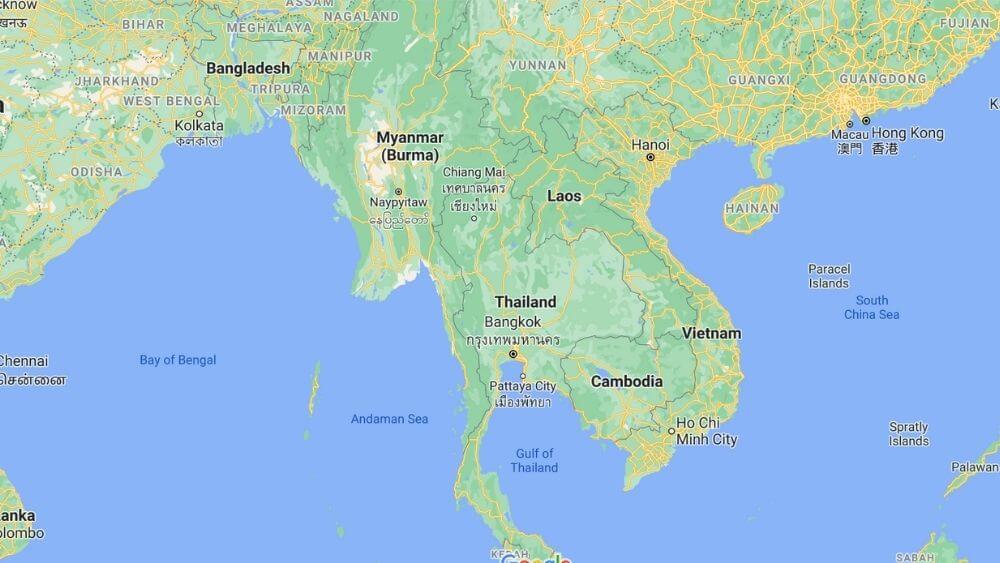
YouTube Videos – We have created 45 Youtube videos covering all of our adventures in Vietnam. Check them out here.
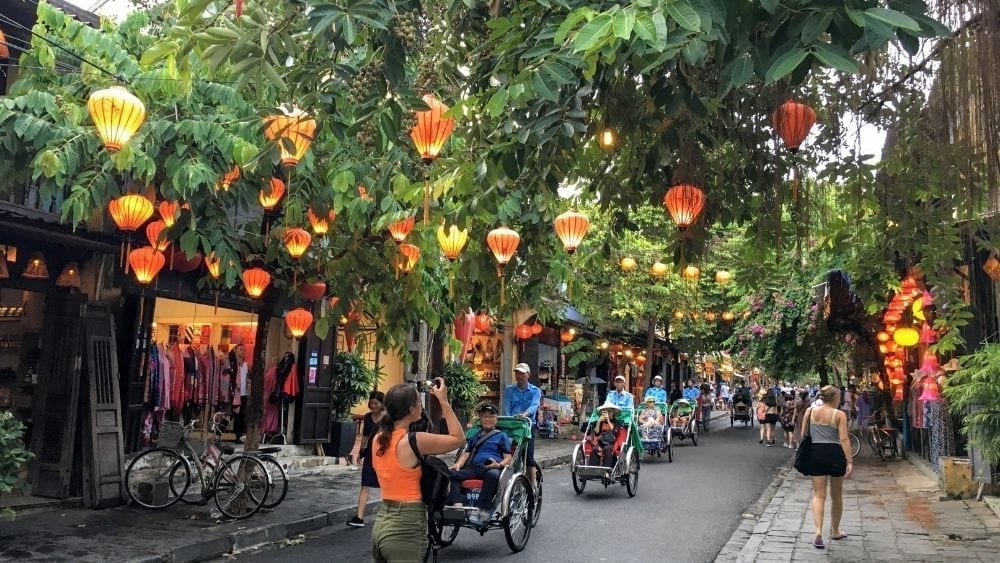
This post may contain affiliate links. Please see our disclosure for more information. As an Amazon Associate, we earn from qualifying purchases (if applicable).
Join our Vietnam Travel Planning Group:

What is the Best Way to Visit Vietnam
Vietnam holidays – where do I start ?
This is a regular question we get from our travel community. Should they look at taking Vietnam tours or attempt Vietnam “DIY” travel? Your Vietnam vacation can include both, it depends on how much time you have and whether you like to be organised all the time or just some of the time. Are you comfortable travelling around Vietnam on your own?
Another question we get is – Is Vietnam safe ? We travelled for 3 months and felt as safe in Vietnam as in any other Asian country.
Vietnam 3 Weeks North To South Itinerary Overview
Day 1 – 2 Arrival in Hanoi and spend two days exploring the Old Quarter, Hoan Kiem Lake, Temple of Literature, Presidential Palace
Day 3 – 4 Overnight cruise on Halong Bay from Hanoi
Day 5 – 6 Sapa overnight with a trek
Day 7 – 8 Tam Coc in the Ninh Binh Province
Day 9 Fly to Hue or take the day train from Hanoi
Day 10 – Hue’s Imperial Citadel
Day 11 – Royal Tombs tour
Day 12 – Sightseeing tour from Hue to Danang via Hai Van Pass
Day 14 – Marble Mountain and Danang
Day 15 – Transfer from Danang to Hoi An
Day 16 – Explore Hoi An Ancient Town, Japanese Bridge, Walking tour of Hoi An
Day 17 – Visit An Bang Beach or Ba Na Hills
Day 18 – Fly to Ho Chi Minh City
Day 19 – Cu Chi Tunnels
Day 20 Mekong Delta
Day 21 Depart Ho Chi Minh City
If you can do Vietnam North To South in 4 weeks or longer:
Add in Mai Chau (140 km from Hanoi) after Sapa or Mu Cang Chai (300 km NW from Hanoi)
Another alternative is Ha Giang Loop from Hanoi – 4-day tour by car.
If you are an experienced motorcycle rider you can do Ha Giang Loop from 3 – 4 days.
Phong Nha is an alternative when visiting Central Vietnam.
For Southern Vietnam, you could consider Nha Trang, Da Lat, Mui Ne or Phu Quoc
Sim Cards in Vietnam
Enjoy the convenient and instantly available eSIM data plans for Vietnam. Choose from a variety of options and activate your eSIM anywhere on your journey in Vietnam.
Our top 15 Most Beautiful Places to Visit in Vietnam will assist you in deciding whether to hit the beaches, the city, the islands or the mountains on your next Vietnam vacation.
Looking to holiday on one of Vietnam’s Islands Click Here
Places to Visit in Vietnam
Northern vietnam.
Flying into Hanoi and need an airport transfer to your hotel? Click here for the latest prices
Hanoi is the capital of Vietnam and is located on the west bank of the Red River 140 km from the South China Sea. It is vibrant, busy and a must-see in any Vietnam itinerary.
Head to the Old Quarter and visit the many lanes and alleyways selling local goods and enjoy local street food. The weekend walking street market starts on Friday evening at 6 pm and finishes on Sunday at midnight. You can shop for souvenirs, try the local cuisine and enjoy local street theatre as you wander around. It was one of our favourite weekend adventures.
Another must-do is to visit Hoan Kiem Lake at sunrise and watch the varied types of exercise undertaken by the locals. Some exercise routines you will recognise, others you won’t. It is the coolest part of the day.

Fly into Hanoi for a weekend – we have put together an itinerary on recommended things to do in Hanoi.
Our itinerary includes visiting:
- take an early morning visit to Hoan Kiem Lake
- Temple of Literature
- Military History Museum
- Ho Chi Minh Mausoleum
- One Pillar Pagoda
- Old Quarter Weekend Walking Street Market
- Visit Beer Street
- Hanoi Ancient House
- Thang Long Water Puppet Theatre
Popular Tours in Hanoi
Hotel Accommodation in Hanoi

We have put together an Accommodation Guide for Hanoi.

We stayed a couple of nights at the luxury Pullman Hanoi Hotel . The Pullman Hanoi is located within walking distance of the Temple of Literature and the War History Museum. They offer a shuttle bus to the Old Quarter.
The bedrooms are luxuriously decorated and the La Cheminee Restaurant offers an extensive breakfast buffet with Asian and Western options. Try out their lunch and dinner specialities. You can enjoy an evening cocktail or two in their Mint Bar . After a day of sightseeing enjoy a spa treatment, work out in the gym, play a game of tennis or just relax by the pool. You can read about our stay here.
Book through Booking.com here
Book through Agoda here
You can read travellers’ reviews on Tripadvisor here.
Our accommodation guide covers 5-star, 4-star and 3-star hotels in some of the most popular districts to stay in Hanoi.
For more Hanoi hotels:
Visit Halong Bay on a cruise from Hanoi for either 1 or 2 nights. We travelled with Emeraude Cruises, the same ship that American Chef Anthony Bourdain sailed on and reported from in his TV series – Parts Unknown. Our travel tip is to book a 2-night cruise, you can read our story here .
How to get to Halong Bay ? There are many options from bus, luxury bus, rail to private car transfer.
Halong Bay is 170 km from Hanoi and takes approximately 3 hours depending on traffic. The UNESCO World Heritage site is made up of 1600 limestone islands and islets. Imagine sailing through turquoise blue water, visiting a pearl farm, kayaking, visiting caves, taichi at sunrise, cooking class or just relaxing on board.
2 Day One Night Cruise
Explore the picturesque Ha Long Bay on a 2-day cruise, and discover paradise. Climb aboard a traditional junk boat and zigzag through the tiny islands. Enjoy swimming, kayaking in the blue waters, and discover hidden caves.
1 Day Cruise from Hanoi
Visit the spectacular Ha Long Bay, a UNESCO World Heritage site, on a shared deluxe traditional cruise. See Heaven Palace Cave, islands, and islets, go kayaking, or enjoy a bamboo boat ride.
Ha Long – Lan Ha Bay: 3-Day Tour on 5-Star Cruise
Immerse yourself in the beauty of this stunning waterway aboard a classic Vietnamese vessel. This unique itinerary will lead you amongst the natural wonders and through the quieter corners of the Bay.
Halong Bay Hotel Accommodation
Looking for where to stay in Halong Bay?
Check Booking.com for latest deals here
Check Agoda for latest deals here

You should plan to spend at least 2 nights minimum.

We travelled with Victoria Voyages on their overnight train from Hanoi and stayed at the Victoria Sapa Resort & Spa.
The Victoria Sapa Resort & Spa is now known as the BB Sapa Resort & Spa.
Check availability on Booking.com here Check availability on Agoda here
More Hotel Options on Where to Stay in Sapa

Mai Chau is located 3 hours from Hanoi. If you are short of time when visiting Hanoi Mai Chau is an alternative to travelling to Sapa, or if you have unlimited time why not visit both? Mai Chau is perfect for trekking, caving, kayaking, cycling, visiting local markets and enjoying local cuisine.
You can read our article on What To Do in Mai Chau which includes our accommodation at the Mai Chau Lodge here.
Mai Chau Accommodation

We can recommend staying at the Mai Chau Lodge . Just on the outskirts of Mai Chau village the Mai Chau Lodge offers luxurious accommodation, the best of local cuisine, a spa and swimming pool. You can organise tours through their tours centre for trekking, caving, cycling and more. We enjoyed a sunset drink on the lake on the property before heading into the restaurant for dinner and a local dance performance later in the evening.
Read what travellers have said about the Mai Chau Lodge here .
Check availability on Booking.com here
Check availability on Agoda here
More Hotel Options on Where to Stay in Mai Chau
Have you considered visiting Ninh Bin?
Ninh Binh, a province located in the northern region of Vietnam, is often referred to as the “Halong Bay on land.” This stunning destination boasts natural wonders such as karst mountains, caves, rivers, and rice paddies. If you’re seeking an authentic Vietnamese experience away from the hustle and bustle of busy cities like Hanoi or Ho Chi Minh City, Ninh Binh should be at the top of your list.
We offer alternatives to visiting Ninh Binh from Hanoi.
Another alternative to Sapa and Mai Chau is to visit Mu Cang Chai .
Nestled in the heart of Vietnam’s northwest region, Mu Cang Chai is a hidden gem that has captured the attention of nature lovers and adventure seekers alike. With its breathtaking rice terraces cascading down rugged mountain slopes and quaint ethnic villages dotting the landscape, this remote destination offers an authentic glimpse into the local culture and way of life. Whether you’re seeking a peaceful retreat or an outdoor adventure, Mu Cang Chai is a must-visit destination that promises to leave you mesmerized by its natural beauty and cultural richness.
For the adventurers why not travel the Ha Giang Loop ? You can travel by motorbike or by private car on an organised tour. From Hanoi, you can take a bus or car transfer with travel times varying from 5 – 10 hours.
Ha Giang, located in the northernmost region of Vietnam, is a rugged and remote province that boasts some of the most spectacular scenery in Southeast Asia. The Ha Giang loop is a popular route for adventurous travellers seeking to explore this stunning region by motorbike or bicycle. With winding mountain roads, breathtaking vistas, vibrant ethnic minority cultures, and the opportunity to experience authentic rural life, it’s no surprise that more and more people are flocking to Ha Giang each year.
Central Vietnam Places to Visit

We travelled by the Reunification Express during the day from Hanoi to Hue. The journey took approximately 15 hours. We would recommend that you book first-class tickets and not the hard seat option.
Travel Tip: Take your own food and drinks with you, make sure your phone is charged to arrange a transfer in Hue to your hotel. There are no ‘grab’ taxis available in Hue at the time of writing.

Food trolleys come around at regular intervals on board the Reunification Express.

Which Airport Serves Central Vietnam
Danang is the major international airport that serves Hue, Danang and Hoi An.
Hue was the national capital of Vietnam from 1738 -1775. Most visitors only allow an overnight visit but we would recommend that you plan at least to spend 4 nights in Hue . Hue was also the home of the Nguyen Dynasty from 1802 – 1945. Hue is located on the banks of the Perfume River. We definitely recommend that you add it to your Vietnam itinerary.
What to do in Hue
Read our following articles on Hue here:
Visit the Imperial City
- Top Things to do in Hue
More Things To Do in Hue
Where to stay in hue .
We can recommend two places to stay in Hue.
Hue Garden Villa Hotel

Address : 66 Lê Lợi, Phú Hội, Thành phố Huế, Thừa Thiên Huế, Vietnam
A well-priced centrally located in Hue with breakfast included, good wifi and a swimming pool. The staff were excellent, caring and were like family to us. The rooms are large and clean. The location is perfect for the Weekend Walking Street just a minute’s walk away.
Guest Review : Perfect location, clean, nice and helpful staff. First time in a homestay. We are very positively surprised
Check prices with Booking.com here
Check prices with Agoda here
Read what travellers have said about the Hue Garden Villa Hotel here.
Emm Hotel Hue

Address : 15 Lý Thường Kiệt, Phú Nhuận, Thành phố Huế, Thừa Thiên Huế,
The Emm Hotel in Hue is located 15 minutes from Hue Walking Street. The Emm Hotel belongs to a chain of Emm Hotels which is owned and operated by the TMG Travel Group, one of Vietnam’s largest travel groups. The 3.5 star is decorated in a funky modern style, offers a swimming pool, buffet breakfast and one of the best restaurants in Hue – Spice Viet .
Read what travellers have said about the Emm Hotel in Hue here .
To Travel Too Tip:
Our favourite group of hotels throughout Vietnam were Pullman Hotels, Emm Hotels and Victoria Hotels. Each Emm Hotel has a Spice Viet Restaurant which turned out to be our favourite group of restaurants. The food is fresh, healthy, with an innovative menu and each location has a local speciality which is a must to try.
Danang is located halfway between Hanoi in the North and Ho Chi Minh City (Saigon) in the South. The hotels that are located on the beach experience the best of sunrise, it is worth getting up early just to experience a Danang sunrise.
A visit to the local market is highly recommended: Han Market at 19 Đường Trần Phú, Hải Châu 1, Hải Châu, Đà Nẵng 550000, Vietnam.
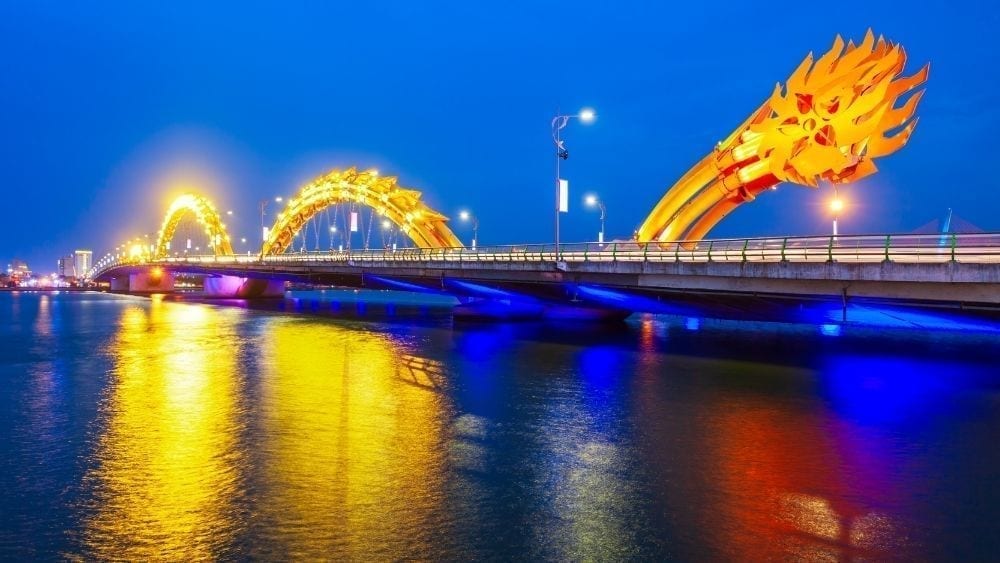
The Dragon Bridge, the longest in Vietnam, is illuminated with LED lights and spits fire on the weekends at 9 pm.
Cham Museum Danang
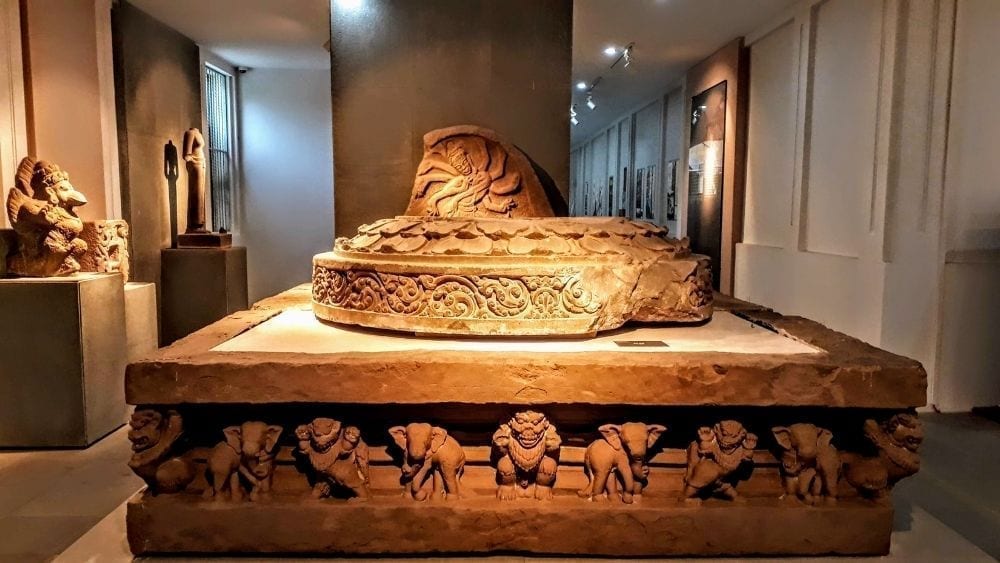
Address : Số 02 Đ. 2 Tháng 9, Bình Hiên, Hải Châu, Đà Nẵng
The Cham Museum houses the largest collection of Cham sculptures in the world. If you are considering visiting My Son it is recommended that you visit the Cham Museum before.
Things to do in and around Danang
Where to stay in danang.
In Danang, you have options to stay in the city or stay on the beach.

In the city, we stayed at the Mitisa Hotel at 67-69 Nguyen Van Linh Hai Chau close to the Dragon Bridge. The rooms were comfortable, breakfast was included and good wifi. In the evening you can head to the top of the hotel to the swimming pool for 360-degree views over the city and Dragon Bridge.
Check availability on Booking.Com here
You can read travellers’ reviews here.

We also spent a few nights relaxing on the beach at the luxurious Pullman Danang Beach Resort & Spa . You can read our review below. The Pullman Danang Beach Resort & Spa is the perfect location for families, couples, solo travellers and groups. There is a variety of accommodation available from rooms to villas and suites. We thoroughly enjoyed our morning market tour with the cooking class in the afternoon, spa treatments and tai chi in the morning. Cocktails at sunset were spent on the beach and in their famous bar with stunning views from reception to the beach.
Pullman Danang Beach Resort & Spa – read our review here
Read travellers’ reviews here.
For more hotel options on where to stay in Danang
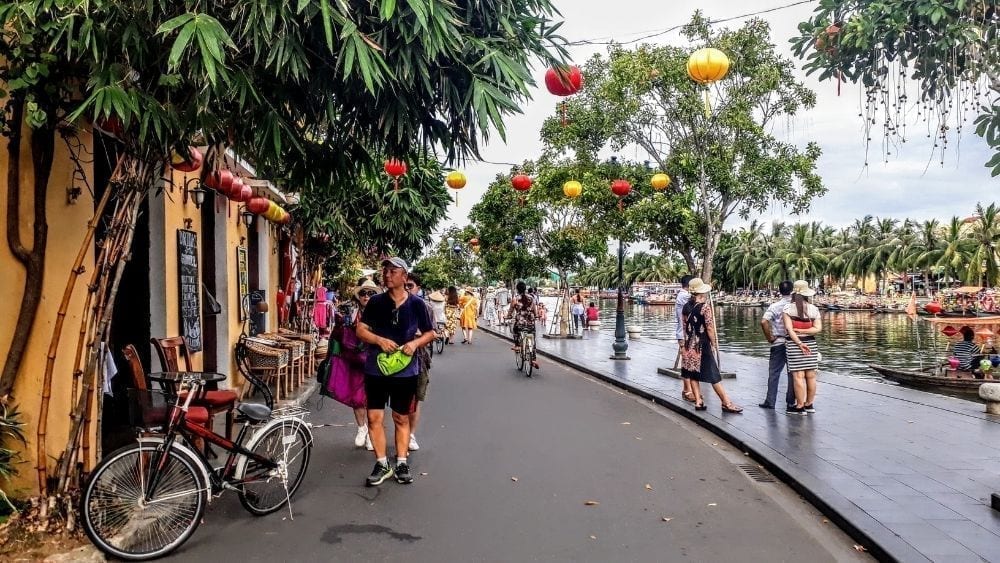
Hoi An was definitely a favourite town to visit. The ancient town is located on the river, with colourful buildings and bridges, great restaurants and bars, markets, shopping and more. It can be very busy especially at sunset when the river comes alive with lantern boats taking tourists for a short cruise up the river.
If you are staying in Hue and want to spend a few nights in Hoi An you can take a private one-way tour (either direction). We looked at all transfer options from train and bus and taking a private tour was the way to go.
Good to know : When booking your private one-way sightseeing tour from Hue to Hoi An with BeeBee Travel when you mention totraveltoo2023 you will get a 5% discount.
A popular tour is an early My Son private tour from your hotel in Hoi An. Visit the UNESCO World Heritage Listed My Son Sanctuary on a full-day trip from Hoi An. Marvel at the array of beautiful Hinduism-inspired temples, retrace the steps of history, and watch a fantastic centuries-old Cham ceremony performance.
One of our favourite days out in Hoi An was taking a Hidden Hoi-An walking tour where we visited the back streets of Hoi An, met local producers, enjoyed coconut coffee, and experienced a theatre performance before cruising in a lantern boat.
If you want a great adventure why not take a sidecar tour to Monkey Mountain, we travelled with the sidecar tours offered by the Victoria Hoi An Beach Resort & Spa. Our tour included the local fishing village in Danang, Monkey Mountain and a gourmet lunch as well as visiting the Lady Pagoda on the hill that overlooks Danang.
Visit An Bang Beach
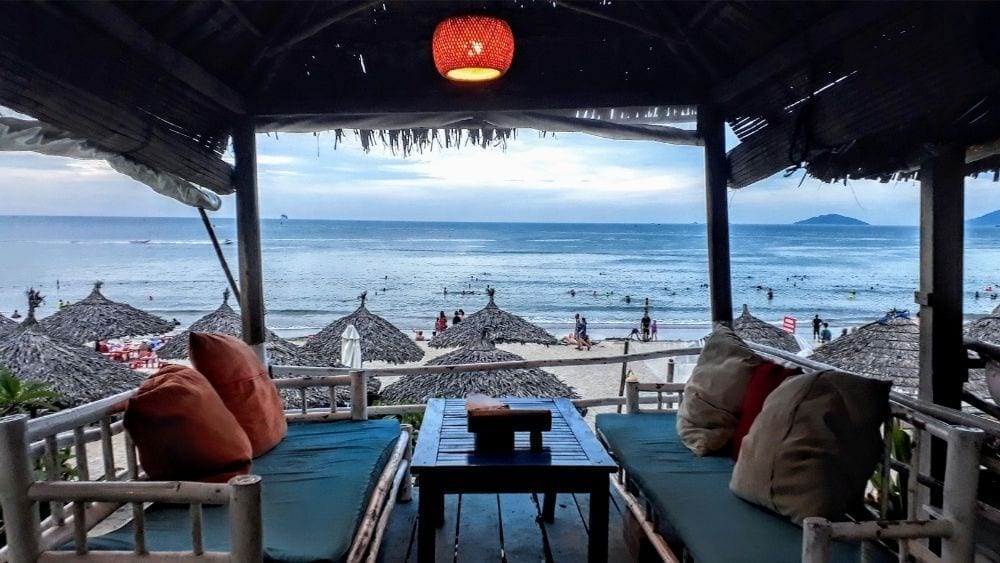
Take a local taxi to the unspoilt An Bang Beach outside of Hoi An. There are many restaurants to choose from and local water sports are on offer.
More Things To Do in Hoi An
Hoi an accommodation.
If you love colourful and historical cities we recommend that you stay in Hoi An ancient town at:

EMM Hotel – about a 10-minute walk to the centre of the Old Town. A modern decorated funky hotel with a swimming pool, pool bar, gym, buffet breakfast, good wi-fi and our favourite Spice Viet restaurant. We spent a week at the EMM Hotel and loved every minute. Relaxing by the pool after a day of sightseeing was such a welcome relief. You can even enjoy a transfer to their sister hotel the Victoria Hoi An Resort & Spa and use their facilities.
You can read travellers’ reviews here .

Ha An Hotel – in the centre of the Old Town at 06-08 Phan Boi Chau Son Phong. If you want to be right in the action the Ha An Hotel is the recommended choice. One minute from the hotel and you are right in the middle of the Hoi An market and a little further down the road you will be spoilt for choice of restaurants. The Ha An Hotel has a colonial feel, a good breakfast is included, good strong wifi and a swimming pool. We spent 5 nights staying here with friends and loved every minute of our stay.

For beach accommodation, we can recommend the Victoria Hoi An Resort & Sp a on Cua Dai Beach. You can read our review below:
Located on Cua Dai Beach is the luxurious Victoria Hoi An Resort & Spa about 15 minutes from the centre of Hoi An. The hotel offers a swimming pool, private beach, gym, spa, tennis courts, sidecar tours, great restaurants and local entertainment on regular evenings all in a luxurious setting. You won’t want to leave – ever!
Compare prices on Agoda here
If you are on a budget but still would like to enjoy a beach vacation we can also recommend:

Hoi An Blue Seaside Homestay on Dien Ban – a 20-minute walk along the beach will bring you to the famous Ang Bang beach with its restaurants and bars. Comfortable budget-style accommodation with good wifi available for guests. A small restaurant is on-site serving breakfast, lunch and dinner.
Southern Vietnam
Have you considered travelling to Nha Trang?
Nha Trang, a coastal city located in the south-central region of Vietnam, is a destination that should not be missed. Known for its pristine beaches, crystal-clear waters, and charming culture, Nha Trang has become increasingly popular among travellers seeking a tropical paradise. Whether you are looking to relax on the beach or embark on an adventure-packed journey, Nha Trang offers something for everyone.
Ho Chi Minh City
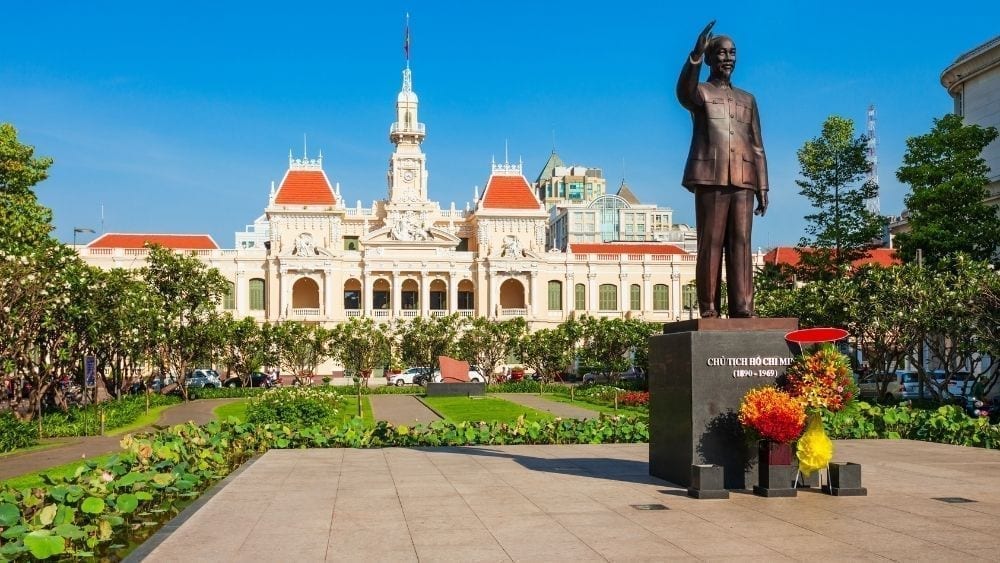
Ho Chi Minh City is the financial capital of Vietnam. A vibrant city which offers so much for the traveller. We spent two weeks enjoying all that HCMC or Saigon as it is still known has to offer.
Whether you have 3 days , 5 days or more you will love Ho Chi Minh City .
Book your airport transfer here
- What to do in Ho Chi Minh City
One of our favourite tours was a visit to the Cu Chi Tunnels just outside Ho Chi Minh City.
There are many options to visit the Cu Chi Tunnels:
Popular Food Tours of Ho Chi Minh City
Where to stay in Ho Chi Minh City
For the location, you cannot beat staying in District One in Ho Chi Minh City. Most of the top attractions in Hanoi are in walking distance of District One.
We have put together an article on where to stay in Ho Chi Minh City .

For 5-star luxury accommodation, we stayed at the Pullman Saigon Centre Hotel . You can read our review below:
The Pullman Saigon Centre in District One
You can read other travellers’ reviews here
For 3-star accommodation in District 1 we can recommend the A25 Hotel (originally Lotus Boutique Hotel) at 55/29-31-33 Le Thi Hong Gam Street with its rooftop pool, free breakfast and fast free WiFi. It is a popular hotel so we recommend that you book in advance.
You can read other travellers’ reviews here.
What To Do and Where To Stay in the Mekong Delta
Can tho in the mekong delta.
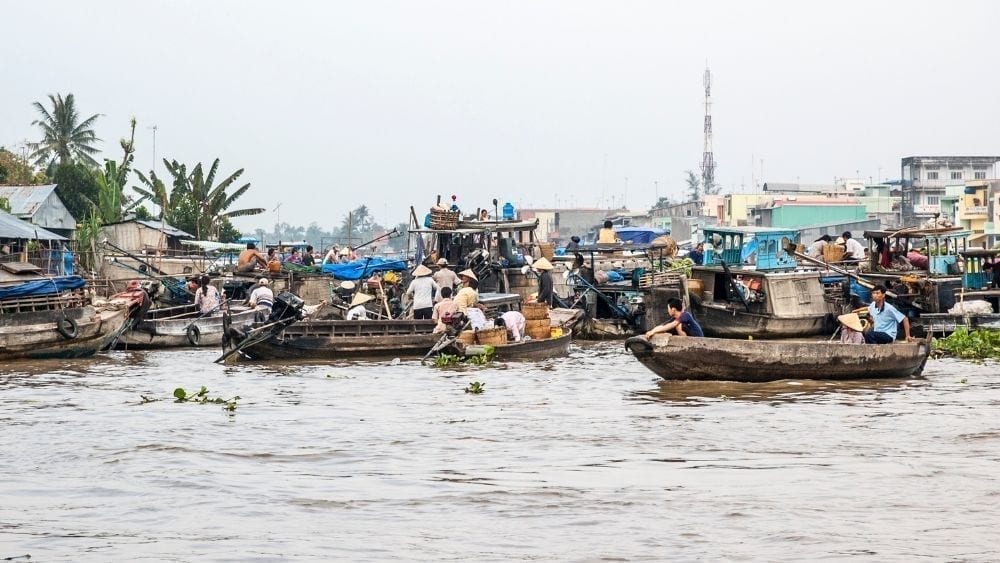
Can Tho is the largest city in the Mekong Delta and the 4th largest in Vietnam. Can Tho is located on the banks of the Hau River. You can cruise the canals, visit floating markets and local rice paper makers, fruit growers and more. We can recommend heading into Can Tho and visit the local market in the evening.
We spent 4 days visiting the Mekong Delta with Victoria Voyages staying in Can Tho and Chau Doc. Our time was spent cruising the canals of the Mekong Delta, visiting floating markets and local producers, day trips to Nui Sam and more.
Popular Mekong Delta and Ho Chi Minh City Tours
Where to stay in the mekong delta.
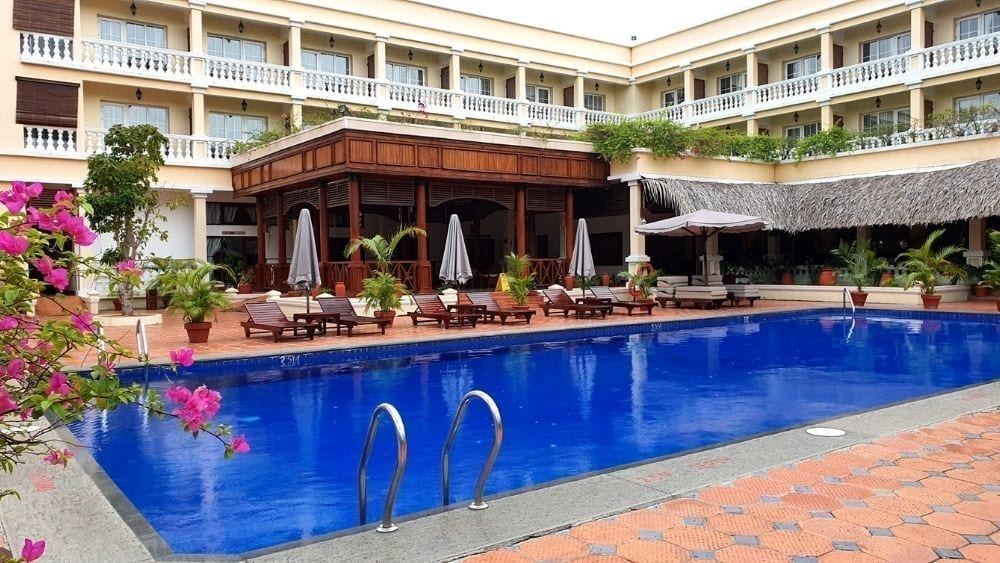
For luxury accommodation when staying in Can Tho we suggest the Victoria Can Tho Resort .
Travel Tip:
Take the hotel shuttle boat to the centre of Can Tho and visit the evening local market.
You can read our review below:
Victoria Can Tho Resor t
Check availability on Booking.com
More hotel options for Can Tho
Compare prices on hotels in Can Tho here
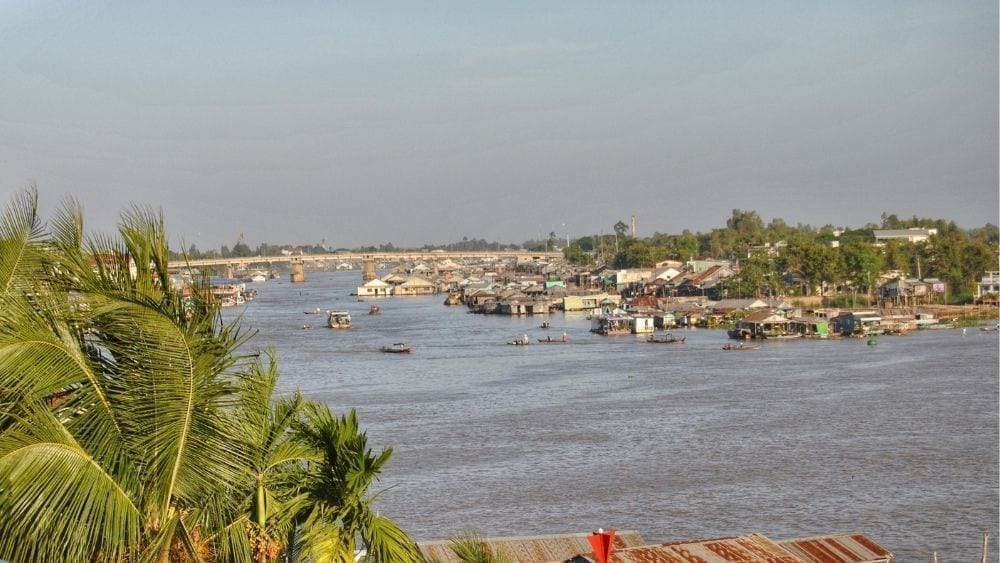
Chau Doc is the gateway to Cambodia and is located on the Hau River a tributary of the Mekong Delta. If you are considering travelling onto Cambodia to visit Phnom Penh or Angkor Wat the river border crossing is one of the easiest crossings we have done in Asia.
Chau Doc in the Mekong Delta
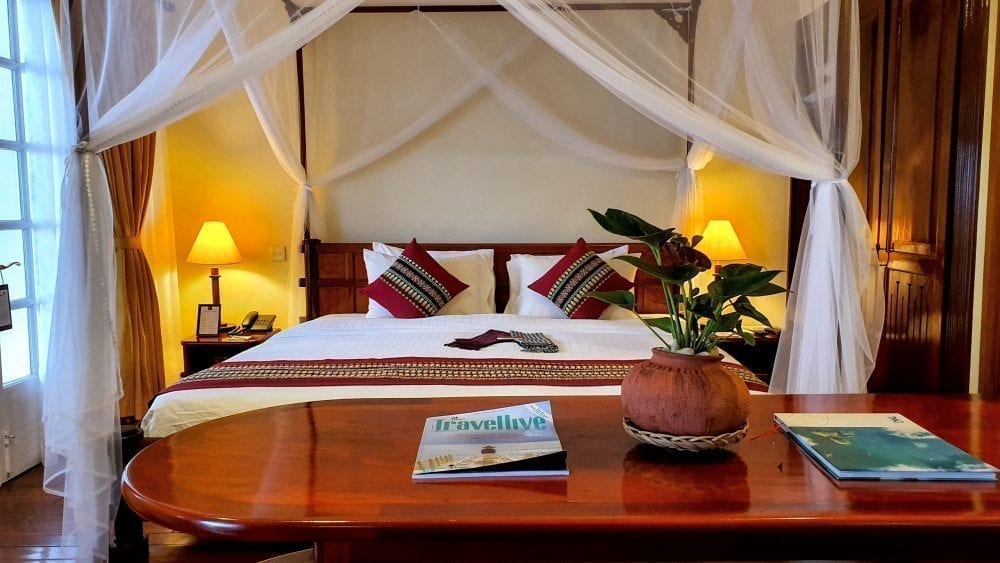
For luxury accommodation in Chau Doc in the Mekong Delta we recommend the Victoria Chau Doc Resort . You can read our review below.
Victoria Chau Doc Resort .
Check availability here for Booking.com
Compare prices with Agoda
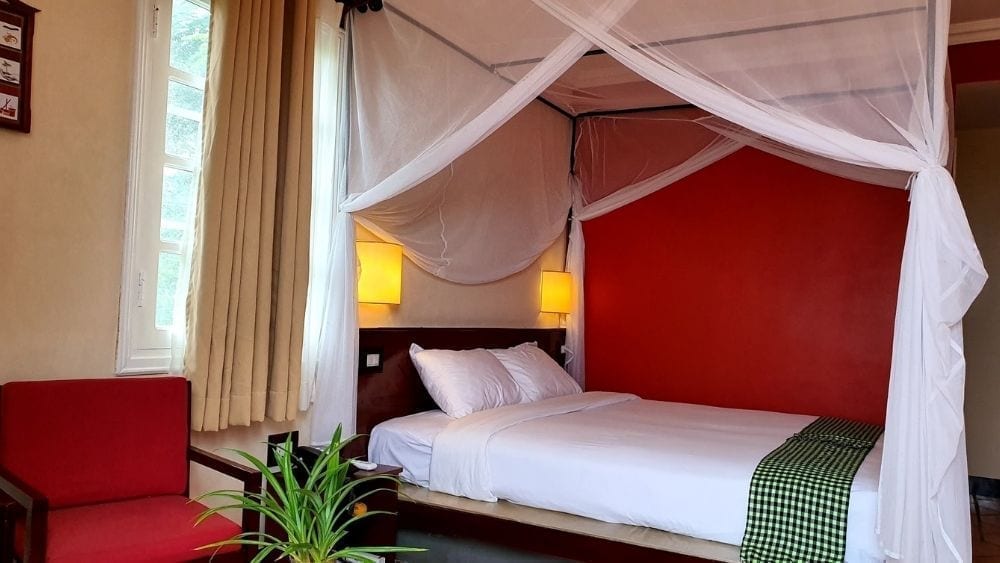
The sister hotel to the Victoria Chau Doc resort is the Victoria Nui Sam Lodg e perched high on the mountains outside Chau Doc with magnificent views over the delta and terraced rice fields. You can organise to visit the Victoria Nui Sam Lodge from the Victoria Chau Doc hotel.
Compare prices with Agoda here
More accommodation options in Chau Doc

Visit the Island of Phu Quoc
Phu Quoc, the largest island in Vietnam, is a tropical paradise that has been attracting more and more visitors every year. Located in the Gulf of Thailand, this island boasts stunning beaches with crystal-clear waters that are ideal for swimming and snorkelling.
However, Phu Quoc offers much more than just its beaches; it is also home to dense forests, pepper plantations, traditional fishing villages and some of the best seafood in Southeast Asia.
More options on what to do in Vietnam – our latest travel articles:
- Best Vietnam Islands To Visit
- Sidecar touring from Hoi An to Monkey Mountain
- Weekend Itinerary in Hanoi
- 5 days in Saigon
- Visiting My Son – Vietnam’s answer to Cambodia’s Angkor Wat
- How to get to the Cu Chi Tunnels outside Ho Chi Minh City
- What to do in Mai Chau
- Walking Tour of Hoi An Ancient Town and boat ride
- Things to do in Sapa
- 4 days/3 nights on the Mekong Delta
- A walking tour of the Imperial City in Hue
- How to get from Hue to Hoi An with a sightseeing tour along the way
- 2-night cruise on Halong Bay
- Top things to do in Nha Trang
- How to travel from Hanoi to Ninh Binh
- Top things to do in Phu Quoc
Top Vietnamese Restaurant Guide
Our top Vietnamese Restaurant Guide covering restaurants located in:
Our favourite restaurants in Vietnam
Banh Mi 25, 25 Hang Ca Street, Old Quarter Hanoi

For the best Vietnamese Banh Mi in the Hanoi Old Quarter head to Manh Mi 25. There are also vegetarian options of the sandwich available on the menu. Be prepared to queue for take away as well as being seated, it is very popular.
Beer Street , Ta Hien Street, Hanoi Old Quarter, Hanoi

Busy Beer Street comes alive in the evening where you sit and drink on plastic stools outside in the street.
Au O Vietnam Kitchen , 13a Lý Thường Kiệt, Phan Chu Trinh, Hoàn Kiếm, Hà Nội,

For trendy upmarket dining in the French Quarter of Hanoi you cannot go past Au O Vietnam Kitchen. We loved the excellent local cuisine and decor. Vegetarian options are available.
Lighthouse Sky Bar , 27 Hàng Bè, Old Quarter, Hoàn Kiếm, Hà Nội 100000

Hanoi has some great Sky Bars which are perfect for sunset drinks with stunning views over the Old Quarter of Hanoi. Our favourite is the Lighthouse Sky Bar above the La Siesta Premium Hotel at St, Old Quarter, No 27 Hàng Bè, Hàng Bạc, Hoàn Kiếm, Hà Nội.

For casual dining in Sapa our favourite restaurant was Le Gecko at Sapa Town, 033 Xuân Viên, TT. Sa Pa, Sa Pa, Lào Cai 330000. Centrally located Le Gecko offers French, European and Asian cuisine.
Whilst visiting Hue we enjoyed eating out at 2 restaurants.
Spice Viet at 15 Lý Thường Kiệt, Phú Nhuận, Thành phố Huế, Thừa Thiên Huế,

We love the decor of the Spice Viet restaurant chain. The menu is excellent serving local cuisine, ask what the local speciality is when you order. There is a good range of vegetarian dishes available and the service is excellent.
San May Vegetarian Restauran t at 8 Thanh Tịnh, Vỹ Dạ, Thành phố Huế, Thừa Thiên Huế, Vietnam

Spice Viet at 187 Lý Thường Kiệt, Street, Hội An, Quảng Nam 560000

Located in the grounds of the EMM Hotel Spice Viet is a firm favourite of ours. Excellent local cuisine and service won us over every time we visited. Ask for the local Hoi An speciality dish when you visit.
For the best coconut coffee in Hoi An head to Phin Coffee at 132/7 Trần Phú, Cẩm Châu, Hội An, Quảng Nam. Phin Coffee is only a 3-minute walk from the Japanese Covered Bridge. You can enjoy the best coconut coffee and cafe-style meals in a tranquil garden setting.
Minh Hein Vegetarian Restaurant is located at 50 Tran Cao Van, Phường Minh An, Hội An, Phường Minh An Hội An Quảng Nam.

A busy vegetarian restaurant in Hoi An, you will need to make a booking when you visit. The extensive vegetarian menu will have you returning night after night.
Secret House Restaurant

The Secret House Restaurant is located at 1 Lê Thị Hồng Gấm, Phường Nguyễn Thái Bình, Quận 1, Thành phố Hồ Chí Minh 700000, Vietnam just a few doors down from the Lotus Boutique Hotel. The decor is stunning and the local Vietnamese food is excellent. There is an interior courtyard for diners, we recommend that you choose a table in this area for its ambience.
You can read diners reviews here
Sen (Our favourite Vegetarian Restaurant in Ho Chi Minh City)

We ate at Sen most nights during our stay in Ho Chi Minh City. Sen Restaurant is located at 171 Nguyen Thai Hoc Pham Ngu Lao Ward, District 1, Ho Chi Minh City 700000 Vietnam. It is a Vegetarian’s delight with an extensive menu that would take you weeks to work your way through it.

Pho Cong is a popular local Vietnamese restaurant with locals and visitors located at 142 Le Thi Hong Gam Nguyen Thai Binh, Dist.1, Ho Chi Minh City Vietnam. Pho Cong’s famous Pho dish comes with large side dishes of chilli, lettuce, bean sprouts and herbs. There are 4 different beef Pho dishes and the vegetarian springs rolls are tasty and crisp.
Le Longanier

Le Longanier is located at 49 Hamlet 5 Phu An Village, Cai Be Vietnam. You can dine in luxury in a traditional Vietnamese Villa in a lush tropical garden setting. Le Longanier is part of the Victoria Hotel and Resort chain of TMG and you can enjoy lunch there on a Mekong Delta tour operated by Victoria Hotels. The set lunchtime menu is excellent serving local Vietnamese cuisine with vegetarian options. The elephant ear fish spring rolls was a definite favourite of ours. The Villa reminds you of the French colonial past with its luxurious decor. We were greeted at the gate by one of the staff members dressed in traditional Vietnamese dress the Ao Dai which added to the atmosphere and setting of this outstanding restaurant.
Vietnam Travel Tips
Tip #1 – Traversing Vietnam Roads
To cross the busy roads in Vietnam, you step out confidently and just cross, motorbikes will pass by either side of you. In Danang, in particular, be careful as motorbikes can be joining you on the footpath as you walk along.
Tip #2 – Where to eat cheaply in Vietnam
Head to the local markets for cheap tasty local cuisine, it is where the locals eat.
Tip #3 – Grab Cars in Vietnam
Use Grab taxis in major cities, they are cheaper than taxis. You can download the Grab taxi app before you arrive in Vietnam.
Visa Travel Guide – Vietnam Visa on Arrival
Most travellers visiting Vietnam will need to apply for an e-visa online before arriva l. Some countries are exempt and there are plans to increase the number of visa-free countries to boost the country’s economy. Tourism is very important to the growth of Vietnam.
Our affiliate partner for visas is iVisa. Check below for details and costs for obtaining visas online through iVisa.
Which Airport In Vietnam Do You Fly Into
One of the most frequently asked questions that we receive. Our Vietnam Airports Travel Guide can be read here and it will be regularly updated.
Flights Into Vietnam
Vietnam Airlines is the country’s major airline.
Vietnam Flight Deals
Find the cheapest flights with Skyscanner our ‘go-to’ when we are researching and booking flights around Vietnam.
Transport Around Vietnam
For bus, rail and ferry tickets around Vietnam, we use 12goAsia.
Have you taken out travel insurance?
To Travel Too Travel Shop
We have a range of travel guide books, travel clothes, travel luggage and more in our To Travel Too Travel Shop. Click the logo below.

Did you enjoy our Vietnam Travel Guide?
If you enjoyed our guide why not share it with your family and friends.
We have created a Vietnam Travel Planning Private Facebook Group – you can join here.
Are you on Pinterest? We are at To Travel Too and we have many travel-related boards check us out at Pinterest . If you enjoyed our article why not pin it to your board.
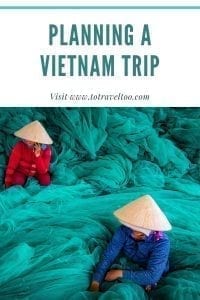
Conclusion :
In conclusion, planning a Vietnam trip from North to South can be an unforgettable experience for any traveller. The country offers diverse landscapes, rich culture, and delicious food that will leave you craving more. By following the tips outlined in this article, you can create a personalized itinerary that suits your interests and preferences while ensuring a smooth journey from start to finish.
Whether you’re exploring Hanoi’s ancient temples or cruising along Halong Bay’s emerald waters, travelling through the central highlands or soaking up the sun on Phu Quoc Island, Vietnam has something for everyone. So pack your bags and get ready for an adventure of a lifetime!
totraveltoo
Thanks for stopping by and welcome to To Travel Too – Australia’s top Baby Boomer lifestyle and travel blog, with an international worldwide audience in mind, run by the married couple, freelance writers and full-time travellers Jane and Duncan Dempster-Smith. Come with us as we explore the world. Our two mantras that we live by are 'chase time not money' and 'age is no barrier when it comes to travel'.
Related posts

The Best Egypt Itinerary for First Timers – 8, 15 and 21 days

Nile Dahabiya Cruise – Nour El Nil Review – Malouka Traditional Boat

Hotel Review Seti Abu Simbel Lake Resort Abu Simbel Egypt
Leave a reply cancel reply.
Your email address will not be published. Required fields are marked *
This site uses Akismet to reduce spam. Learn how your comment data is processed .
- Press & Media
- Partner With Us
- Disclosure/Privacy
Privacy Overview
Maika Tours uses cookies to give you the best possible service. If you continue browsing, you agree to our use of cookies. More details can be found in our terms and conditions .
- +84 909 343 760
- Open Facebook account in a new tab.
- Open Instagram account in a new tab.
- Open Youtube account in a new tab.
- Open Tripadvisor account in a new tab.
Vietnam in 14 Days: Traveling from South to North Vietnam
Are you into Vietnam’s heavenly scenery with iconic rice fields in the North and expansive rivers in the South? Even if you only have a limited time for traveling, Vietnam can be explored from South to North in two weeks or less.
Each region has its typical climate and landscapes that will vary your experiences from the first day you visit the country to the last day of your trip. Make sure to plan a sound itinerary to diversify your experiences, savor tempting dishes and get to know interesting customs from South to North Vietnam.
Best time to travel
One of the most common concerns for travelers is the best time to travel to Vietnam. It makes sense to worry that your trip may turn to a nightmare if it is in the rainy season or sudden storms hit your trip. Generally speaking, Vietnam rainy season varies in Northern, Central and Southern Vietnam. Worry not, traveling to Vietnam during the rainy season may sound good to a certain extent.
You won’t have wrong time to visit Vietnam as this is a year-round destination. But if you really want to choose the best of the best and you have flexible time at hand, make it between September and December or March and May.
For more tips on the best time to visit from South to North Vietnam, read Vietnam Travel Tips .
Suggested itinerary from South to North Vietnam
It’s best to start off from the north and then go through the center to the south. But if you do not depart from Hanoi but Ho Chi Minh City, it’s totally fine to make a trip from South to North Vietnam with just the same level of fascination. Here are some suggestions.
Day 1: Ho Chi Minh City
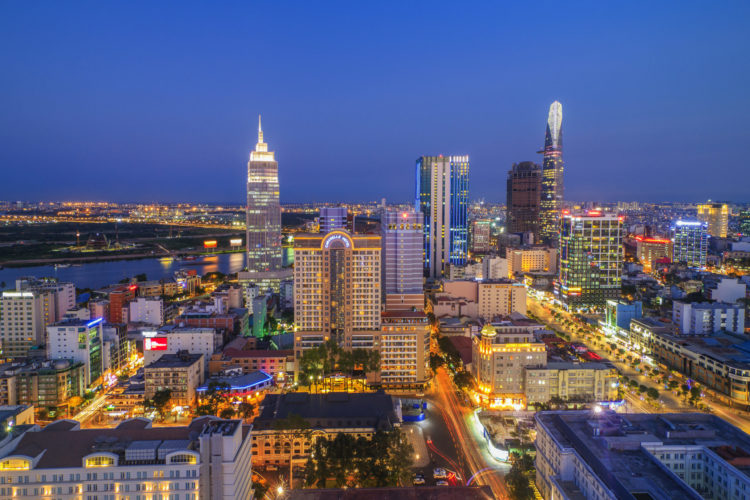
Your adventure begins in Ho Chi Minh City, one of the most lively cities in South East Asia. The city is praised for the blend of vintage French colonial buildings and polished skyscrapers highlighting the city’s skyline. That is to say, you can explore the ancient atmosphere in museums , churches or find amazing vibes in bars and malls.
Best places to visit: Saigon Notre Dame Cathedral, Independence Palace, Ben Thanh Market , Bui Vien Street , Chinatown
Best restaurants in Ho Chi Minh: Banh mi Nhu Lan with Banh mi and Vietnamese specialties, Pho Le with beef noodles, Xoi Che Bui Thi Xuan with sweet soup desserts, Bui Bistro, Cuc Gach Quan, Secret Garden
Find out more In search of the List of Michelin Star Restaurants in Vietnam
Day 2: Cu Chi Tunnels
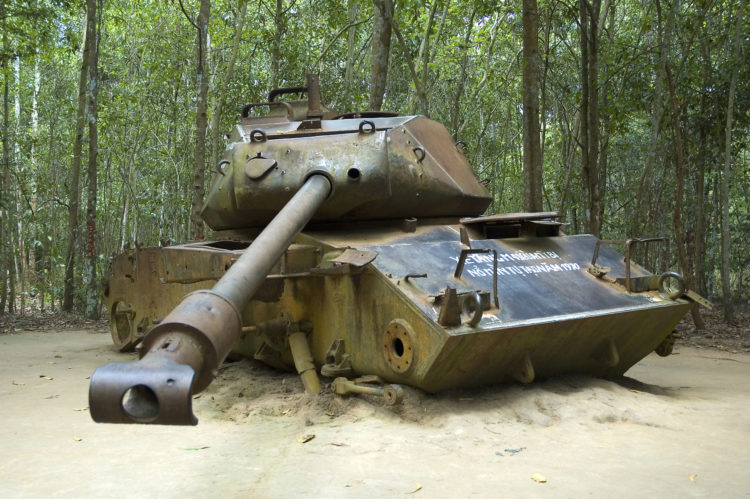
After a city tour, it is time to leave the concrete jungle behind and dive into the former battlefield in Cu Chi, the outskirts of Ho Chi Minh. Just 70km away from the city, you can take a bus there and explore the intricate underground tunnels stretching up to 250km.
History buff loves this place for its relation to the Vietnam War while the others may be drawn to walk through the whole tunnels or try the shooting experience. This must be included in your travel plan from South to North Vietnam.
Best places to visit: Cu Chi Liberated Area, Ben Duoc Temple, Ben Dinh Tunnel, Trung An Garden
Best restaurants in Cu Chi: Bo to Xuan Dao with boiled heifer meat, stalls with sugarcane juice (with durian flavor)
Day 3: Tien Giang
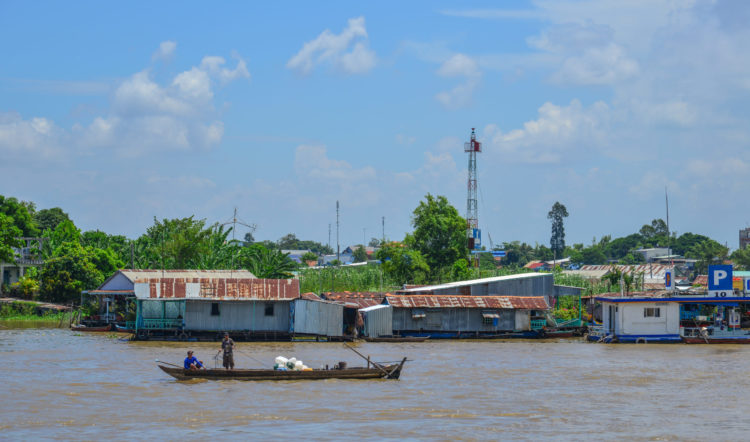
The next stop will be the Mekong Delta which is dubbed the rice bowl of Vietnam. This is a great chance for you to sit peacefully on a sampan and cruise along the gigantic Mekong River.
The best part is, obviously, the floating market that offers almost everything you can imagine. They even sell lottery tickets on boats. When you have enough ‘floating experiences’, head to Tan Phong island for some activities such as cooking or biking. The simple life of locals living in the countryside will purify your soul.
Day 4: Can Tho

Your trip from South to North Vietnam would not be complete without Can Tho. A market worth your visit is Cai Rang in Can Tho. It is not just a floating market like any others, it is the staple of the Mekong Delta. The unfussy life here begins at dawn when you can order a morning coffee on a boat and enjoy the early sunlight.
After a lively scene from the Mekong River, continue to travel 12km to Binh Thuy Ancient House and you can round off your experience in the Mekong Delta. Get ready to get lost in a polished mansion dated more than a hundred years ago. Crystal chandeliers and many valuable antiques reflect the golden age of one of the most celebrated families in the 19th century.
Find your way back to Ho Chi Minh before heading to Central Vietnam.
Day 5, 6: Danang
Even when you don’t have enough time to travel to Vietnam from South to North or this is your first trip to Vietnam , Danang is always the top choice. Scenic white sandy beaches will pamper your toes and the magnificent sunrise and sunset is just as in your dream. My Khe Beach is where to connect to your inner self! Alternatively, you can get plenty of vitamin D at scenic beaches in Nha Trang .
Take a break before you visit Ba Na Hills the next day. Children love it, lovers love it, Instagrammers love it – This is the place for having fun! Don’t forget to visit the giant Golden Bridge overlooking the mountains and take tons of pictures there.
Best places to visit: Ba Na Hills, Fantasy Park, French Village, Linh Ung Pagoda, My Khe Beach, Marble Mountains
Best restaurants in Danang: Pho Bac Hai with beef noodles, Banh Xeo Ba Duong with savory Vietnamese Crepes, Com Ga A Hai with chicken rice, Bep Hen Restaurant
Find out more Beach Destinations in Vietnam the Whole Family Will Love
Day 6, 7: Hoi An
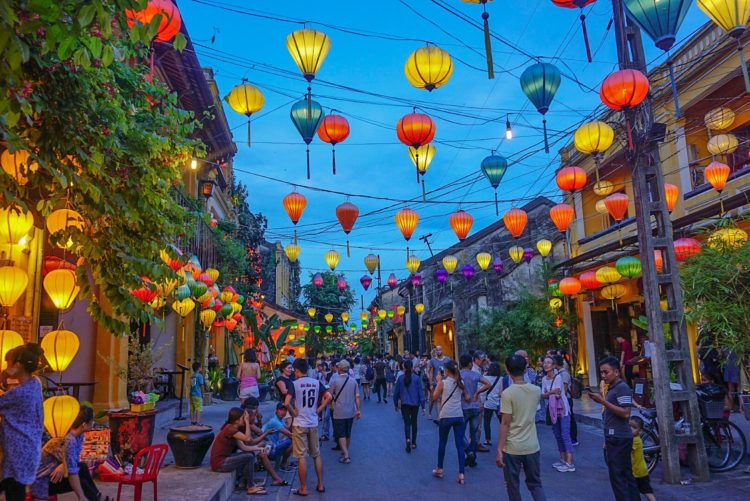
From Danang, it takes only 45 minutes to get to Hoi An by car. The taxi will cost you around $20. Hoi An is a favor for vintage souls thanks to its yellow tone covering the background of the city, one of the reasons that make everyone loves Hoi An .
Stores with handicrafts and tailoring services offer some great souvenirs to bring back home. Wait until night when lanterns brighten the city and you can release paper lanterns into the river. It’s time for beautiful wishes in your Vietnam 14 days journey!
Best places to visit: Phung Hung House, Fukian Assembly Hall, Hoi An Museum, Tra Que Village, Japanese Covered Bridge, Quan Cong Temple
Best restaurants in Hoi An: Com Long Ga with chicken rice, Miss Ly Café, E-Village, Madam Khanh with Banh mi , Good Morning Vietnam
Find out more UNESCO World Heritage Sites in Vietnam
Day 8, 9: Hue Citadel
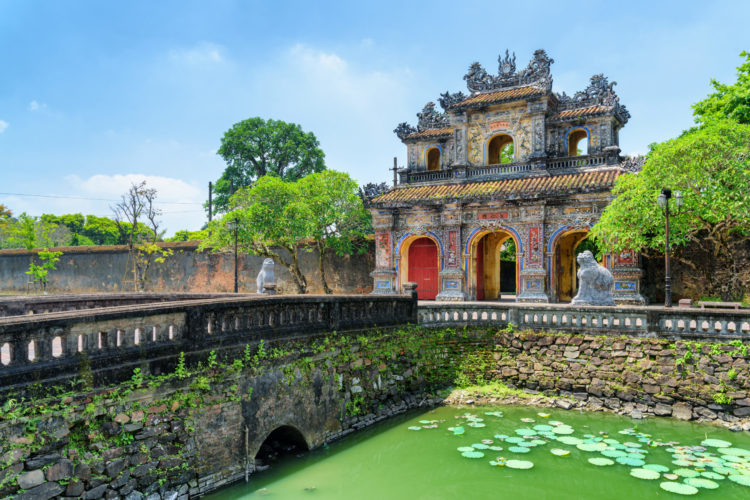
Hue, the former capital city of Vietnam is a perfect connection to the laid-back vibes of the Central in your journey from South to North Vietnam. Hue is the land of imperial stories and poetic scenery where every breath is full of serenity. Things go slowly and the locals seem to enjoy every moment of life to its fullest.
Hue is somehow like a lofi song that evokes emotions you are looking for. Cruising along the Perfume River, you can truly feel the emerald water blending with green forests and the clear blue sky. That’s a gem that Mother Nature granted Hue, making it ‘the land of poetry’.
Places to visit: Complex of Hue Monuments, Royal tombs, Thien Mu Pagoda, Perfume River, Thuan An Beach, Truong Tien Bridge
Best restaurants in Hue: Ba Do with tapioca savory dumplings, Thuy Bun Bo Hue with spicy vermicelli noodles, Di Cuc with baby basket clams rice, Hanh Restaurant, Nook Cafe & Bar
Day 10, 11: Hanoi City Tour

Where to devor the best of local dishes and explore a thousand years of history in a blink of an eye? Hanoi knows how to indulge travelers. For the first day, you can start strolling through the Old Quarter and continue with a cyclo tour around Hoan Kiem Lake. End your day at Thang Long theatre to enjoy traditional water puppet shows.
For the second day in Hanoi out of 14 days in Vietnam, recover your full energy to visit a plethora of historic destinations including Ho Chi Minh Mausoleum, Ba Dinh Square, Hoa Lo Prison and Temple of Literature. Save enthusiasm for a night party at Ta Hien, a backpacker’s nightlife hub and explore Vietnamese drinking culture in your trip from South to North Vietnam.
Best places to visit: Old Quarter, Hoan Kiem Lake, Temple of Literature, Ba Dinh Square, Hoa Lo Prison, Long Bien Bridge
Best restaurants in Hanoi: Au O Vietnam Kitchen with Vietnamese cuisine, Cafe Giang with egg coffee, Bun Cha Huong Lien with grilled pork served with noodles, Banh Cuon Thanh Tri with steamed spring rolls
Find out more Best Things to Do in Hanoi, Vietnam
Day 12: Ninh Binh
Ninh Binh is still a hidden gem that not many travelers have ever heard of when it comes to traveling to Vietnam. It offers breathtaking views that are not less charming than any other touristy destination. Climb up to Mua Cave to sit calmly and admire the scenery dubbed ‘a mini Great Wall of China’ or take a boat tour along Ngo Dong River and smell the yellow rice paddy fields.
Best places to visit: Tam Coc, Trang An Grottoes, Bai Dinh Pagoda, Mua Cave, Hoa Lu, Bich Dong Pagoda.
Best restaurants in Ninh Binh: Quan Ngon Ba Mai with bun noodles and salad, Chookie’s , Viet Bamboo Restaurant, Bamboo Bar and Restaurant
Find out more Getting around Vietnam: Easy Ways to Travel in this S-shaped Country
Day 13, 14: Phong Nha Ke Bang National Park
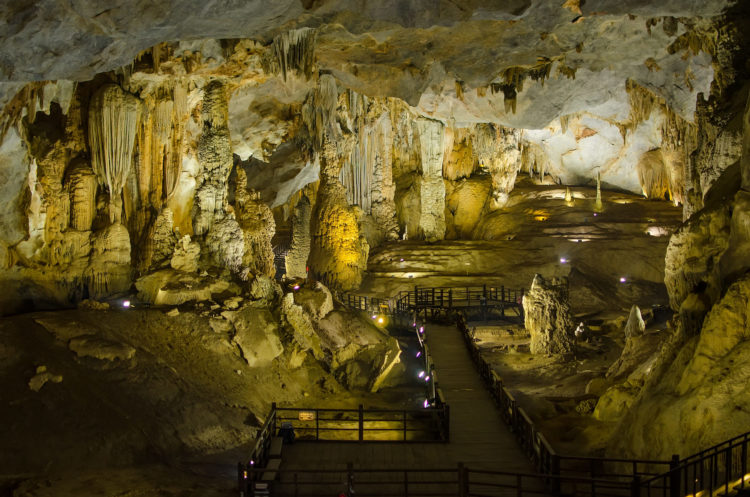
Phong Nha Ke Bang National Park has everything to capture your heart and soul. From Ninh Binh, you can take bus or train to Phong Nha. Overnight train travel is a good option so that you won’t miss out on another day.
A trip to this natural wonder is highlighted by a day trip to Phong Nha Cave and Paradise Cave. The system of stalactites will be an eye-opener adding a final touch to your journey from South to North Vietnam. Wanna something unique? What about taking an overnight adventure in En Cave?
Best places to visit: Phong Nha Cave, Paradise Cave, Son Doong Cave
Best restaurants in Phong Nha: Wild Boar Eco Farm, Mountain Goat Restaurant, Bamboo Cafe, Vung Hue
Find out more Travel around Vietnam – Travel around the World and Trending Places to Visit in Vietnam
If you want to get closer to the local life, ride a bike or a scooter through the town to the local market or farm and enjoy fantastic treats. When you have enough of everything, travel back to Hanoi and go home with wonderful memories.
Vietnam is not giant in its size but there are plentiful places to explore and amazing things to do. With Vietnam in 14 days and you will have a journey to remember for the rest of your life. Keep an open mind and have a good trip from South to North Vietnam! Are looking for 11-Day Tour Best of South, North and Central Vietnam , 15-Day Tour Highlights of Vietnam or 20-Day Tour Best of Vietnam ? Consult with our travel experts about Vietnam visa requirements so that we can plan your trip perfectly.
© Maika Tours
Written by Trinh Tran
As Saigon fell 49 years ago, my father flew us onto the USS Midway in a fraught escape
My family was among more than 3,000 desperate refugees evacuated on the us aircraft carrier. it's only recently that my war pilot dad can talk about what happened..
April 30 marks 49 years since the fall of Saigon in 1975 , the death of South Vietnam and the beginning of the exodus of a million Vietnamese over the next two decades .
This is the story of how a Vietnamese air force officer flew his family and two dozen other evacuees in a helicopter onto the USS Midway for their escape as they lost their country to communist North Vietnam. Nguyen Van Dong, now 81, lives in Texas. This account was written by his daughter Ngan Nguyen, who lives with her husband and children in New York City.
Can Tho province, South Vietnam, on April 28, 1975
A heavy fist banged on our front door. My family lived near Can Tho air base in South Vietnam, which was used by the U.S. Air Force and the Republic of Vietnam Air Force during the war.
My father, Nguyen Van Dong, was an air force major. At 3 years old, I hid behind his legs as he opened the door. An officer said the North Vietnamese army was encroaching. He ordered us to evacuate immediately to Con Son Island, along with 40 other families on the base, admonishing female evacuees to dress plainly so as not to attract attention. All able-bodied men, including my father, were instructed to stay behind to fight.
My mother, Nguyen Thi Nghiem, packed frantically for what she thought would be a few days, taking only what she could carry on her shoulders. She would have my little brother strapped to her back, and my sister and me each clutching one of her hands.
Despite the fact that the United States had already withdrawn its combat forces two years earlier, no one wanted to believe that South Vietnam faced an imminent demise, but no one could ignore the reality of the constant sirens and bombs.
Reunited on Con Son Island
Mom, my siblings and I arrived at Con Son in the middle of the night on a Chinook helicopter. During the evacuation, Mom had been too distracted to notice the lump growing on the edge of my face. But now I was feverish with mumps and a throat infection.
Fortunately, a friend knew a doctor stationed at Con Son prison. He managed to pick us up and transport us to his home, where he fed us, gave me medicine and urged us to sleep.
Back at the Can Tho air base, Gen. Nguyen Huy Anh ordered all pilots to meet on Con Son. That included my father, whose mission was to transport the women and children on Con Son to somewhere safe. Dad's friends, who were on base duty, had to stay behind. Dad promised to take care of their families until they could reunite with them.
Dad landed his Huey on Con Son Island about 20 hours after we had arrived and leaped with joy when he saw us heading toward him. I can still remember the scent of him as he covered me in kisses. Together we hurried to the beach, where women and children were waiting and whispering about the impending collapse of Saigon, our nation's capital.
Washington had withdrawn its diplomats – the death knell of South Vietnam. Dad knew that he and his cohorts could not defend a country with a trickle of bullets when the enemy had continued support from China and the Soviet Union.
'The Sympathizer' relives Vietnam War: From 'homeless among the clouds' to working with Robert Downey Jr., Kieu Chinh keeps going
Evacuation onto the USS Midway
Con Son became the central meeting point for evacuation of both military officials and civilians. At 7 a.m., Dad and his deputy pilot, Cao Minh Hoang, squeezed 31 passengers into a helicopter normally reserved for a dozen. Bags had to be left behind. In the controlled chaos, I saw something sparkly on the beach and snatched it. It was a pack of my favorite instant noodles.
The Huey was overstuffed with people whose lives were now completely in Dad’s hands. Everyone kept still, even the babies, fearing that one small movement could cause a crash. The 40-minute escape was fraught with despair. The wives now realized the dire fate that awaited their husbands. Mom was the only woman who wasn’t wailing.
Dad spotted the USS Midway and flew closer to the massive gray carrier, majestic against the vast blue ocean. The crewmen below navigated Dad’s craft by waving sticks, and he safely landed on a piece of U.S. territory.
Crewmen rushed to the Huey as the blades stopped swirling. They counted the number of people disembarking in disbelief and praised Dad’s aviation skills. Whatever sense of relief or accomplishment my dad had was short-lived. He asked whether he could refuel and head back to Con Son but was told there was no going back.
As Dad watched the Americans push Hueys overboard to make room for other landing helicopters, his chest clenched as he thought of loved ones left behind. We were now officially refugees at the full mercy of our U.S. allies. Our luggage was searched for weapons and contraband. The fear was that Viet Cong would hide among the horde of evacuees.
We joined several thousand other evacuees in the dining area below deck and devoured the undeniably all-American ham sandwiches. Not knowing if soy sauce was available in America, one of our friends shoved several packets into her pockets.
From USS Midway to a merchant ship
After a few hours on the Midway, officers instructed our helicopter group to board a nearby ship. We had to mount makeshift ropes to board the merchant ship.
Dad strapped my baby brother onto his back. He helped get every member of his party ready to climb a fraying rope to the ship. Mom safely reached the other side with my sister and me. She turned around and saw Dad’s rope break. Miraculously, he was able to pull himself up while holding on to my brother, avoiding the 7-meter plunge into the netting below.
The merchant ship was crowded with approximately 10,000 evacuees. We docked for about a week, waiting for more to board. Other ships rescued as many refugees as they could, but they were simply overwhelmed with more people than they could handle. Dad worried about what nation would accept thousands of refugees from an unpopular war.
War still haunts Vietnamese Americans: Five decades of Henry Kissinger's human 'legacy of war' – a trauma passed among generations
Food stocks ran low. Each person was rationed a bowl of rice with canned tuna.
Our group huddled in one area of the ship. Next to us was a family in distress. The mother was alone with five young children. Mom befriended them and offered two bags of instant noodles in her bag. She didn’t know the woman was Capt. Kiem Do’s wife. She had been separated from her husband, a navy officer who famously organized the successful evacuation of more than 30,000 refugees aboard more than 30 ships . The two women became lifelong friends.
I was still weak with the mumps. Mom had a limited supply of medicine and ground the pills using an American quarter. A gaunt woman wailed in agony through the night. Just when we thought we could sleep again, she would wail more and louder. One day, after waking from a nap, I saw two sailors throw her lifeless body overboard.
Years later, in the comfort and safety of America, I asked my parents if this really happened. They said there were many who were seriously ill on the ship, suffering from diarrhea, dehydration and even dysentery. Those who died were thrown overboard.
I shuddered thinking how it could’ve been me. But Mom always pointed out how generous people were when they saw me suffering. Many strangers around us gave me half their rice portions. The extra rice and penicillin saved my life. My parents vowed to each other that once our family settled somewhere, they would do all they could to support their community.
On that ship, news of Saigon’s collapse on April 30 trickled in. Whispers spread from group to group. We learned about the suicides of some generals of the Army of the Republic of Vietnam, one of whom was Dad’s mentor. As their fates were shared, the women in our party started weeping again.
Dad left us to take a walk. His tears could flow more freely among strangers.
Refugee camps at Subic Bay, Philippines, and the US territory of Guam
Many days later, as we faced dwindling food rations and starvation, our boat landed by the U.S. Navy base at Subic Bay, Philippines. The Philippine government was initially hesitant to shelter South Vietnamese refugees but ultimately agreed to provide a haven on Grande Island , in the mouth of Subic Bay, on the condition that the transits were brief. We refugees were contained in one area.
Upon arrival, all nine children in our group were famished and dehydrated. Mom opened my pack of favorite instant noodles that I had found on the beach, crushed the contents in a bowl with cold water and gave each of us a sip.
Around us, vendors wandered, trying to take advantage of our desperate plight. Dad’s only valuable possession was a watch given to him by President Nguyen Van Thieu of the now defunct Republic of Vietnam. He traded it for scraps of food and two cans of Coke. Later, he said the Coke brought color back to my face and, for the first time since our dramatic evacuation, he knew I'd survive my illness. That, to him, was priceless.
Decades after fall of Saigon, Vietnamese voices crucial to understanding Vietnam War's impact
We stayed at the Subic Bay camp for two days, huddled together in makeshift lodgings to keep warm during the cold night. Food eventually arrived, and the men of our group routinely waited in line for handouts, sometimes as long as six hours.
After Subic Bay, we were flown to Guam, a U.S. territory. In Guam, we were processed as political refugees. It was there that Mom felt more sane and settled. But anxiety still plagued her. In moments when she thought about the fate awaiting her endangered family left behind, she'd take out her small bottle of Chanel No. 5. This was the first gift that Dad had brought back for her from his pilot training in the United States. For her, it represented hope that one day, we could return to a normal life and she may go to social gatherings wearing Chanel.
A new home in New Orleans
In the autumn of 1975, after residing at Eglin Air Force Base in Florida for a few months, we settled in a neighborhood of New Orleans called Woodlawn that primarily housed Vietnamese refugees.
Not long after we resettled there, Jim and Betty Adams became our sponsors. Perhaps they chose my parents because they had shared professions as pilot and teacher, respectively. My siblings and I were proud to have two American brothers, Jim Jr. and Dave. Betty spent hours each week teaching my mom English.
Years later, Mom became one of the first Vietnamese American teachers in Louisiana. The Carters, who owned a horse ranch, also “adopted” us. Their son had served in Vietnam.
When we first arrived, Dad had offers to fly for oil companies, given the boom in the Gulf of Mexico and the need for helicopter pilots to fly between rigs. Mom didn’t want to take any more risks and insisted that he find a terrestrial job.
He started as a hospital translator and then became an Exxon mechanic. Mom was the “produce girl” at Schwegmann's and used her income to give back to the community. On Sundays, she made huge pots of pho and cha gio (fried spring rolls), and opened up our home to “uncles'' and “aunts'' whom I would eventually understand to be young refugees without families.
Mom’s spring rolls would later save us from hostile Cajun neighbors who initially found us threatening as outsiders. They eventually not only left us alone to live our American dream, but provided support when Mom was suffering from cancer.
What I learned after returning to post-war Vietnam
Mom died two weeks after I turned 18. Heartbroken, Dad found it difficult to accept her death, considering all they had overcome together. She had survived bombs and bullets only to lose her life in suburbia.
In the wake of that loss, I embarked on a journey to find my extended family. After a trip to Vietnam in 1992, where I reunited with all four of my grandparents, I resolved to find a career that would connect me to them, while honoring Mom’s legacy of giving back.
I spent years working in international development, helping Vietnam integrate into the world economy and improve the quality of life and potential of its people – before pivoting to academia to learn about the region and conflict that had long intrigued me.
On April 30, 2011, exactly 36 years since I left Vietnam, I earned my doctorate in the field of Asian politics. While researching, I found that South Vietnamese stories were underrepresented in the larger mainstream narrative of the conflict that defined a generation. Having grown up in a community of political refugees, listening to war tales in my youth and witnessing the U.S.-Vietnam reconciliation process as a development practitioner, I can appreciate multiple viewpoints.
Reconciliation between former enemies: Learning about our past in Vietnam helps new generation see beyond legacy of war
Reconciliation, however, cannot be complete without the inclusion and healing of the South Vietnamese, who felt abandoned by their U.S. allies, misunderstood, and unfairly vilified and misrepresented in pop culture and war literature.
Younger generations of Vietnamese Americans like me unknowingly experienced intergenerational trauma , carrying the scars of our shared and suppressed history. Our worldview is likely shaped by our parents’ hardships and lived experiences.
As for my father, it wasn’t until the fall of Kabul, in Afghanistan in 2021 , that he was finally ready to talk about what happened in Vietnam. The post-traumatic stress disorder that had long plagued him suddenly came to the fore, prompting him to reach out to fellow Da Lat National Military Academy peers, now octogenarians and nonagenarians.
He visits Vietnam War memorials to thank all those lives lost and hugs every veteran he sees now.
These days, Dad wants Vietnamese people everywhere to succeed and make a positive impact on society. While therapy is still not in his vocabulary, he finds healing in writing, meditating, visiting the local Cao Dai temple, drinking boba tea with his grandchildren and cheering for the NBA Dallas Mavericks.
As a former war pilot, he's also rooting for Ukrainian pilots as they now bravely defend their homeland.
Nga n Ngu yen , a social entrepreneur and political scientist, is the global strategic adviser for Asian heritage at Citi and co-founder/owner of Ai Vy Springrolls, LLC. She advises nonprofit organizations and learning institutions, and hopes to amplify Asian American and Pacific Islander voices, representation and causes through her volunteer work.

Biden travels to North Carolina with message that he has ‘delivered for the South’
P resident Biden is set to travel to North Carolina on Tuesday to argue that he has delivered for the South on issues from jobs, lowering costs, and reproductive rights.
The president’s campaign has focused on North Carolina as a battleground state former President Trump won in 2020 that the incumbent is eyeing to flip in 2024 . Biden plans to communicate how Trump failed the South during his presidency, according to a memo from campaign manager Julie Chavez Rodriguez.
“Our campaign will engage voters across these states, from urban centers to the suburbs and rural areas, where there are more Democratic voters than any other region in the country,” Chavez Rodriguez said. “President Biden and Vice President Harris have delivered for the South after four years of failure under Trump, and our campaign will continue to highlight the stark contrast between their agenda and the MAGA extremism taking hold of the GOP in these states under Trump.”
He will be in Raleigh to deliver remarks and participate in a campaign reception alongside Vice President Harris.
Chavez Rodriguez said North Carolina and Georgia are Southern battleground states critical for the pathways to 270 in November. The trip Tuesday is the last of Biden’s March visits to every battleground state following his State of the Union address; a visit to Georgia kicked off that tour.
“In 2020, Georgia was the closest state in the country won by President Biden, and North Carolina was the closest state in the country won by Donald Trump, making them both extremely competitive states where early investment makes a difference,” she said.
Trump barely beat Biden in North Carolina, taking the Tar Heel State by less than 1 point. An aggregation of polls shows that Trump has a 6.2-point lead over Biden in the state. North Carolina hasn’t gone to a Democrat since 2008.
Chavez Rodriguez, in the memo, also argued that Republicans in states such as North Carolina and Georgia are too extreme. She said “MAGA Republicans” want to limit voting rights in both North Carolina and Georgia, but that Democrats are fighting back.
The Biden campaign said it is investing in Black and Spanish-language media and working with surrogates on the ground, including North Carolina Gov. Roy Cooper (D). Meanwhile, Chavez Rodriguez noted, Trump allies on the ground include gubernatorial candidate Lt. Gov. Mark Robinson (R) in North Carolina and Rep. Marjorie Taylor Greene (R) in Georgia.
North Carolina was targeted in the Biden campaign’s six-week $30 million spring ad buy that kicked off in March. One of the ads from the buy included a local voice, Patrick Brown, a North Carolina farmer who touted Biden’s support for rural communities in the South.
For the latest news, weather, sports, and streaming video, head to The Hill.


IMAGES
VIDEO
COMMENTS
February 16, 2023 Reece Toth. North Vietnam vs South Vietnam - now that's a tricky one to answer. Both of these sides of the country have their own unique draws, varied cultures, and jaw-dropping landmarks. They each boast sprawling cityscapes and mountain towns, beach destinations and eye-watering backcountry covered in jungles and rice ...
The road conditions in the south are generally better as they're easier to build on the flat land. 7. Westernization (brands, culture) Westernization was for us the most striking difference between South and North Vietnam. As you travel from North to South you will see how the country changes.
The most common, and best route to travel through Vietnam is either from North to South (Hanoi to Ho Chi Minh), or South to North (Ho Chi Minh to Hanoi). This way you will get to explore a lot of the country and experience many of the highlights. I minimum of 3 weeks is recommended if you plan on doing this Vietnam itinerary.
From the historic capital of Hanoi in the north to the bustling metropolis of Ho Chi Minh City in the south, each region presents a tapestry of unique experiences. This Vietnam travel guide sets the stage for an exploration of the remarkable attractions that await in both corners of Vietnam. 1. Map of North and South Vietnam 1.1. Map of ...
It pays to imagine the country as three separate destinations when researching the weather for your intended visit - north, central, and south. In general, the best time to visit Vietnam is between November and April as these are the driest months across the country. Ho Chi Minh City at night, South Vietnam. In general, the best time to visit ...
The Perfect Vietnam Travel itinerary from North to South: NORTH VIETNAM 1. Arrive in Hanoi. Hanoi: Arriving at Noi Bai International Airport, about 45 minutes to 1 hour from the city center, you'll enter Vietnam's historical and cultural heart. Find out more about 3 airports close to Halong Bay here.
Day 7: Explore Da Nang on Your 2 Week Vietnam Itinerary. Da Nang beach, just outside the city. There are lots of places to explore in Da Nang from the bustling city to some incredible bridges to lush green forests and hilltop views. The Ba Na Hill Mountain Resort is a stunning place to visit outside of the city.
Northern Vietnam in one week: The ultimate guide. written by Ellie Abraham June 4, 2017. NOTE: This article was inspired by our 8-day Treasures of Vietnam trip. Stretching 1,650 km from north to south, Vietnam is packed full of wonderful sights and experiences that are not to be missed. Because of this, coming up with an itinerary that fits ...
Here are seven key attractions that cannot miss out on whilst visiting South Vietnam: 1. Saigon. Just six kilometres away from the airport, Saigon in HCMC includes famous tourist attractions like the Ben Thanh Market, Saigon Central Post Office, Notre Dame Cathedral, Independence Palace, and the War Remnants Museum. 2.
A one month Vietnam travel itinerary with hotels, backpacking, transportation, and more! See what makes a 1 month Vietnam itinerary so fun! ... Check out our separate South and North Vietnam itineraries below. Northern Vietnam Itinerary: 7 to 11 Day Routes With Easy Tips! Southern Vietnam Itinerary: 2 Week Travel Guide from South to Central;
6. Phong Nha. [3 nights] By now, you'll be more than halfway through your 4 weeks in Vietnam so it's time to get out and enjoy the beautiful landscapes of the north. The small town of Phong Nha in Phong Nha-Kẻ Bàng National Park earnt its place on the map with Son Doog cave, officially the world's biggest natural cave.
Here is a complete travel guide to North Vietnam, including how to get around, when to visit and an incredible 2-week itinerary that ensures you see the best attractions and sights this country offers.From Hanoi to Sapa and the Ha Giang Loop, this backpacking guide is perfect for first-timers and will allow you to get to know the country and locals on a deeper level.
Embarking on your Vietnam tour from north to south unravels a narrative as compelling as the country itself. It begins in the cool, culturally rich tapestry of Hanoi, one of the best places to visit in Vietnam, and gradually transitions into the balmy allure of the tropical south. ... In the travel narrative of Vietnam vs Thailand, the latter ...
Day 5-7 - Ha Long Bay. Day 8-10 - Sapa. NORTH VIETNAM ITINERARY FOR 2 WEEKS. Days 1-3 - Hanoi. Days 4-5 - Ninh Binh. Days 6-8 - Ha Long Bay. Days 9-11 - Sapa. Days 12-13 - Ha Giang. This post may contain affiliate links to things like tours, hotels, Amazon associates and products.
So if you're not keen on taking sleeper buses, then you'll need to account for a travel day or two. Below is a suggested North Vietnam itinerary for up to 2 weeks: 7 Days (Option 1) 7 Days (Option 2) 10 Days. 14 Days. Day 1-2: Hanoi.
Embark on a memorable journey to see the best of Vietnam, from colonial Hanoi to the beaches of the south and beyond. It begins in the north, where you'll tour the capital, cruise Ha Long Bay, and ride a sampan through the Red River Valley. Then, in central Vietnam, you'll visit ancient cities, take cooking classes, and laze on white-sand beaches in Nha Trang before finishing the trip in Ho ...
Vietnam 3 Weeks North To South Itinerary Overview. Day 1 - 2 Arrival in Hanoi and spend two days exploring the Old Quarter, Hoan Kiem Lake, Temple of Literature, Presidential Palace. Day 3 - 4 Overnight cruise on Halong Bay from Hanoi. Day 5 - 6 Sapa overnight with a trek.
In this article, I will share my Northern Vietnam itinerary for you if you are planning for a short 9-day trip to Vietnam. Contents hide. 1 The Ultimate Northern Vietnam Itinerary to Explore in 2022. 1.1 Day 1: Ninh Binh. 1.2 Day 2: Ninh Binh Tour.
It's best to start off from the north and then go through the center to the south. But if you do not depart from Hanoi but Ho Chi Minh City, it's totally fine to make a trip from South to North Vietnam with just the same level of fascination. Here are some suggestions. Day 1: Ho Chi Minh City.
Tour Bai Dinh Pagoda, the Largest Buddhist Temple in Vietnam. Explore the ancient capital of Hoa Lu. Go cycling or scooter through the countryside, climbing random mountains and finding groups of water buffalo. Book: Ninh Binh Highlights Daytrip Tour From Hanoi.
Explore the highlights of Vietnam from its southern cities to its northern coast. You'll start the journey in Ho Chi Minh City (formerly Saigon) and discover its French-colonial heritage on a city tour. After embarking on an adventure to the Mekong Delta, you'll fly north to Hanoi and walk the streets of its ancient Old Quarter before ending the trip cruising the jade waters of gorgeous Hạ ...
It is the largest island in Vietnam and extends 50 km from north to south and 25 km at its widest point. A large mountain range stretches along the island, reaching 603 meters at its highest point. In a Vietnam tour from North to South, a stay in Phu Quoc fits nicely at the end of the trip.
Other than that, you can visit some highlights in Ninh Binh such as Bai Dinh Pagoda - the largest pagoda in Vietnam, Bich Dong Pagoda, Hoa Lu Ancient Capital, Phat Diem Cathedral, Mua Cave, and Cuc Phuong National Park. Ngo Dong River: The beautiful river in Tam Coc, Ninh Binh. Read more: Things to do in Ninh Binh.
April 30 marks 49 years since the fall of Saigon in 1975, the death of South Vietnam and the beginning of the exodus of a million Vietnamese over the next two decades.. This is the story of how a ...
Indonesia, a Southeast Asian archipelago of 270 million people, has over 120 active volcanoes - more than anywhere else in the world. It sits along the Ring of Fire, a 25,000-mile (40,000 ...
President Biden is set to travel to North Carolina on Tuesday to argue that he has delivered for the South on issues from jobs, lowering costs, and reproductive rights. The president's campaign ...
Get a preview of the construction projects expected to affect campus travel for motorists, cyclists, pedestrians, and buses during summer 2024. Major impacts expected on University Avenue, W. Johnson Street, Campus Drive, and more. Dates and travel configurations are approximate and subject to change.
Explore Stellenbosch: Enjoy top wines, gourmet dining, scenic vineyards, and rich history in South Africa's premier wine region. Perfect for travelers and wine lovers.